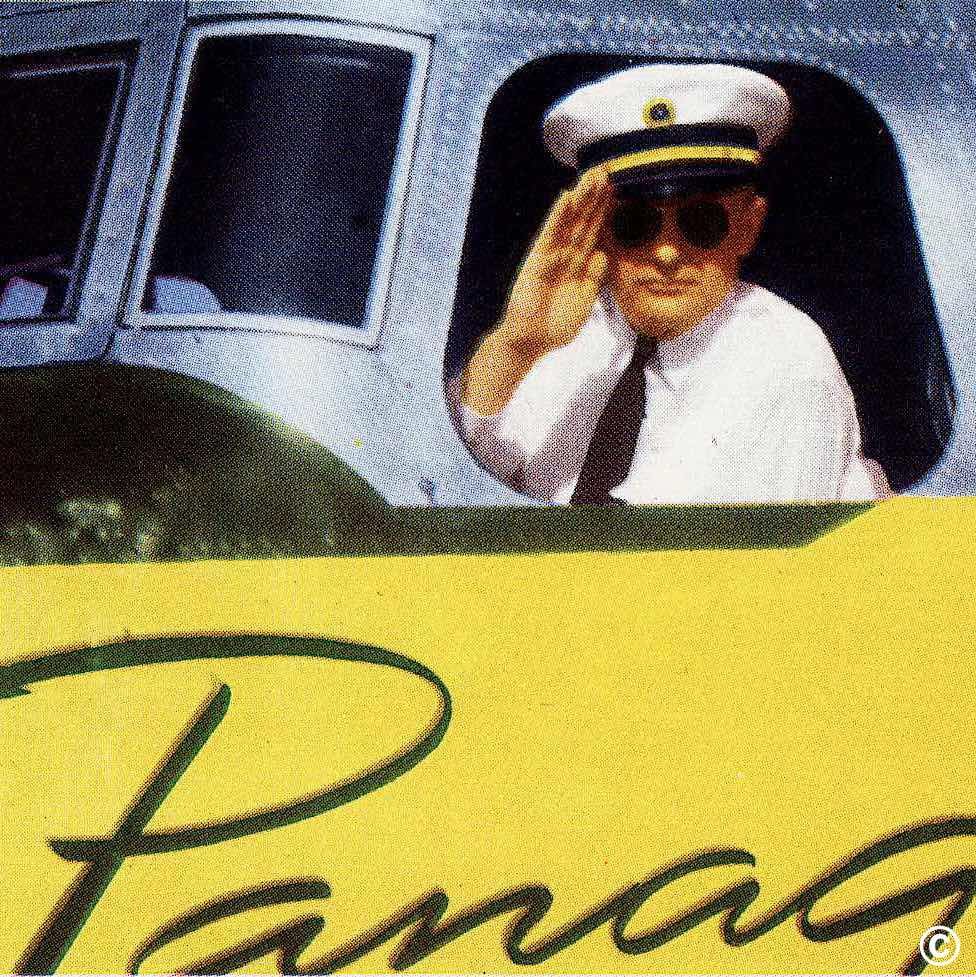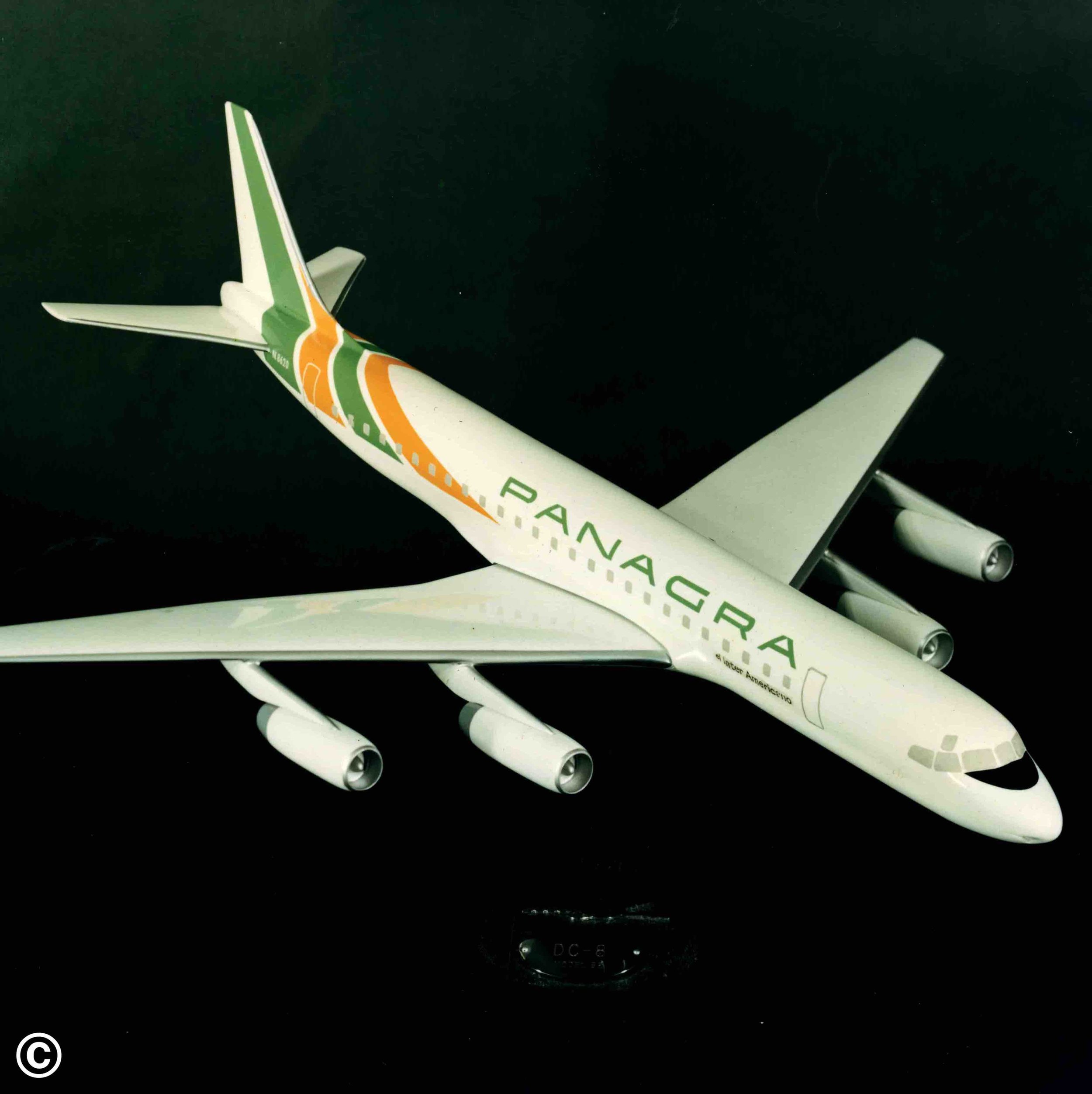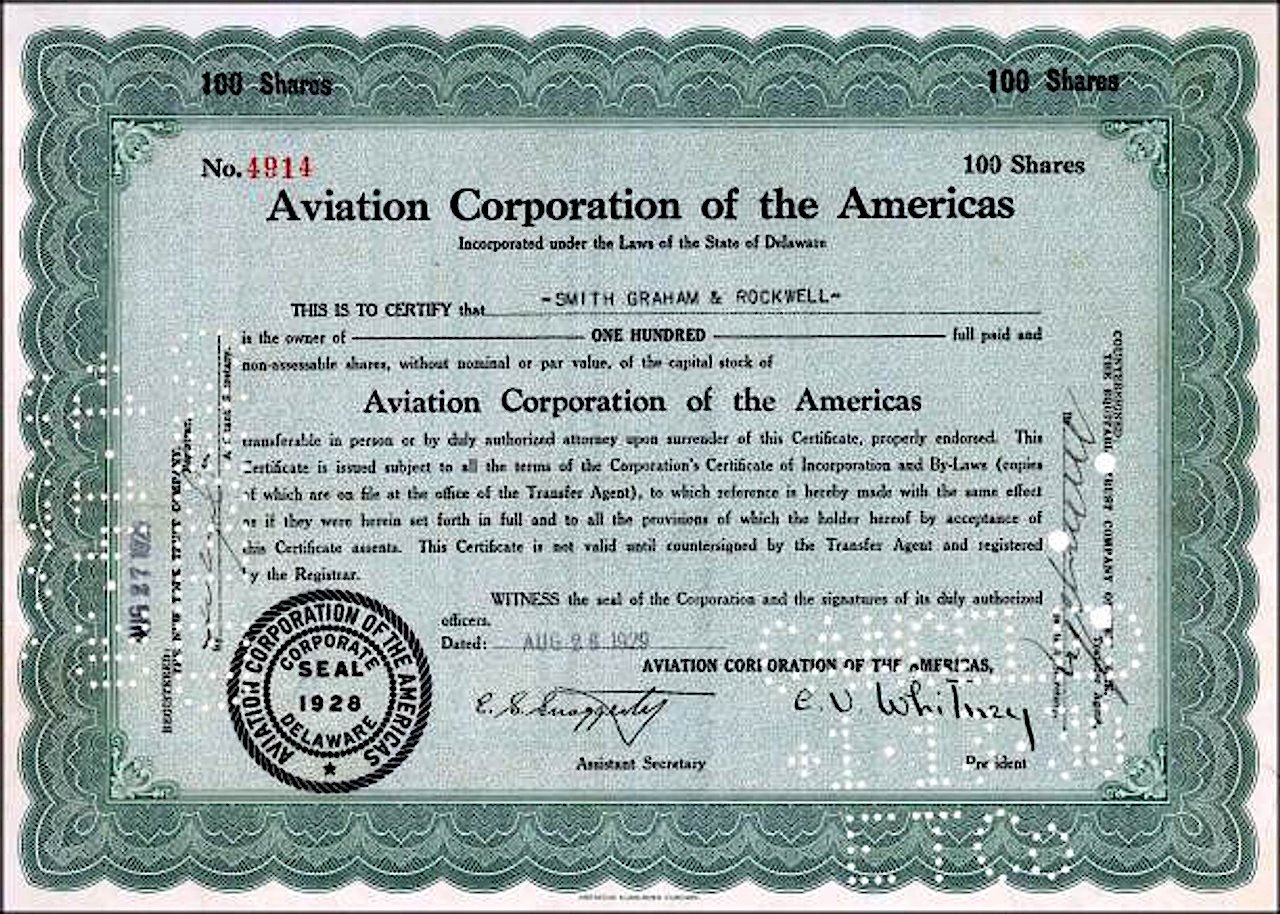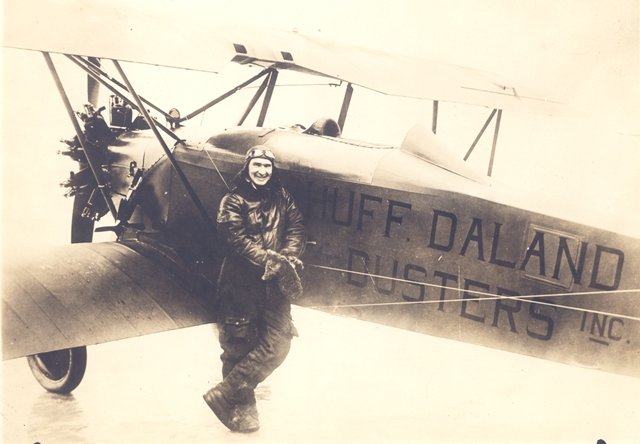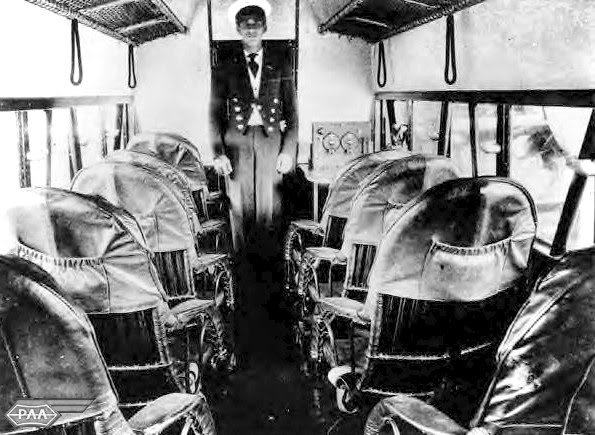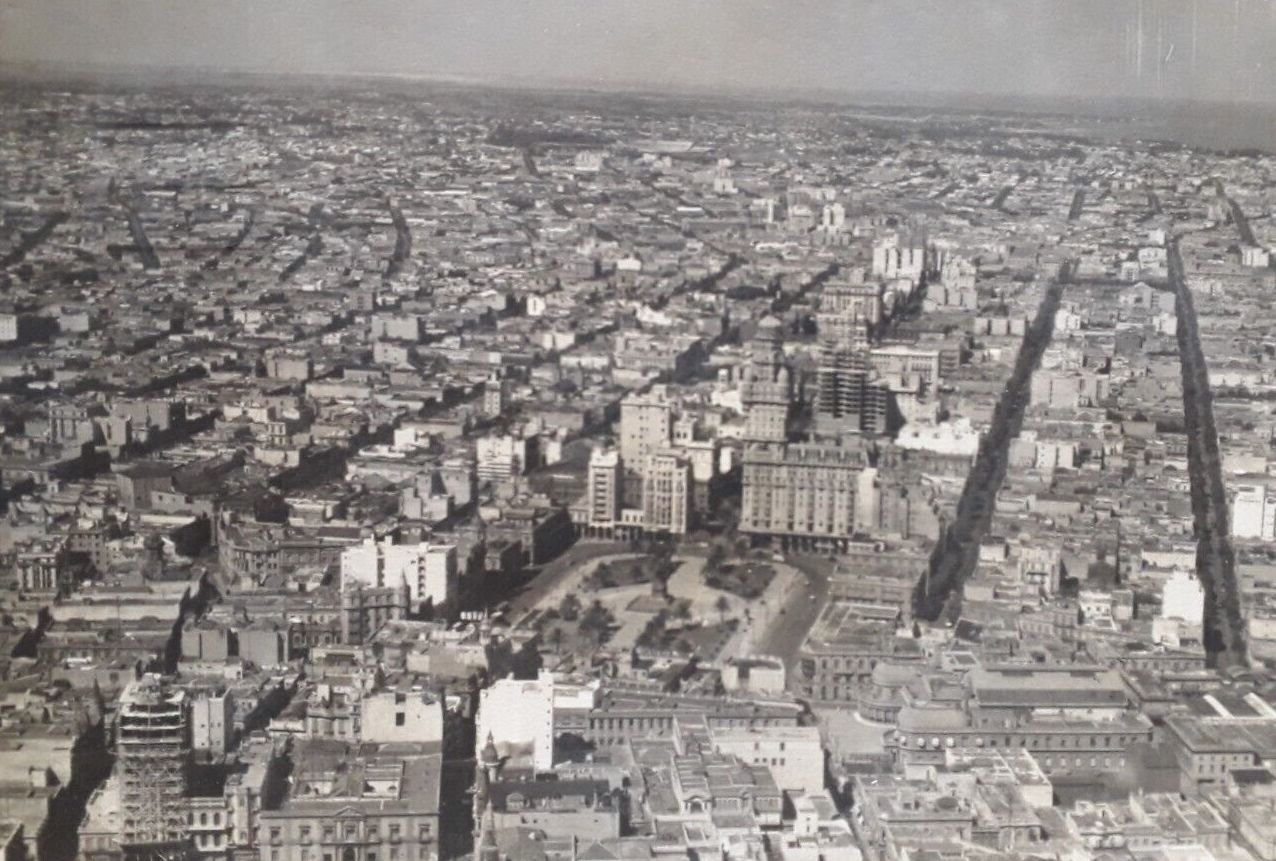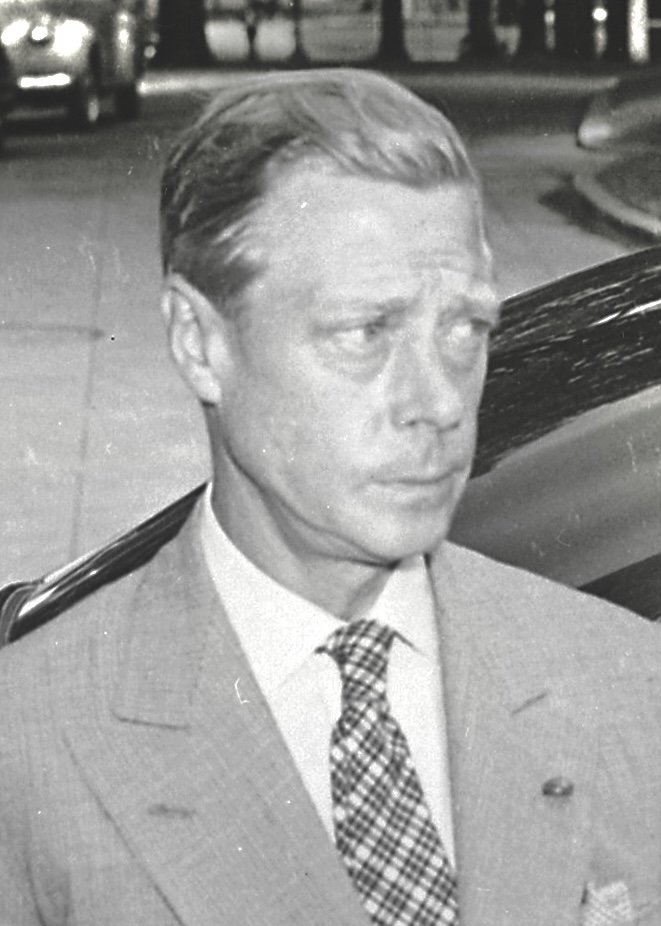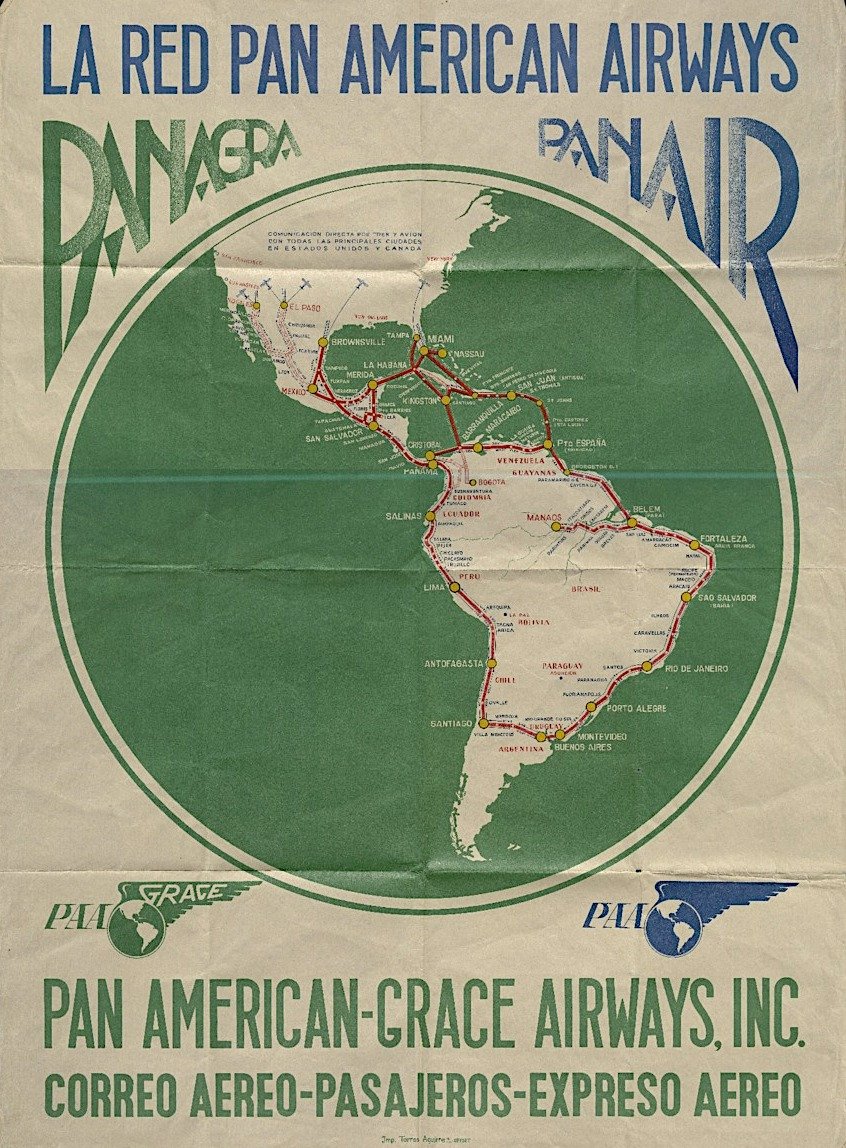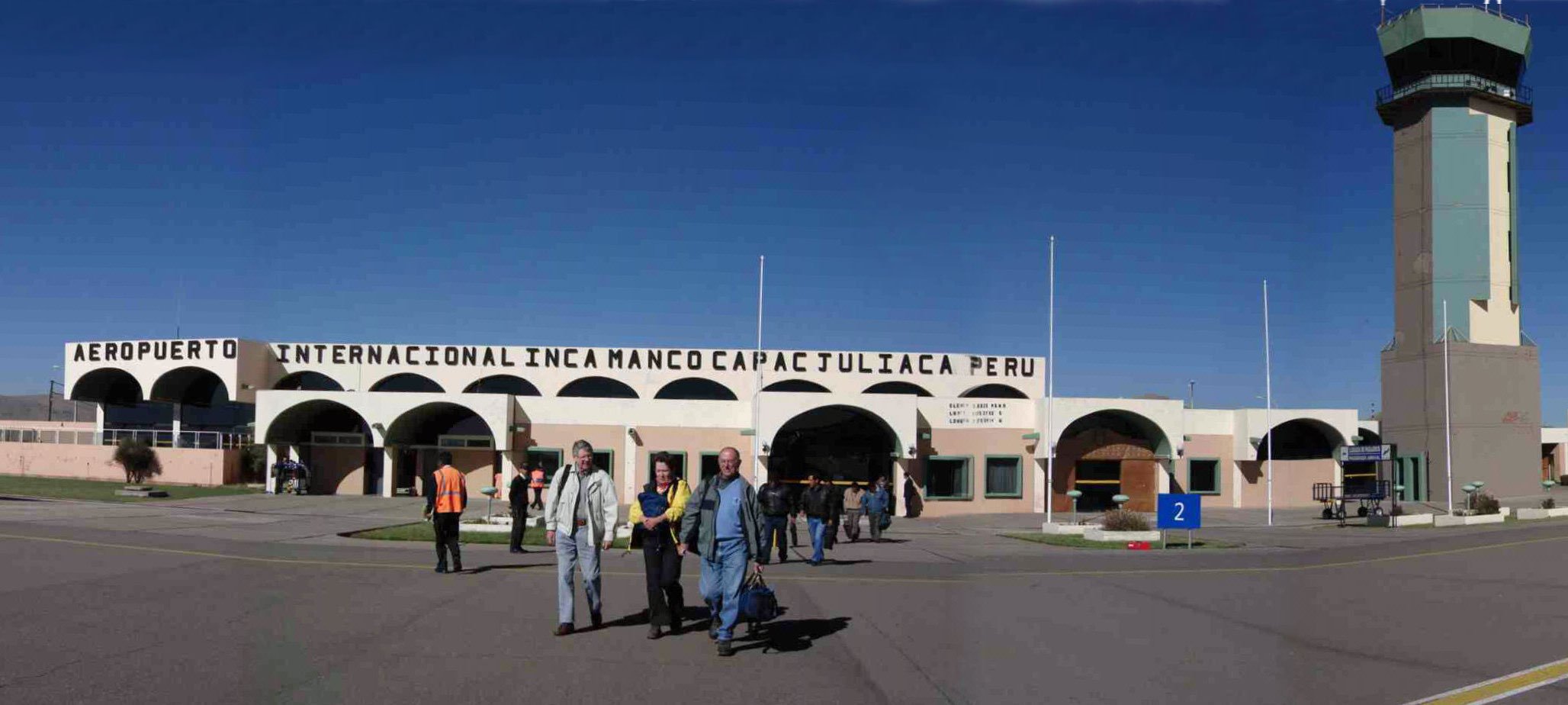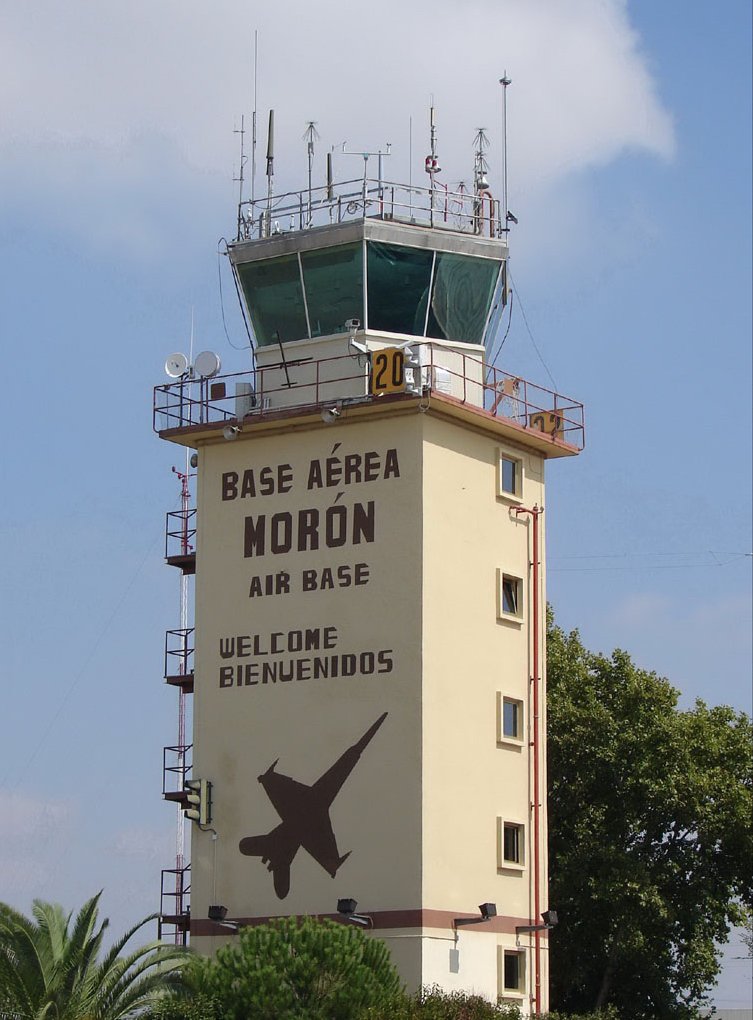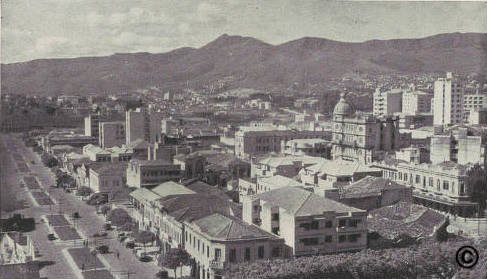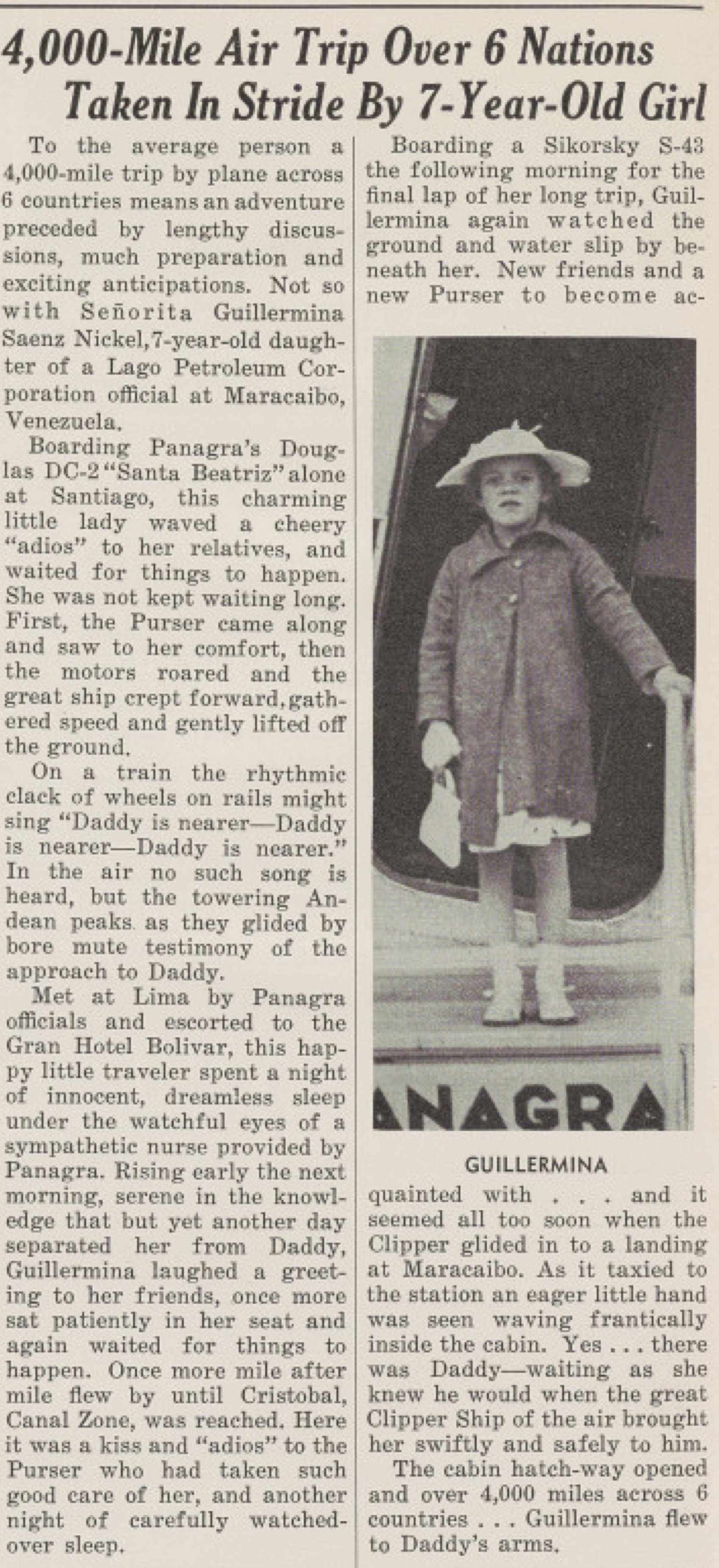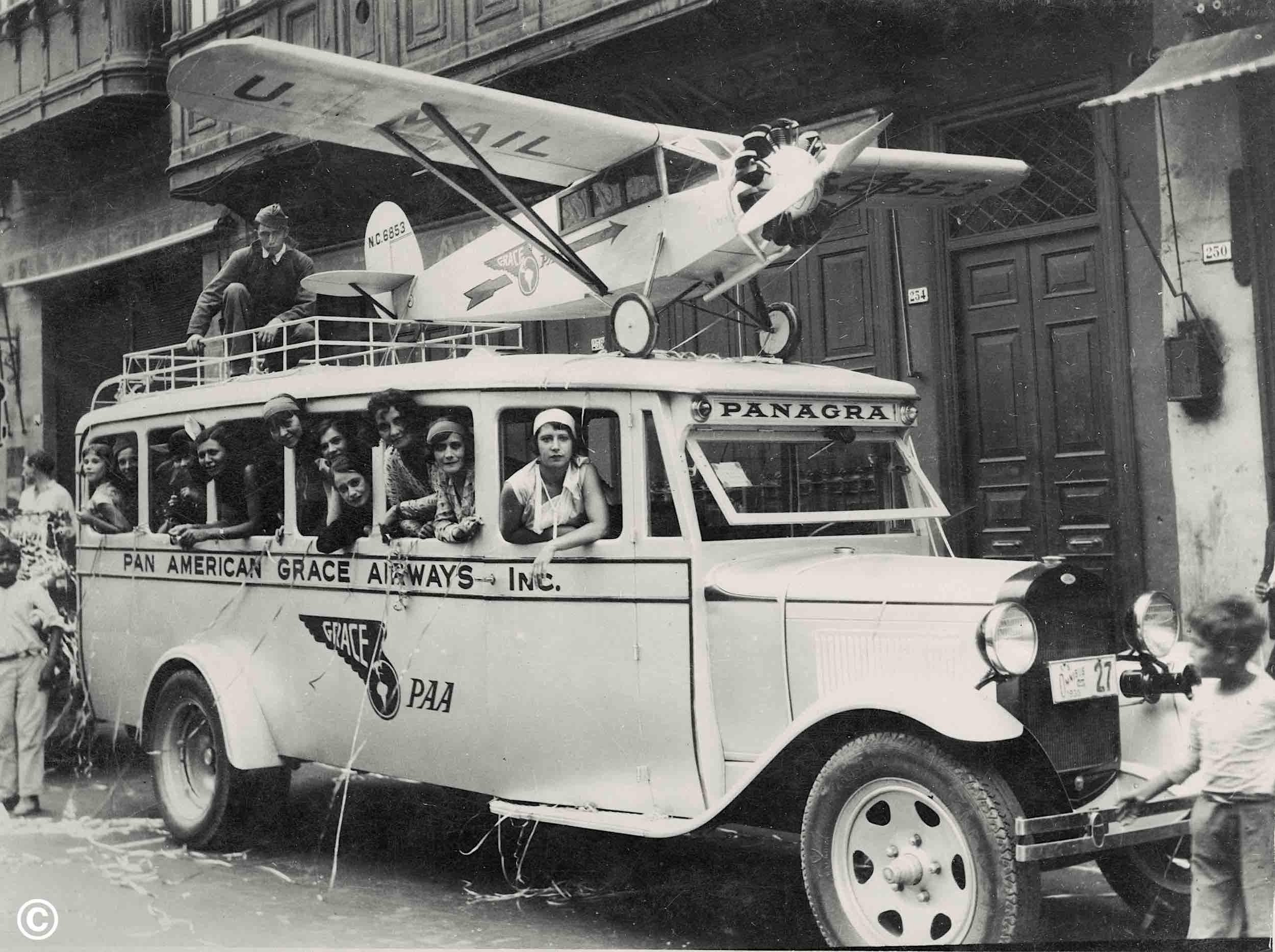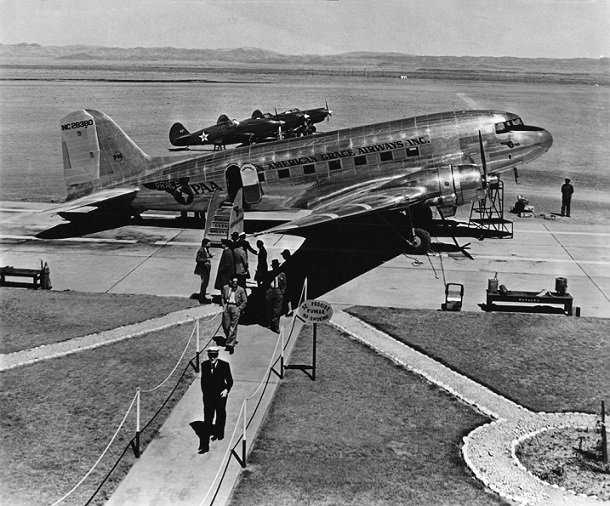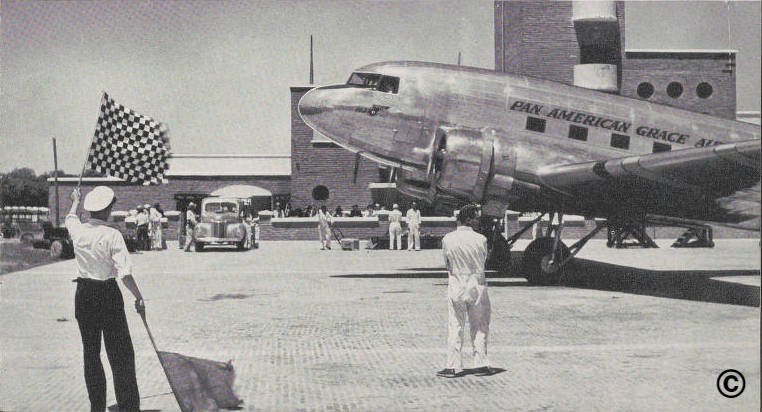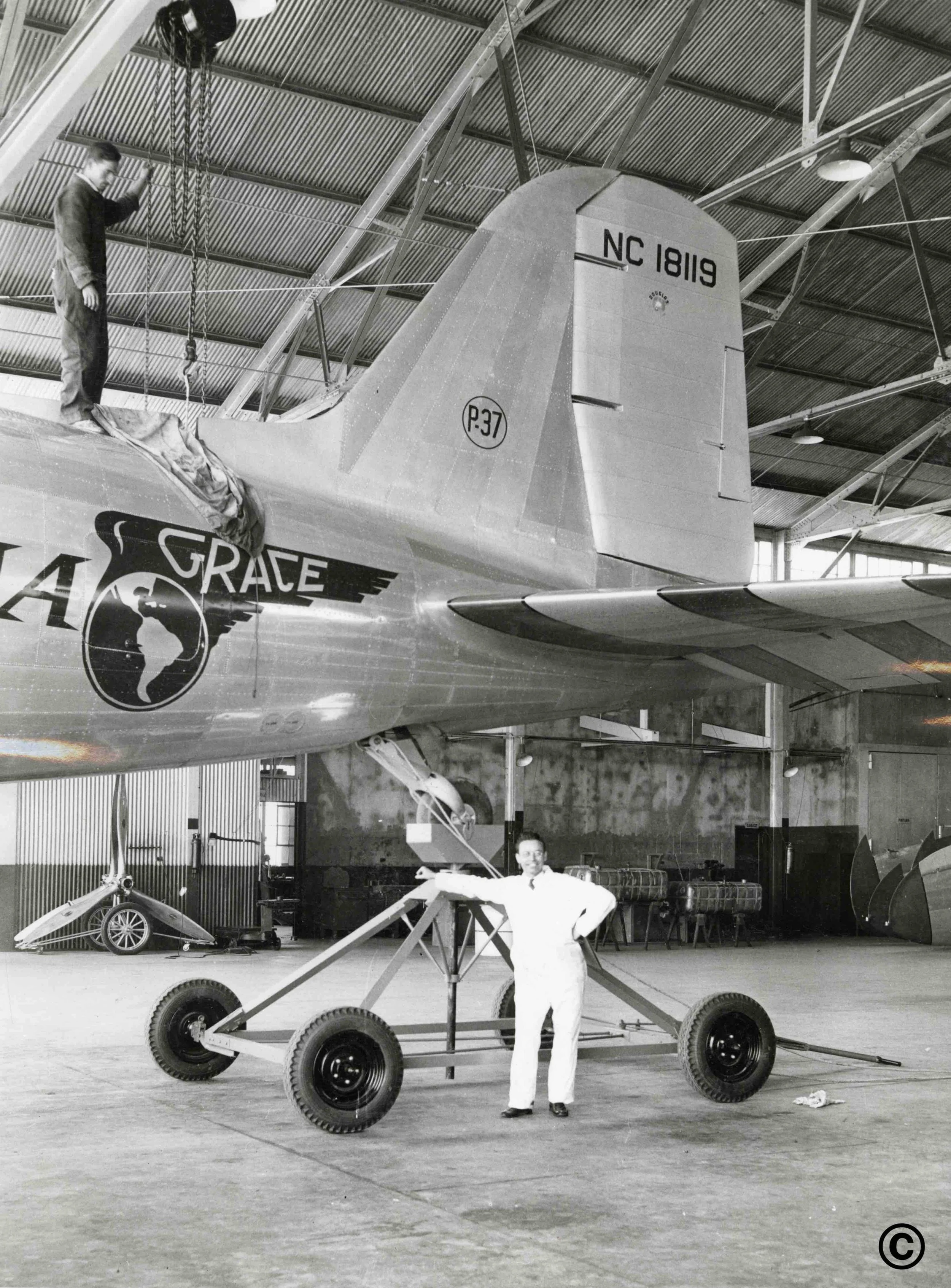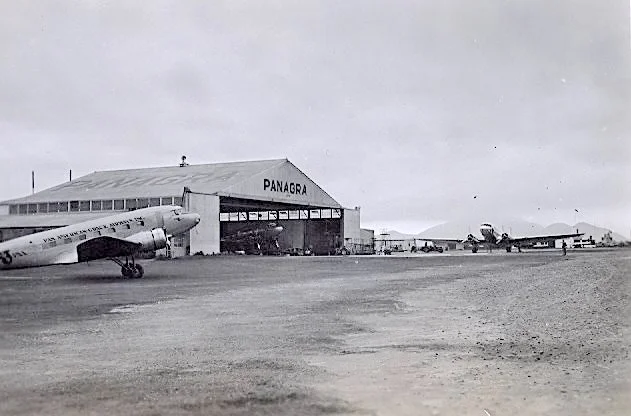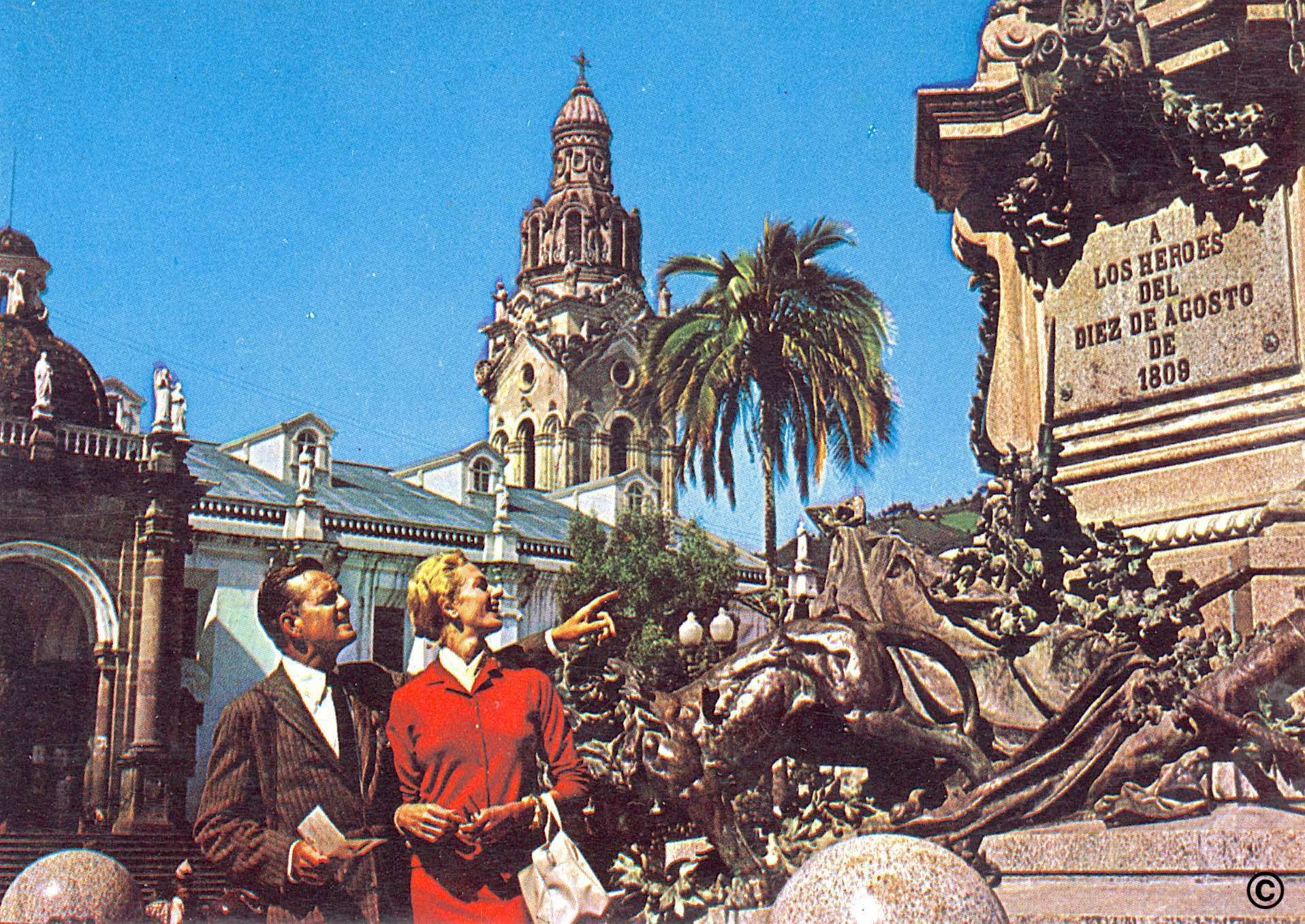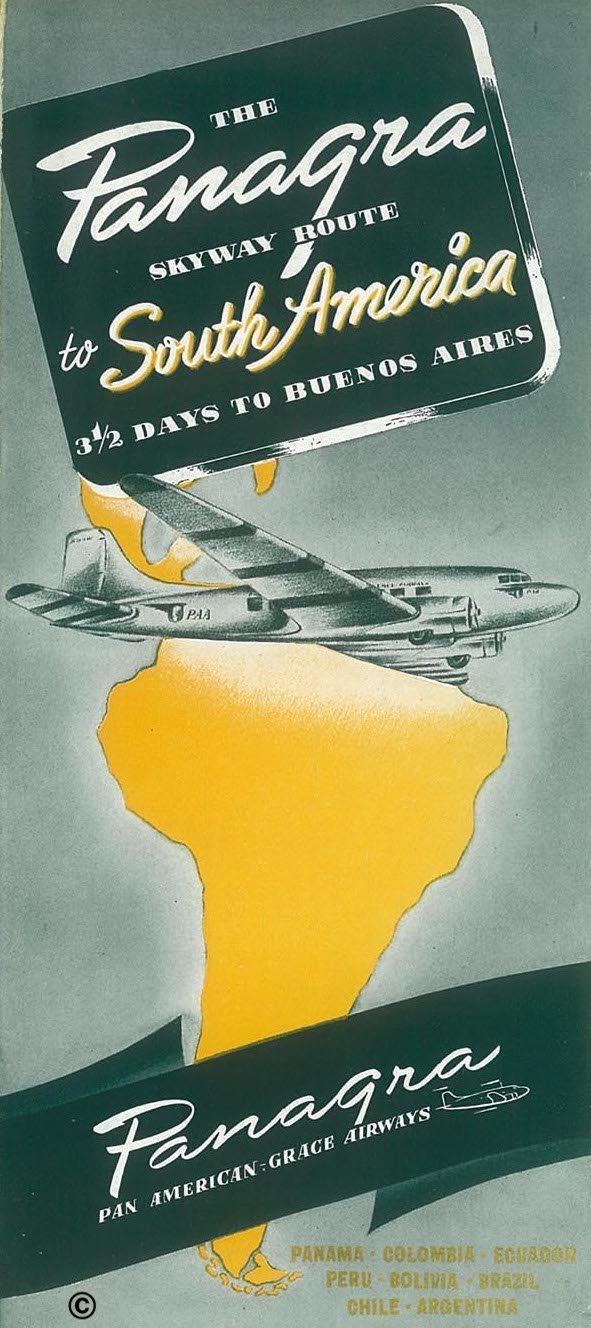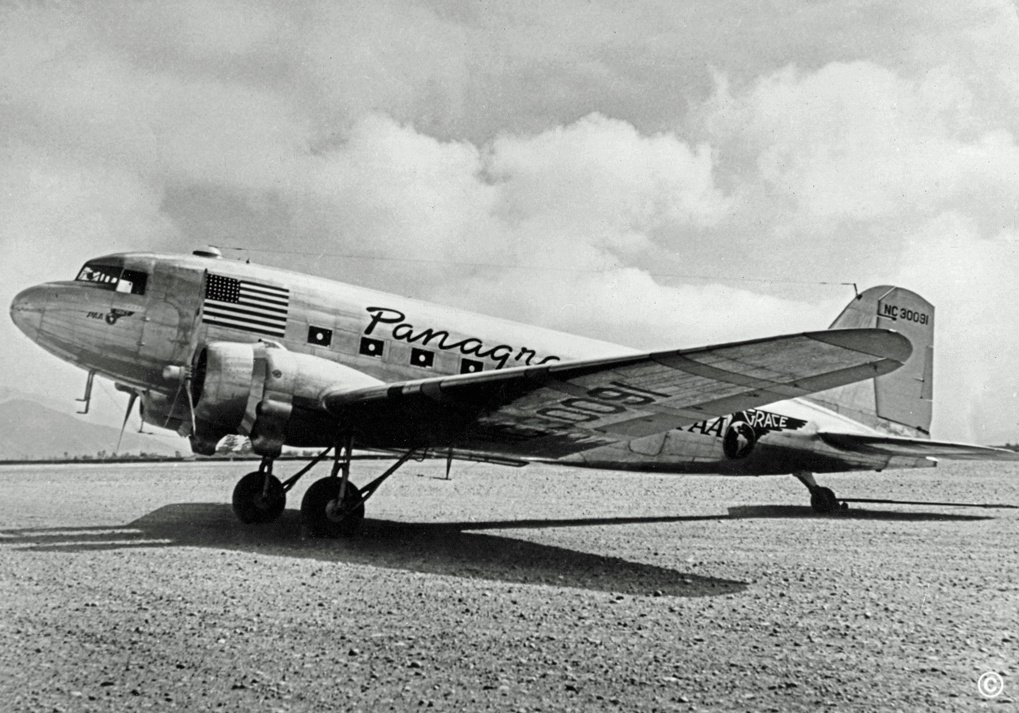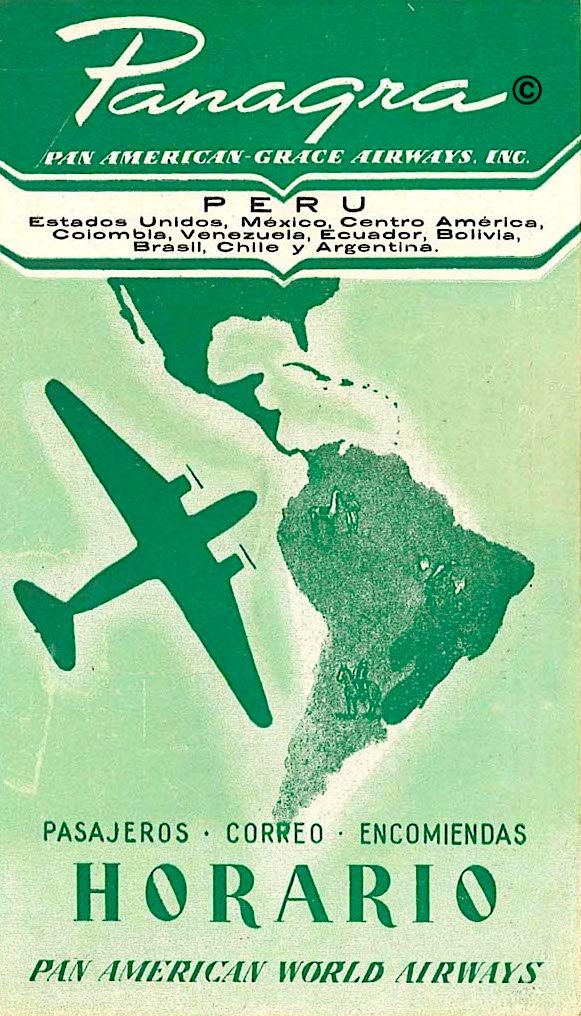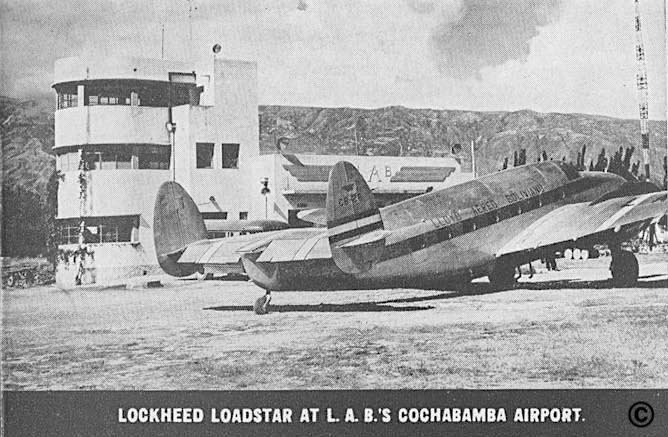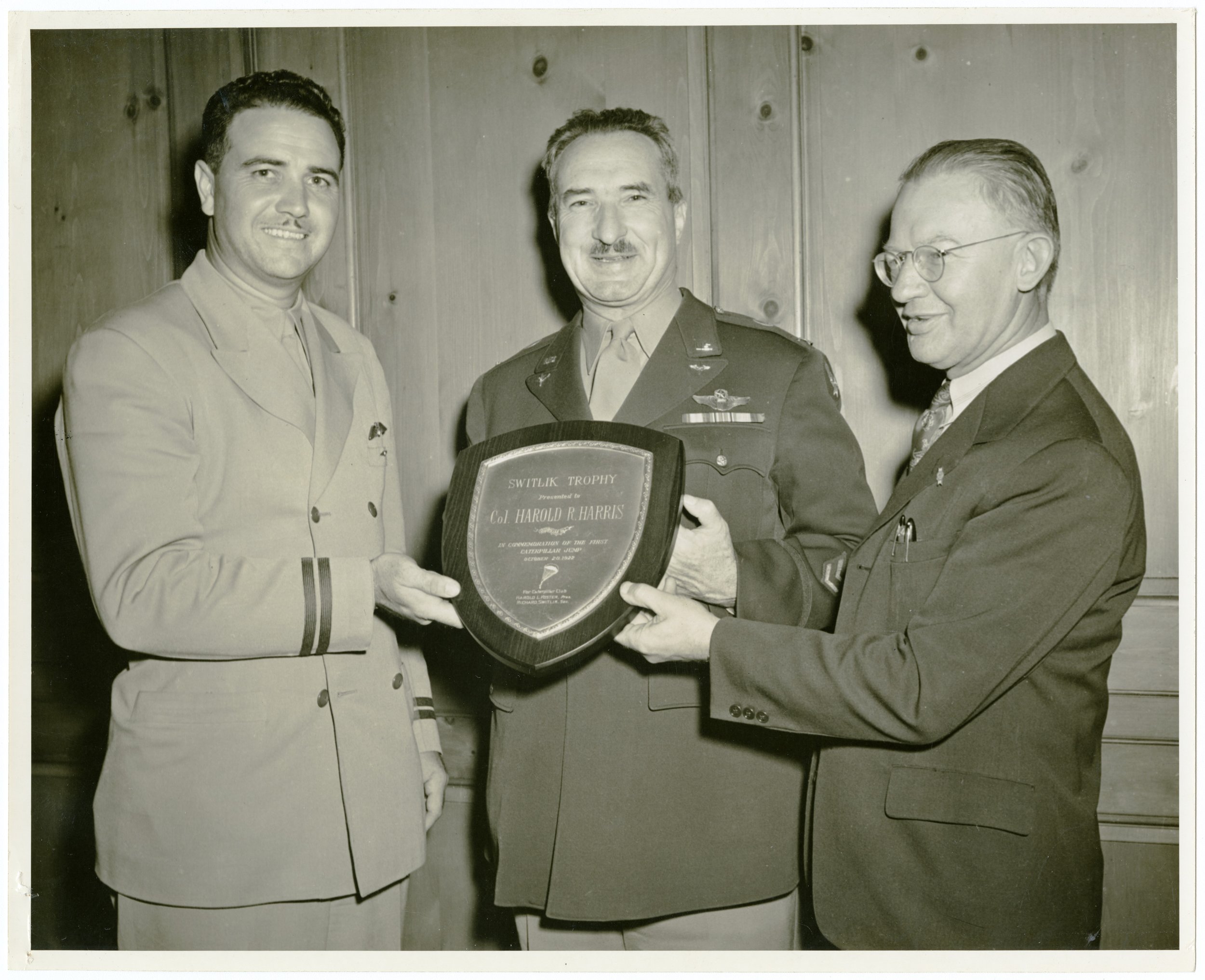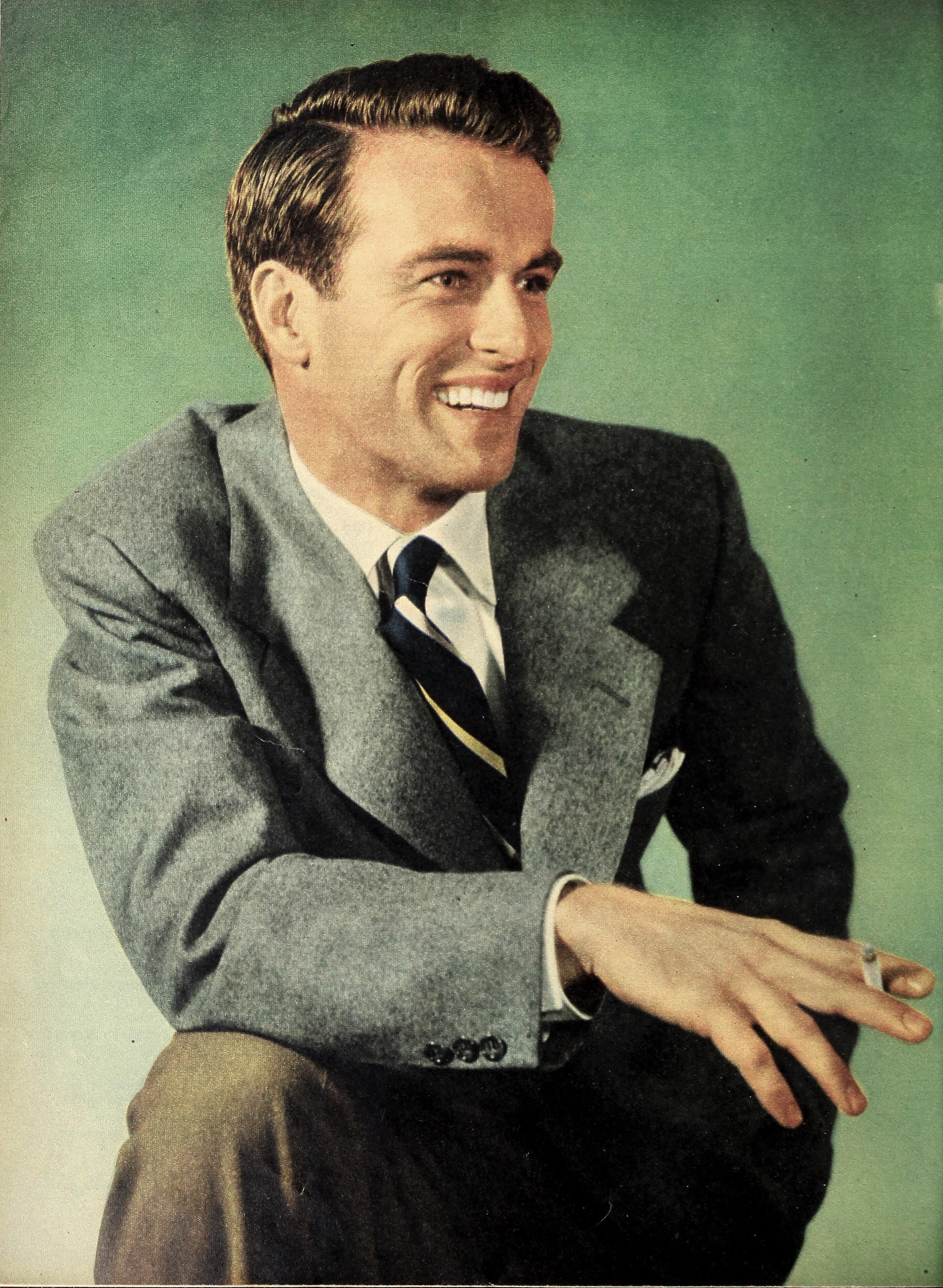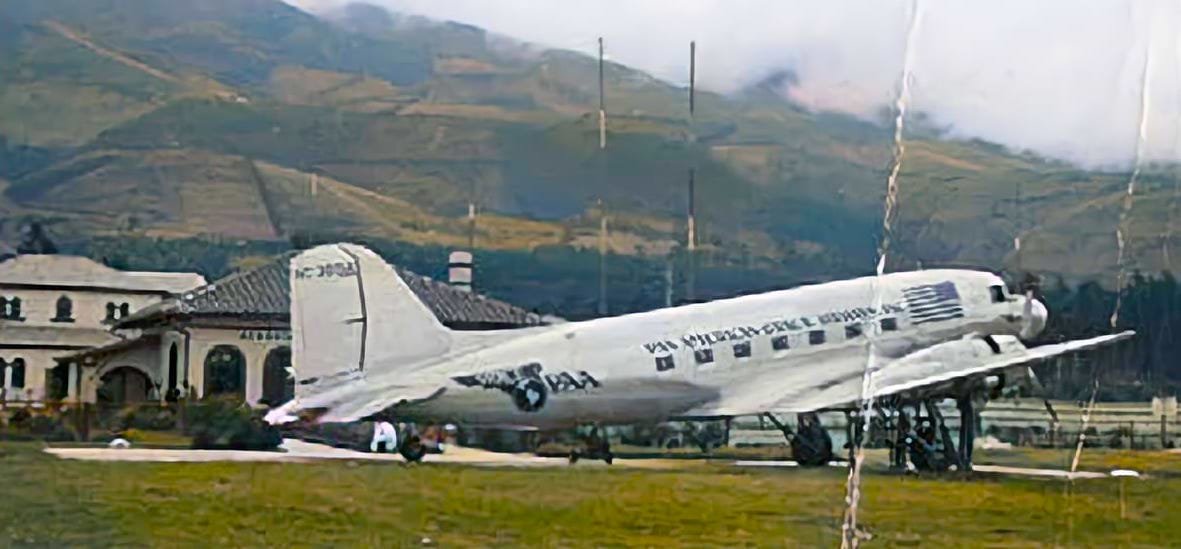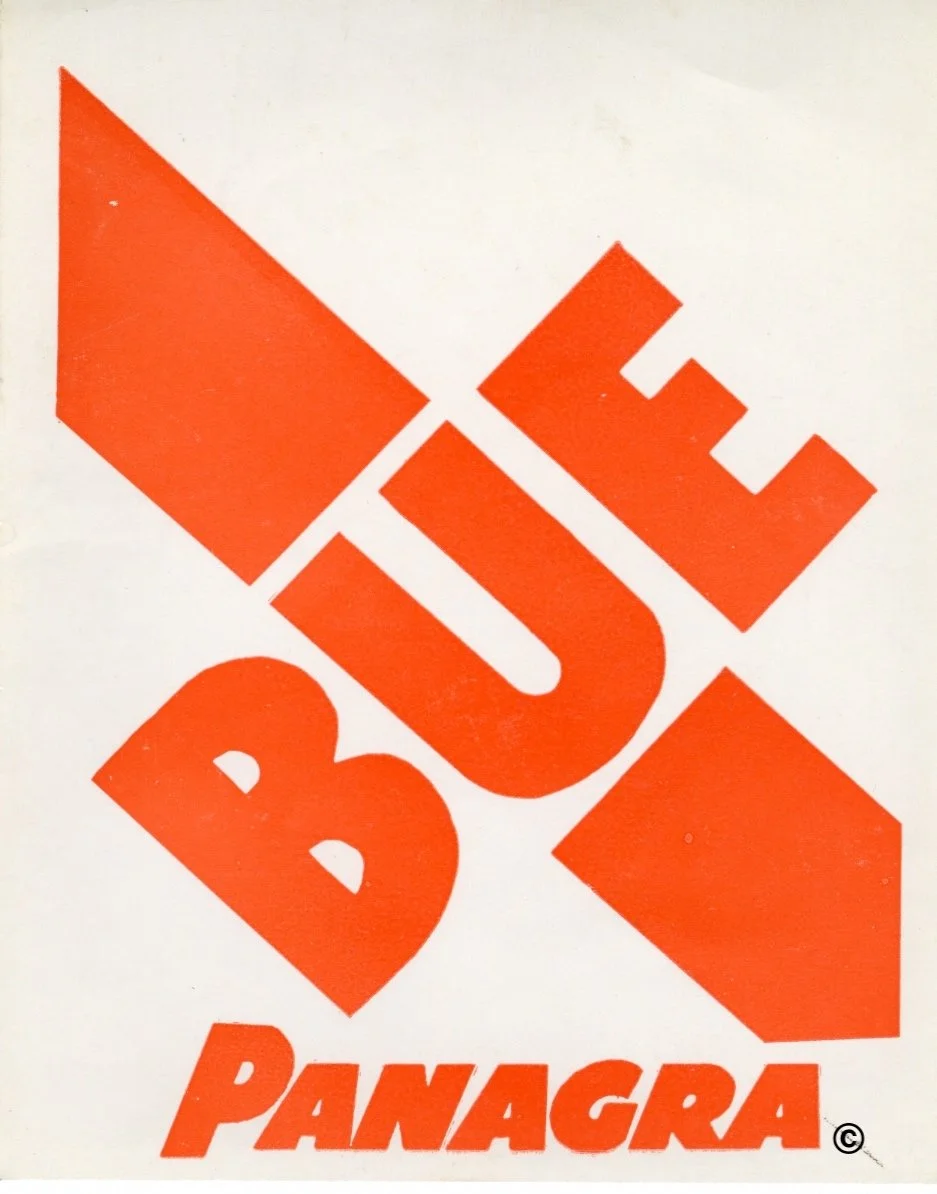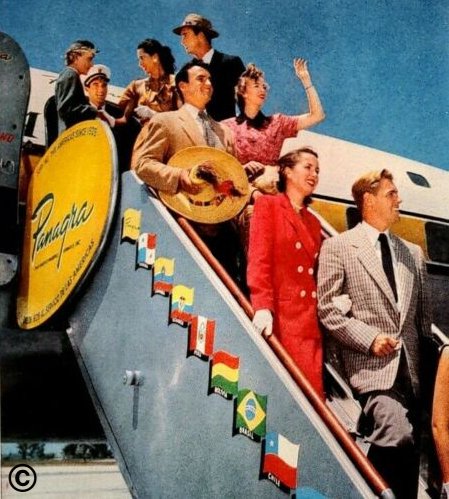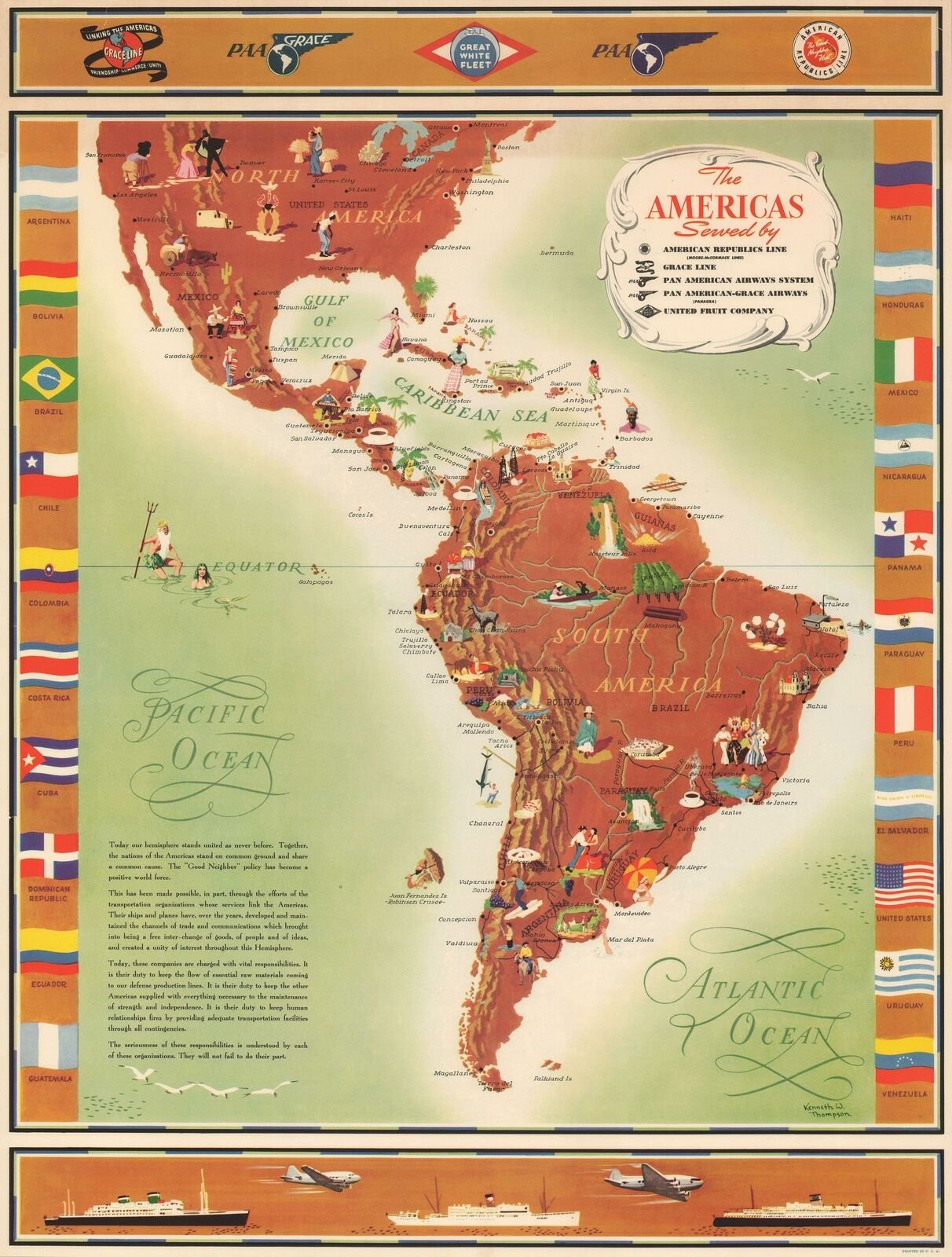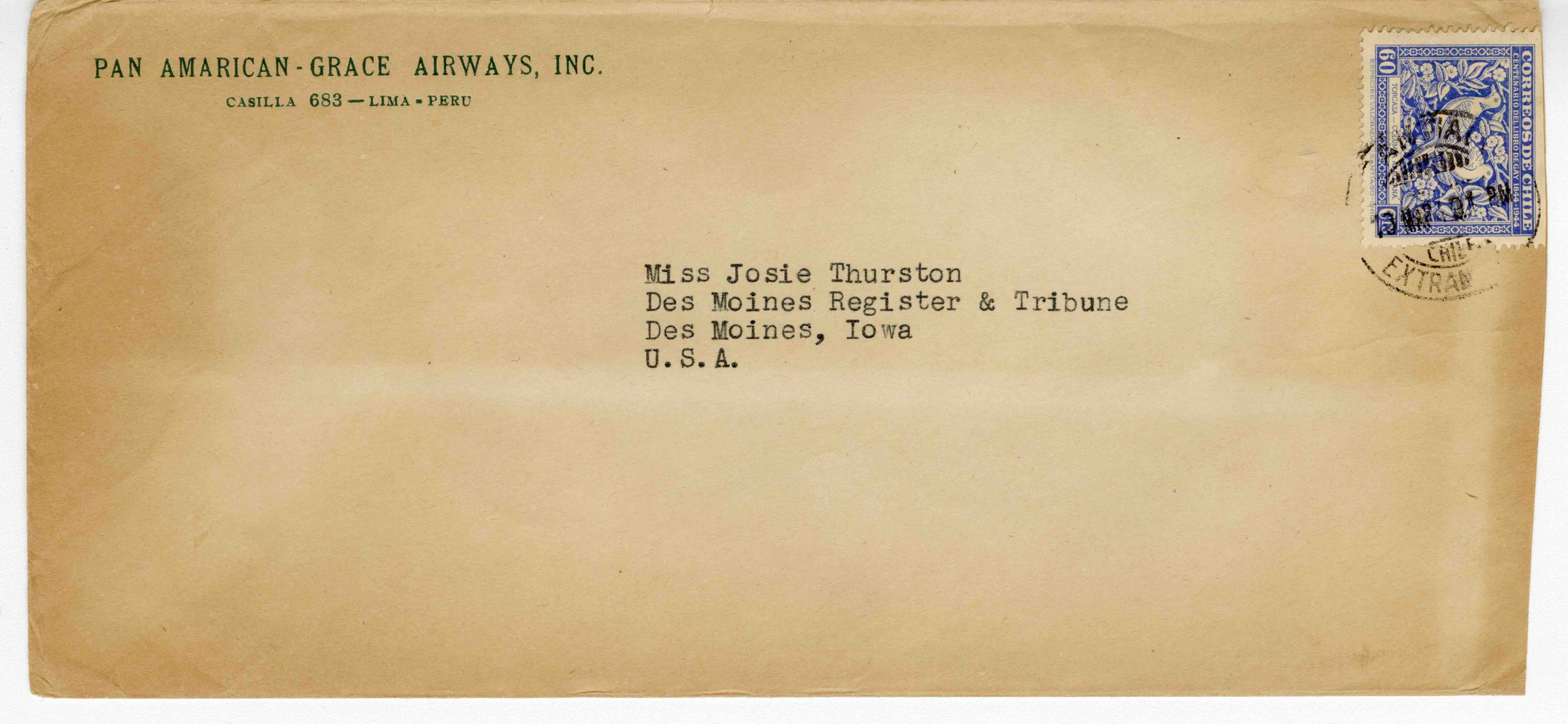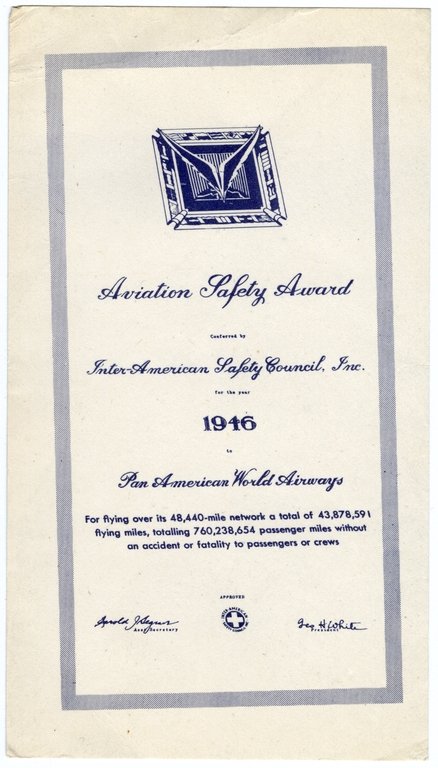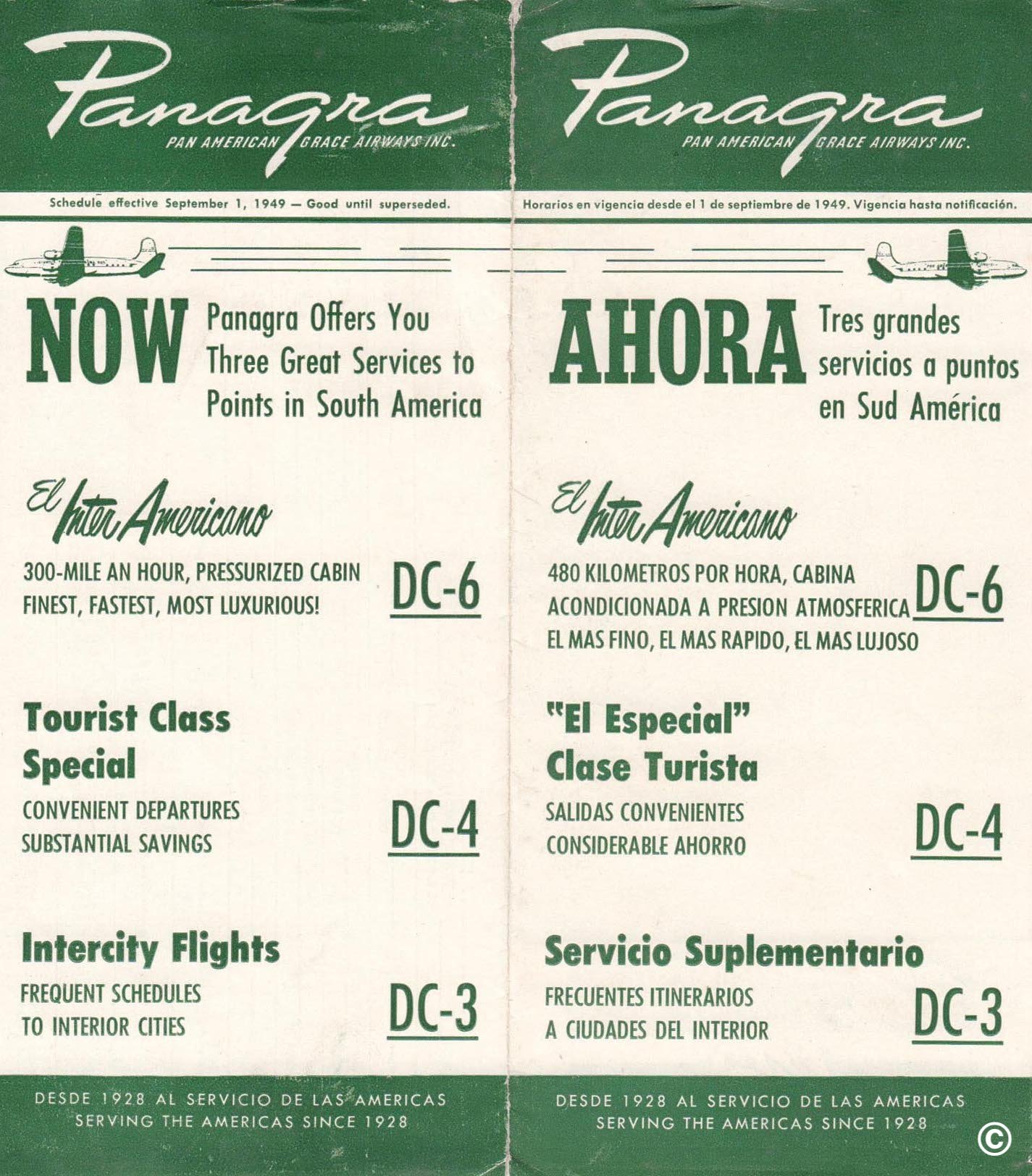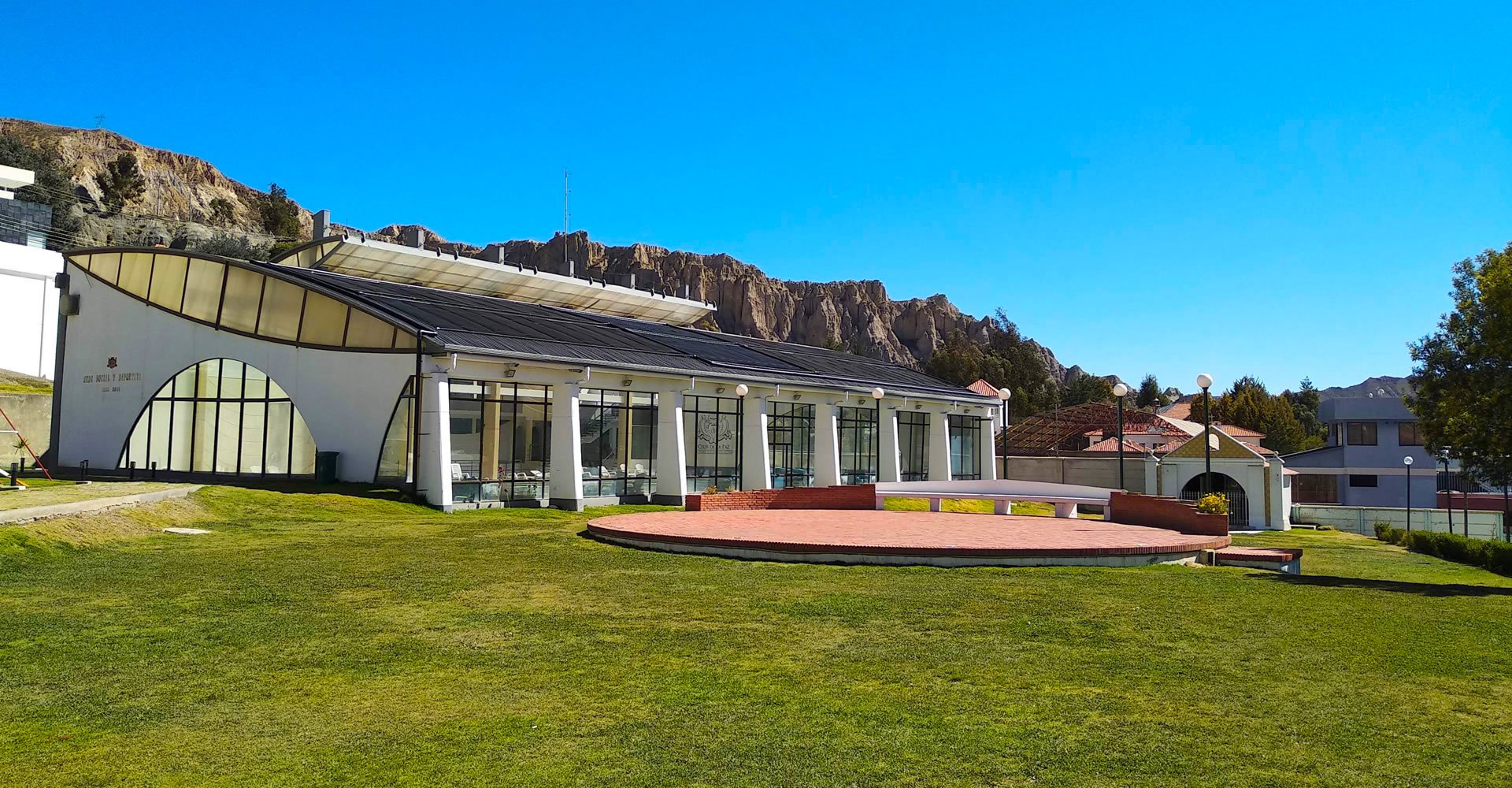Panagra Timeline 1928 to 1949
PAN AMERICAN-GRACE AIRWAYS PANAGRA
TIMELINE
1928 to 1949
1920 to 1929
June 1928
Pan American Airways Corporation, originally known as Aviation Corporation of the Americas is formed for the purpose of finding capital for its primary subsidiary Pan American World Airways to bid on US Foreign Air Mail contracts for carrying mail between the US Mainland and Latin America, and specifically South America. The contracts were soon to be announced by the US Postmaster General pursuant to the Foreign Air Mail Act of 1928. Pan American correctly believed that it was best suited to operate under any contracts that might be awarded
May and July 1928
Pan American is awarded three Foreign Air Mail contracts for service to Latin America. Pan American was awarded the contract for Foreign Air Mail Route (FAM) No. 5 for service between Miami and Panama in the Canal Zone. Interestingly, Pan American had already strategically decided that if it received FAM 5 then it would ask for extension services beyond the Canal Zone to and along the Western Coast of South America. The New York-based airline had also promulgated operating rights into Colombia, Panama, Ecuador and Peru, and had also purchased sufficient aircraft to operate the route system.
Photo: Captain Charles A. Lindbergh flew the inaugural Pan American World Airways flight from Miami to Cristobal, Panama, on February 4, 1929. The Sikorsky S-38 amphibian was used for the historic first flight. Copyright, Pan American World Airways Systems, Inc.
August 1, 1928
Pan American and W. R. Grace purchase its first aircraft, a new Fairchild FC-2 monoplane, registered in the United States as NC6853 and dubbed Ship P-1, which featured a cabin for four passengers and was powered by a Wright Whirlwind engine with an output of 220 horsepower.
Photo: Panagra donated its first aircraft to the Smithsonian Air and Space Museum in Washington, DC. Copyright, Smithsonian Air and Space Museum
August 31, and September 7, 1928
Two letters of intent, one dated August 31, 1928, and the second dated September 7, 1928, outline the proposed formation of a new corporation under the laws of the State of Delaware, jointly owned by Pan American World Airways and W. R. Grace and Company, for the purpose of operating air carrier operations to and from Peru.
Under this agreement both companies subscribe to $25000 USD of new capital stock in the new Panagra company, which would jointly study the possibility of operating air carrier and mail services between the Canal Zone and Valparaiso, Chile. If AVCO were to determine that it would be beneficial to bid on a mail contract for this type of service then W. R. Grace's initial contribution would be treated as stock in the new company giving W. R. Grace the option to obtain interest in the new venture not to exceed 50 percent of its capitalization
September 10, 1928
Peruvian Airways, Inc., is formed and becomes the new joint corporation formed between Pan American and W. R. Grace and Company. Both companies contributed $25,000 USD in capital to Peruvian Airways, forming a 50/50 partnership. Peruvian Airways was originally formed in 1927 and Huff-Daland Dusters of Peru, flew a mail contract for the company. Mr. C. E. Woolman was one of the original founders of Huff Daland company and later became the legendary leader of Delta Airlines, Inc.
Photo: Copyright, Delta Airlines, Inc.
September 13, 1928
A small Peruvian Airways single-engine Fairchild, registered NC6853 and dubbed Ship P-1, airliner flew from Lima, Peru, to Talara, Peru, which marked not only the beginning of flying operations of what would soon become Pan American Grace Airways but also the inauguration of the first scheduled air transportation along the West Coast of South America, carrying passengers and mail.
The little Fairchild carried just a few letters and a full load of four passengers on the inaugural flight, which departed from Santa Beatriz Race Track in Lima. Upon arrival in Talara, the legend-making airliner landed at an "airport" in Talara that was a soccer field. In spite of these drawbacks, Pan American Grace Airways first flight had been successfully completed without incident.
Photo: Well-wishers gather around Panagra’s first airliner before it departs on the first passenger and airmail flight in Peru, from Lima to Talara, Peru. Panagra Captain Dan E. Tobin commanded the historic flight. Copyright, Braniff Airways, Incorporated.
November 30, 1928
Inauguration of service from Lima, Peru, to Guayaquil, Ecuador, with passengers and carrying greetings from the President of Peru, US Ambassador for Peru, Mr. Moore and US Ambassador for Chile, Mr. Culbertson, to US President Herbert Hoover who was on board the USS Maryland, which was off the coast of Ecuador. After President Hoover’s election to the Presidency in November 1928, he embarked on a Good Will Tour to Latin America.
Photo: President Hoover aboard the USS Maryland for his Good Will Tour to Latin America in 1928. President Hoover is meeting Nicaraguan President Adolfo Diaz at Corinth, Nicaragua on November 28, 1928. Copyright, National Archives
December 18, 1928
Peruvian Airways takes delivery of its second Fairchild FC-2 single-engine airliner, registered as NC8026 and dubbed Ship P-2. The big four passenger aircraft was powered by an equally big and powerful Pratt and Whitney Wasp engine capable of producing 425 horsepower.
Photo: Peruvian Airways Fairchild FC-2 at Lima, Peru, in 1928. Copyright, Braniff Airways, Incorporated
December 31, 1928
Pan American President Juan Terry Trippe purchases 50 percent of Chilean Airways, which never operates as an air carrier. Both Peruvian Airways and Chilean Airways are eventually merged to form Pan American Grace Airways, Inc.
Photo: Time Magazine Cover 1953. Copyright, Time, Inc.
January 1, 1929
The third Fairchild FC-2 airliner is delivered to Peruvian Airways, which is designated as Ship P-3 NC9723 , which featured increased passenger capacity to six.
Photo: The small single-pilot cockpit of Panagra’s Fairchild FC-2 airliner. Copyright, NASA Langley Research Center
January 31, 1929
The US Postmaster General issued need for a contract for Foreign Air Mail Route No. 9, which would extend from Panama extending down the West Coast of South America to Santiago, Chile, with an option for the Postmaster General to offer extension services from Santiago across the lower belt of the Andes Mountains to Buenos Aires, Argentina, and beyond to Montevideo, Uruguay
February 21, 1929
Pan American World Airways and W. R. Grace and Company announce the formation of Pan American Grace Airways, Inc., to bid on the new air mail contract, which is formed by merging of Peruvian Airways and Chilean Airways.
The new company bid on the contract and both partners subscribe $500,000 USD each to the capitalization of the new Pan American Grace company, which also includes the original amounts subscribed to the original operating entity, Peruvian Airways Corporation.
Pan American Grace Airways is initially known as P. A. G. A. I. The Panagra nomenclature was not used until later
March 1, 1929
The new Pan American Grace Airways, Inc., takes delivery of a fourth Fairchild, Ship P-4, with six passenger carrying capacity, while the fifth Fairchild Model P-5 is delivered to Santiago, Chile.
Photo: Pan American-Grace Airways Fairchild FC-2 Ship P-4 registered as NC8039 is flying high over Peru in 1929. Copyright, Braniff Airways, Incorporated
March 2, 1929
The Foreign Air Mail Act of 1928, is modified on this day by the updated Foreign Air Mail Act of 1929, by allowing the US Postmaster General to pay air carriers for transportation from foreign countries to the United States in addition to the outbound direction and the Postmaster General could further amend the contracts originally issued under the Act of 1928 with the same new provisions.
Accordingly, on this same day, the Postmaster awarded Pan American-Grace Airways with its first foreign air mail contract, FAM No. 9. Several other carriers had also bid on the new Route 9 and several had bid lower than Panagra. However, the Postmaster General noted that it was his discretion as to what carrier is ultimately selected. The Postmaster General stated that Pan American's experience in the region put it well ahead of the other bidders and was therefore the lowest "responsible bidder" that could satisfactorily serve the needs of the government.
It was found by the Postmaster General that Pan American had spent two years in preparing for the new route down the West Coast of South America and the company's successful operation of service in the Caribbean as well as the significance of the infrastructure already in place along the proposed routes along the West Coast that were in operation and in place by W. R. Grace and finally the financial abilities of Pan American and W. R. Grace played an additional significant role in the award.
Photo: Panagra Foreign Air Mail Route FAM 9 Route Graph from May 1929. Copyright, Aerodacious.com
May 13, 1929
Panagra inaugurates service from Lima, Peru, The City of Kings, to Arequipa, Peru, a city founded in 1540 and home to the magnificent Basilica Cathedral
April 1, 1929
The sixth Fairchild, Ship P-6, six-passenger airliner is delivered to Panagra
May 4, 1929
First Airmail service from Lima, Peru, to Cristobal, The Panama Canal Zone
May 18, 1929
Pan American-Grace Airways inaugurates the first Air Mail flight from Hipodromo de Santa Beatriz Race Track at Lima, Peru, to the United States, landing first at Cristobal, Panama, and then continuing to Miami, Florida. The flight was piloted by Captain Frank E. Ormsbee.
Photo: The Hippodrome of Santa Beatriz Race Track at Lima, Peru, served as the airport for Panagra’s earliest historic flights. Today, the Hippodrome observation stand at El Campo de Marta, one of Lima’s largest parks, remains but a new park was built south of town in Jesus Maria. Copyright, PUCA Peru
May 19, 1929
The first airmail from the US arrived at Lima, Peru, from Miami, Florida, via Cristobal, Panama, again piloted by Captain Frank E. Ormsbee with Fairchild FC-71 registered as NC9798. The mail was received by the President Augusto B. Leguia y Salcedo of Peru and Ambassador Moore of Peru
July 16, 1929
Pan American Grace inaugurated the first Airmail service from the United States to Santiago, Chile. Until the end of 1929, Pan American operated the route as far south as Guayaquil, Ecuador, which included the use of PAA aircraft and personnel.
Photo: FAM 9 extension route graph from Miami to Santiago, Chile. Copyright, Aerodacious
July 21, 1929
Inaugurates the first Airmail service from Santiago to the United States, via Cristobal, Panama, and Miami, Florida
August 11, 1929
Panagra’s first Ford Trimotor registered as NC8416, dubbed Ship P-8, is assembled in Guayaquil, Ecuador, and then is flown to Lima, Peru. The new aircraft is Pan American-Grace Airways’ largest to date, with seating for 12 passengers and powered by three huge Pratt and Whitney Wasp radial engines. The Archbishop of Lima His Eminence Emilio Juan Francisco Lisson y Chavez christened the new liner “Santa Rosa”
September 2, 1929
The second Ford Trimotor registered as NC8418 Ship P-9, departs Lima, Peru, for Santiago, Chile, where the big craft is baptized “San Cristobal”.
Photo: A unique September 1928 advertisement from Ford Motor Company touting the interior comfort of their Ford Trimotor airliners. Copyright, Ford Motor Company
October 5, 1929
The first Airmail for Buenos Aires, Argentina, departs New York City, via Miami, Cristobal and Lima
October 12, 1929
Just thirteen months after its first history making first flight, Panagra inaugurated the first successful commercial fight across the Andes Mountains. Pan American-Grace's little Ford Trimotor christened San Cristobal and registered as NC8418 airliner departed Moron Airport at Buenos Aires, Argentina, and headed east toward the Western Coast of South America. The venerable Ford flew over the flat pampas and then landed at Mendoza, Argentina, where it refueled and prepared for the next leg of the trip.
Back in the air, the Trimotor crossed the Cordillera of the Andes and then through Upsallata Pass where it crossed at an unheard altitude of 18,000 feet Mean Sea Level, successfully. Having left the Argentine capital city eight and one-half hours earlier, the Ford Trimotor landed at Santiago's Los Cerrillos Airport in Chile. The famed Ford was also making history by departing on the first Airmail flight from Buenos Aires to the United States.
Photo: Well wishers and crew are preparing Panagra’s Ford Trimotor for the first northbound airmail flight to the United States from Moron Airport at Buenos Aires, Argentina. Copyright, Braniff Airways, Incorporated
November 30, 1929
Pan American Grace inaugurates the first Airmail service from Montevideo, Uruguay, to the United States.
Photo: One of the many magnificent city parks at Montevideo, Uruguay. Copyright, Braniff Airways, Incorporated
December 8, 1929
Panagra’s third Ford Trimotor registered as NC400H Ship P-10 and dubbed “Santa Mariana” is baptized at Guayaquil, Ecuador
1930 to 1939
January 1, 1930
Panagra welcomes its first seaplanes with the arrival of a twin-engine Sikorsky S-38 amphibian powered by Pratt and Whitney Wasp engines, for use on the company’s Northern Division
January 16, 1930
The company inaugurates passenger service between Cristobal, Panama, and Arica, Chile.
Photo: Though far from opulent, the Ford Trimotor interiors were comfortable and the best service provided by Panagra stewards. Copyright, Braniff Airways, Incorporated
April 26, 1930
Pan American-Grace Airways makes a significant move to streamline its flight schedule. Dubbed the New Fast Schedule, it cut flight times in half compared to the old schedule. In March 1929, pilots Major General Clements McMullen, USAF and Lieutenant W. W. White, USAF, flew from Buenos Aires, Argentina, to New York City, New York in only five and a half days with intermediate stops only for gas and oil, as required.
This flight was flown with a single-engine Lockheed Vega strictly as an advertising and promotional stunt. The registered flying time was 52 hours and 15 minutes over a distance of 6870 miles at an average speed of 130 miles-per-hour.
However, Panagra flew the same route but with its required intermediate stops in just six and a half days.
Photo: Wealthy business travelers were a constant aboard Panagra flights from the US Mainland to South America. These gentlemen have just arrived at Lima, from Cristobal in 1930. Copyright, Braniff Airways, Incorporated
June 1, 1930
The first new Lockheed Vega airliner registered as NC9424, dubbed Ship P-14, with a Pratt and Whitney Wasp engine is delivered and is capable of carrying six passengers.
Photo: Panagra’s first new Lockheed Vega arrives at Lima, Peru. Copyright, Braniff Airways, Incorporated
July 1, 1930
New service begins between Montevideo, Uruguay, and Cristobal, Panama Canal Zone, two times each week.
Photo: The sprawling metropolis of Montevideo, Uruguay, is impressive from an aerial view in 1930. Pan American-Grace served Montevideo and then west, while Pan American World Airways served eastbound.
August 1, 1930
The company welcomes the arrival of its second Lockheed Vega single-engine airliner registered as NC397H dubbed Ship P-15.
Photo: Panagra’s spacious maintenance hangar at Moron Airport, Buenos Aires, Argentina, features a Ford Trimotor in the hangar and a Lockheed Vega L-5 aircraft. Copyright, Braniff Airways, Incorporated
October 1, 1930
Another new Ford Trimotor is delivered to Panagra, with Pratt and Whitney Wasp engines with new Townend ring cowling, which increases the Trimotors speed by 12 miles-per-hour over the non-cowled Ford Trimotor. The Townend ring cowlings cut down the incredible wind resistance caused by the radial engine heads or “jugs” that protrude out from each engine
December 1, 1930
A new aircraft specifically designed for high altitude operations arrives at Panagra. The Curtiss Falcon was fitted with gear for flying Airmail over the Andes Mountains, which is equipped with a massive 550 horsepower engine
Photo: Artist Joe Sewell, Copyright
January 4, 1931
Panair do Brasil begins fast passenger service between Cristobal, Panama Canal Zone, and Miami, Florida, using the elegant but massive Consolidated Commodore Flying Boat, which reduced flying time from the US to South America by a day and a half
February 15, 1931
Edward VIII Prince of Wales traveled to Arequipa, Peru, aboard a Pan American-Grace Airways Ford Trimotor, Ship P-11.
Photo: Edward VIII Duke of Windsor in 1945. Copyright, Abbie Rowe
May 31, 1931
Panagra makes its first night flight with paying passengers on board during a nonstop flight from Lima, Peru, to Arica, Chile
July 28, 1931
Company purchases two additional Ford Trimotors NC8417 Ship P-18 dubbed “San Pedro” and NC402H Ship P-19 “San Pablo”
August 10, 1931
Panagra inaugurates new plane to ground radio service.
Photo: A colorful identification card for Mr. John W. Spack, operator of HAM Radio Station OA4CJ at Lima, Peru. Copyright, John A. Spack
August 15, 1931
Inauguration of new international passenger service from Chile to the north using radio equipped Ford Trimotor airliners.
Photo: The cover from one of Panagra’s earliest timetables dated January 15, 1930. Copyright, Braniff Airways, Incorporated
September 1, 1931
New Airmail service begins from Chile to Uruguay and Argentina
October 5 to 6, 1931
Inauguration of new Panagra passenger service to and from Montevideo, Uruguay, Buenos Aires, Argentina, and the north.
Photo: Montevideo is the last stop on the north south Panagra mainline route depicted in this January 1930 route map. Copyright, Braniff Airways, Incorporated
October 18, 1931
Pan American-Grace begins new air cargo express service in Chile and Peru
December 1, 1931
Pan American-Grace makes significant changes in its schedule
January 20, 1932
Panagra inaugurates cabotage passenger service in Argentina, which means that Pan American-Grace, a US carrier based in New York City, can operate domestic air carrier service in a foreign country such as Argentina
April 5, 1932
Begins new service to Chiclayo, Peru, which replaces the local stop at Pimentel, Peru, which was a port district to the west of Chiclayo.
Today, Chiclayo, is Peru’s fourth largest city with a population of over 738,000
May 23, 1932
Inauguration of air cargo express service begins in Colombia
May 24, 1932
Inauguration of the first Airmail from the United States to Bolivia, which arrived at Tacna, Peru, on a Lloyd Aereo Boliviano aircraft. This service did not survive long and was discontinued a month later on June 27, 1932
May 27, 1932
The first Airmail service from Bolivia, to the United States, departs from Tacna, Peru, aboard a Panagra airliner.
Tacna, is located on the Southern border of Peru and Chile. The city is known for its pivotal role in the fight for Peruvian independence from Spain and later from Chile’s occupation of the country
June 1, 1932
Eastern Air Transport makes changes to its US schedule, which reduces Airmail travel time from the US to South America by one day
June 1, 1932
Panagra inaugurates its first service at La Paz, Bolivia.
Photo: Panagra’s HAM Radio Operator at La Paz El Alto Airport used a unique photo with an equally unique guest to advertise their radio channel. Copyright, Braniff Airways, Incorporated
August 7, 1932
Making all scheduled stops, Panagra completes a flight from Buenos Aires, Argentina, to Lima, Peru, a distance of 2,485 miles, in 23 hours and 10 minutes, with a weather delay.
Photo: This attractive and colorful Panagra Sky Card depicts the excitement of travel to Buenos Aires, Argentina. Copyright, Braniff Airways, Incorporated
August 14, 1932
Pan American Grace Airways Ford Trimotor airliners cross the Andes Mountain thirteen times during this day.
Photo: On colder mornings, special heating covers are placed over the big Pratt and Whitney radial engines on the Ford Trimotors. These covers are attached to a heating unit that keeps the engines at more normal temperatures conducive to easy starting. Copyright, Braniff Airways, Incorporated
September 13, 1932
A special luncheon is served at the Hotel Bolivar in Lima, Peru, to celebrate Panagra’s 4th Anniversary.
Photo: Lima served as Panagra’s Latin America headquarters for more than four decades. In February 1967, the carrier merged with Braniff Airways, Incorporated, and Panagra’s facilities were retained by Braniff at the Lima Airport. In 2019, the former Braniff headquarters building had been vacant since Braniff left in 1982. The Airline’s extensive South American Art Collection (other than the US based collection) was discovered and returned to Braniff over a two year period from 2019 to 2021.
Photo: The magnificent Gran Hotel Bolivar still stands today in the heart of Lima, Peru, at Plaza San Martin.
November 12, 1932
Pan American-Grace makes a flight from Cristobal, Panama Canal Zone to Lima, Peru, in only 19 hours and 5 minutes with the segment from Talara, Peru, to Lima, flown at nighttime.
Talara, is a city of 91,000 inhabitants located on the Pacific Coast of Peru. The city is known for its oil production and was a key refueling stop for US and British ships operating during World War II. It is the westernmost city in all of South America.
Photo: Panagra’s terminal facilities were similar from station-to-station, which simplified materials lists. The company built many of the first terminals at many of its stops. Copyright, Braniff Airways, Incorporated
December 16, 1932
Air cargo express service begins in Argentina
January 1, 1933
Pan American World Airways reduces it tariffs systemwide, which includes Panagra routes
January 16, 1933
Panagra operates an international Airmail flight from Mendoza, Argentina, to Lima, Peru, in a quick 16 hours and 10 minutes, with a weather delay.
Today, Mendoza boasts a population of over 115,000 inhabitants and is known for its Argentina wine and olive oil production. The city is the largest producer of wine in South America and is one of the eleven Great Wine Capitals of the world
January 22, 1933
Company inaugurates new once weekly Airmail and Express service over the Lima to Chiclayo to Lima route, every Sunday.
Photo: Pan American-Grace Airways main maintenance facility in South America was at Las Palmas Air Base at Lima. When Limatambo Airport opened on November 3, 1935, all operations were moved there and in 1960 to the new Callao Airport, which still serves as the main Lima airport today. Copyright, Braniff Airways, Incorporated
May 8, 1933
La Cumbre, Peru, weather station is placed on line.
Photo: Peruvian natives view the snow capped Andes Mountains near La Cumbre, Peru, in 2022. Photo: Copyright, Government of Peru
May 13, 1933
Panagra Captain H. V. Farris flies from Lima, Peru, to Cuzco, Peru, with intermediate stops at Arequipa and Juliaca, both in Peru, aboard company Ford Trimotor registered as NC8416 Ship P-8, which is shown at the Panagra Maintenance Hangar at Moron Airport, Buenos Aires, Argentina, in 1932. Copyright, Braniff Airways, Incorporated
May 25, 1932
Panagra begins a special weekly passenger, airmail, and express flight over the Lima to Ica to Lima, both in Peru, every Tuesday. The flight was discontinued on June 13, 1933.
Photo: Ica, Peru, is known for its famed Nazca Lines in the sand. A new observation deck enables tourists to view the lines. Tourist airlines operating from Ica Airport fly Cessna Grand Caravans over the Nazca Lines multiple times each day. Copyright, Peru News Agency
June 1933
During this month Pan American-Grace Airways transported 55 tons of machinery from Cuzco, Peru, to Huanaco Pampa, Peru, for a complete hydro-electric installation that develops 1500 horsepower and consisting of water wheels, generators, switchboards and transformers. The flights were flown using Panagra Ford Trimotor registered as NC8416 Ship P-8, which had to fly over a 15,000-foot mountain range over the route.
Cuzco, located in the Andes at an altitude of 11,500 feet, is one of the oldest inhabited cities in the Western Hemisphere. The city’s prestigious architectural lineage caused its designation as a UNESCO World Heritage Site in 1983.
Photo: To make the loading of large items easier, Panagra Engineers designed a removable “sunroof” on the upper fuselage just past the main wings. Copyright, Braniff Airways, Incorporated
August 1, 1933
Another Panagra record was established on a flight from Ovalle, Chile, to Lima, Peru, a distance of 1544 miles, was made in a quick 10 hours and 40 minutes, using Lockheed Vega single-engine airliner registered as NC9424 Ship P-14. The segment between Arica, Chile and Lima, was operated as a charter.
Ovalle, Chile, today, is a city of 113,000 people and was named after Chile’s president at the time Jose Tomas Ovalle. The city is known as an oasis for its lush green plant life
August 5, 1933
Operations of Sikorsky S-38 amphibian airliners south of Talara, Peru, is discontinued and replaced by Ford Trimotors
August 10, 1933
Company’s special Lima to Chiclayo to Lima service is changed to Lima to Talara to Lima, operating the Lima to Talara segment every Thursday and the return Talara to Lima (all cities in Peru) every Monday.
Photo: Panagra passengers at Chiclayo Airport could enjoy and outside dining experience. Dining service was rare at many Panagra stops in the early 1930s. Copyright, Braniff Airways, Incorporated
September 4, 1933
Service at Junin, Argentina, is discontinued but resumes November 2, 1933.
Photo: Today, Junin is a city of 85,000 people and is located 162 miles west of Buenos Aires. The city is the birthplace of The First Lady of Argentina, Ms. Evita Peron. The Junin airport terminal has been vacant since 2009 when the airport was closed for unknown reasons.
December 4, 1933
Company brings a special passenger, mail and express service over a Montevideo, Uruguay, to Santiago, Chile, and return route with the Montevideo to Santiago leg operated every Monday and the return every Thursday.
Photo: Pan American Grace Airways System Timetable dated November 28, 1931, advertised passenger, mail and air cargo services. Copyright, Braniff Airways, Incorporated
December 5, 1933
A special passenger, mail and express flight from Lima, Peru, to Arequipa, Peru, and return flight is inaugurated with Lima to Arequipa flown every Tuesday and the return every Wednesday.
Photo: Panagra’s basic flow of service began at Montevideo and proceeded to Buenos Aires, Santiago and then up the Western Coast to Antofagasta, Lima, Salinas and finally Cristobal, Panama. Southbound service was the same as depicted in this Spanish Language System Timetable dated November 28, 1931. Copyright, Braniff Airways, Incorporated
April 25, 1934
Panagra inaugurates service from Juliaca, Peru to Arequipa, Peru, using Ford Trimotor NC8418 Ship P-9 dubbed “Santa Mariana”.
Photo: Juliaca, Peru, is served today by the Inca Manco Capac International Airport. Copyright, Airports-Worldwide
May 13, 1934
New nonstop service is inaugurated between Lima, Peru, and Cuzco, Peru, once each week but service was discontinued two weeks later on May 27, 1934.
Photo: This magnificent and colorful Alpaca wool vest was handmade by Quechua natives living in the city of Cuzco. The item is part of the Braniff International South American Art Collection. Copyright, Braniff Airways, Incorporated
June 10, 1934
Panagra inaugurates a special weekly flight over a Cristobal, Panama/Buenaventura, Colombia/Cristobal route every Sunday.
Photo: The Pan American-Grace seaplane base at Buenaventura, served both Sikorsky S-38 and later S-43 amphibian airliners. Copyright, Braniff Airways, Incorporated
June 13, 1934
Service between Santiago, Chile, and Montevideo, Uruguay, is temporarily suspended and then reinstated a week later on Jun 19, 1934.
Photo: The former Moron Airport serving Santiago, Chile, is now a Chilean Air Force Base. Copyright Manuel Llama
June 15, 1934
New service is inaugurated between Buenaventura, Colombia, and Tumaco, Colombia, through the use of cabotage rights in Colombia.
Photo: A jet is departing Tumaco La Florida Airport in November 2010. A newer updated terminal has replaced this terminal. Colombian soccer star Willington Ortiz is from Tumaco
July 31, 1934
Salinas, Ecuador, service is discontinued and Guayaquil, Ecuador, is made an overnight stop.
Photo: VIP passengers were common on Panagra flights including this Ford Trimotor flight from Lima to Arequipa and back to Lima (Las Palmas Airport), which was commanded by Captain H. Mac Mickle. Metro Goldwyn Mayer Studios executives were on the round trip flight. Copyright, Braniff Airways, Incorporated
August 3, 1934
Panagra begins transporting machinery from Cuzco, Peru, to Huanuco Pampa, Peru, which was completed on October 31, 1934 (also see June 1933).
Photo: Huanuco Pampa is the site of the ruins of an Incan city. Ushno Castle is one of the 30 plus buildings that were part of the majestic city. Copyright, Walter Beteta Pacheco
August 4, 1934
Panagra flies a record flight between Las Palmas, Peru, to Lima, Peru, to Tacna, Peru, in only 3 hours and 45 minutes under the command of Captain Sterling using single-engine Lockheed Vega registered as NC9424 Ship P-14 at a cruising speed of 180 miles-per-hour.
Photo: A Panagra Ford Trimotor is awaiting its next load of passengers at Tacna Airport in the early 1930s. Copyright, Braniff Airways, Incorporated
August 7, 1934
A flag stop at San Gregorio, Peru, is added, with a flat fare to and from of $5.
Photo: Picturesque San Gregorio is located in Northern Peru, and boasts a population of 2688 people. Copyright, City of San Gregorio
August 30, 1934
Due to unsatisfactory airport conditions, the flag stop at Junin, Argentina, is suspended but reinstated a week later on September 6, 1934.
Photo: The beautiful Angel Maria de Rosa in Junin, is a striking building and a well known museum in the region. Copyright, Germanos.
September 5, 1934
Panagra takes delivery of its first 14-passenger Douglas DC-2-118A twin-engine airliner registered as NC14268 Ship P-28 and dubbed Santa Ana. The new Douglas left the factory at Santa Monica, California, on this date, with Captain Thomas F. Jardine in command and assisted by First Officer and Radio Operator C. R. Disher and they headed to Brownsville, Texas, arriving on September 13th, and then flew to Tejeria, Mexico, and stayed the night. Left Tejeria on September 14th, and flew to Cristobal, Panama, arriving on the same day. Departed Cristobal on September 17th and headed southbound to Talara, Peru, for a fuel stop and then departed for Lima, Peru, on the same day after flying 9 hours and 35 minutes total time, which was an average speed of 175 miles-per-hour. This was the first time that these two cities had been joined within the time of daylight hours, which was a South American aviation record. Mr. Harold Harris and two passengers were on board the record making flight
September 15, 1934
Effective on this date, the company would no longer charge an additional fee for pickup or drop off of passengers at Balboa City, The Canal Zone. Now, passengers at Balboa City, would be charged the same as those being picked up or dropped off at Cristobal, Panama, also in The Canal Zone. The $17 pickup/drop off fee at Balboa City, would now be $6, the same as Cristobal
September 17, 1934
Panagra inaugurates its first Douglas DC-2 twin-engine service. The new DC-2 flies its first scheduled Panagra flight from Panama City, Panama, the Canal Zone, to Lima, Peru, with a fuel stop at Talara, Peru. For the first time, this flight was made during all daylight hours in only 9 hours and 35 minutes cruising at 175 miles-per hour
September 20, 1934
The second Douglas DC-2-118A registered as NC14270 Ship P-29 and dubbed San Martin is delivered and leaves Cristobal, Panama, at 635AM and arrives at Lima, Peru, at 405PM, with Captain V. B. Smith in command and assisted by First Officer and Radio Operator Mr. Gillette. Flying time was a quick 8 hours and 45 minutes, which broke the record of the first DC-2 delivery flight by 50 minutes. This broke all previous South America records between these two cities. A quick stop was made at Talara, Peru, and the average speed of the second delivery flight was 185 miles-per-hour
September 28, 1934
Pan American-Grace’s third Douglas DC-2 registered as NC14271 Ship P-30 is delivered and departs Cristobal, Panama at 620AM and arrives in Lima, Peru, at 440PM with Captain Smith in command and accompanied by First Officer and Radio Operator Mr. Redden. Total flight time was 9 hours and 35 minutes and a 45 minute stop was made at Talara, Peru, for refueling
September 1934
During the month of September 1934, Panagra hosts courtesy flights at Cristobal, Panama, to promote the new Douglas DC-2 and introduce it to local officials and residents. The company also hosts Douglas DC-2 courtesy flights at Lima, Peru, where the Maria Benavides, daughter of the Peruvian President Oscar R. Benavides, was taken on one of the special flights. The youngest to fly was 28-day old Ms. Elizabeth Garrison. Panagra also hosted courtesy flights at Arequipa, Peru
October 6, 1934
Douglas DC-2 departs from Mendoza, Argentina, and flies on a single-engine with full authorized payload over the Andes Mountains, successfully and then back to Mendoza, and then a second flight is made from Mendoza, over the Andes Mountains, and continuing to Santiago, Chile, again, single-engine at maximum payload
October 31, 1934
Panagra completes the move of 668 metric tons of machinery from Cuzco, Peru, to Huánaco Pampa, Peru, which began on August 3, 1934. (also see June 1933)
October 1934
During the month of October 1934, Douglas DC-2 courtesy flights begin at Santiago, Chile, where distinguished guests including the Minister of Justice of Chile, were on board one of the flights. The company also hosted courtesy flights at Arica and Antofagasta, both in Chile.
Introductory flights in the new Douglas DC-2 are hosted at Buenos Aires, Argentina. Special guest Primate of Poland Monsignor A. Lord flew on one of the flights over the city of Buenos Aires, which was the first time a Cardinal had ever flown in South America.
Photo: A Panagra Ford Trimotor is parked on the ramp at the company terminal at Moron Airport, Buenos Aires, Argentina, in 1934. Copyright, Braniff Airways, Incorporated
November 11, 1934
Panagra operates a charter trip in its Ford Trimotor dubbed “San Fernando” and registered as NC9639 Ship 27 high over the city of Lima, Peru. The trip was arranged for Dr. S. A. Korff of California Institute of Technology for making cosmic ray observations. The flight broke an altitude record by climbing to 26,100 feet over Lima
November 16, 1934
Panagra operated three trips on this date and one additional trip the following day, November 17, 1934, to move a total of 59 tons of heavy machinery for a hydro-electric plant 85 miles from the slopes of the Andes Mountains at Cajamarca, Peru, to Chachapoyas, Peru
December 9, 1934
Panagra’s new Douglas DC-2 dubbed “Santa Lucia” and registered as NC14272 Ship 30, reached an altitude of 30,300 feet on a second flight for Dr. Serge A. Korff to study cosmic rays over Lima, Peru
January 5, 1935
Pan American-Grace Airways was chartered to fly from Mendoza, Argentina, carrying commissioners from Rio Mendoza Power Company, to inspect damages caused to their electrical plant in Mendoza, during a very heavy rainy season.
Photo: Mendoza’s striking skyline is guarded by the might Andes Mountain Range in 2023. Copyright, Viator
February 1, 1935
The company takes delivery of its fourth Douglas DC-2 14-passenger twin-engine airliner registered as NC14292 Ship P-31, and it arrives in Lima, Peru, on this day
April 2, 1935
Moquegua becomes an intermediate stop on the Lima, Peru, to Tacna, Peru, route, which is now flown from Lima to Moquegua to Tacna and return over the same routing.
Photo: The Complejo Santo Domingo Cathedral is located in downtown Moquegua, Peru. Copyright, Fidelmoquegua
April 3, 1935
The fifth Douglas DC-2 dubbed Santa Elena and registered as NC14298 Ship P-32, is delivered to Panagra at Lima, Peru
April 15, 1935
The company opens a new radio station at Pisco, Peru
April 28, 1935
Inauguration of passenger service between Lima, Peru, and Huancayo, Peru, and the flight is flown in 1 hour and 40 minutes but the return flight time on April 29, 1935, was a quick 1 hour and 5 minutes.
Photo: The attractive front cover of Panagra’s Domestic and International Timetable dated December 16, 1934. Copyright, Braniff Airways, Incorporated
April 30, 1935
Panagra opens a new Central Reservations Control in Lima, Peru, to coordinate all reservations on company aircraft between Cristobal, Panama and Montevideo, Uruguay.
Photo: Pan American-Grace Airways spring timetable featured extensive service around the entire South American continent in conjunction with its parent company Pan American Airways, Inc. Copyright, Braniff Airways, Incorporated
May 1, 1935
Use of through-airway bills is introduced at Panagra.
Photo: An advertisement from 1935 touting Panagra’s fast and efficient package and mail service throughout South America. Copyright, Braniff Airways, Incorporated
May 18, 1935
A decree is signed with Bolivia, to fly Air Express. Service begins soon
May 30, 1935
Panagra opens a new radio station at Charana, Bolivia.
Photo: Charana is a small Bolivian community on the border between Chile and Bolivia. Copyright, GAM Charana
May 31, 1935
New passenger and airmail service is inaugurated between Tacna, Peru, and La Paz, Bolivia, and the return flight from La Paz to Tacna, flown on June 2, 1935. The new flights were flown every Friday from Tacna and La Paz, and every Sunday from La Paz to Tacna
June 9, 1935
Pan American Grace flew Sr. Carlos Concha Cardena Peruvian Minister of Foreign Relations, his wife and secretary from Lima, Peru, to the Peace Conference, associated with the Paraguay and Bolivian conflict, at Buenos Aires, Argentina
June 12, 1935
Panagra Douglas DC-2 dubbed “Santa Ana” and registered as NC14268 Ship P-28, later christened “The Ministerial Special” by a Santiago newspaper, departs from Santiago, Chile, to Buenos Aires, Argentina, for the Peace Conference with the Peruvian Minister of Foreign Relations and his party and the Chilean Minister of Foreign Relations and his party along with news media members who reported on the event for Santiago’s newspapers
June 13, 1935
Panagra’s Ford Trimotor airliner registered as NC433H Ship P-22, dubbed “San Felipe,” departed Buenos Aires, Argentina, for the General Headquarters of the Paraguayan Army, with the Military Attaché to the American Embassy and the Military Attaché to the Chilean Embassy in Argentina. The flight stopped at Caseros, Argentina; Asuncion, Paraguay; Puerto Pinasco, Paraguay and Camacho, in Argentina. The flight arrived back at Buenos Aires on Jun 15, 1935, and made same stops on the return route.
Photo: Mr. Guy Johnson of the National Paper Company is boarding a company Ford Trimotor 5-AT at Las Palmas, Lima, Peru, on January 20, 1933. Copyright, Braniff Airways, Incorporated
June 15, 1935
Ford Trimotor registered as NC400H Ship P-12 and dubbed “Santa Mariana” departs Santiago, Chile, with the Chilean Military Mission and the Military Attaché to the American Embassy to fly them to the main Headquarters of the Bolivian Army in Tarija, Bolivia. Intermediate stops were made at Ovalle El Tuqui Airport (shown) and Antofagasta, in Chile, however, after Tarija, the passengers traveled by car to Villamontes, Bolivia. The flight returned to Santiago from Tarija, through Argentina, with enroute stops at Salta, Cordoba and Mendoza, reaching Santiago on June 18, 1935
June 30, 1935
During the month of June, guests in La Paz, Bolivia, were treated to courtesy flights aboard Panagra’s Ford Trimotor aircraft. VIPs that took the flights included Bolivian President Daniel Domingo Salamanca Urey and his wife and daughter
July 16, 1935
Consolidated Commodore flying boat service begins between Cristobal, Panama, and Guayaquil, Ecuador
July 27, 1935
Two Panagra airliners, Douglas DC-2s dubbed “Santa Lucia” NC14272 Ship P-30 and “San Martin” NC14270 Ship P-29 departed Santiago, Chile, with 28 passengers on board and three days later Douglas DC-2s dubbed “Santa Elena”, “Santa Silvia” NC14292 P-31 and “Santa Ana” NC14268 Ship P-28 flew a total of 42 passengers, all to Buenos Aires, Argentina, becoming the largest number of passengers ever to cross the Andes Mountains in a single day
July 30, 1935
Panagra Ford Trimotor dubbed “San Pablo” registered as NC402H Ship P-19 breaks a national record by flying from Arequipa, Peru, to Cuzco, Peru, via Juliaca, Peru, in a quick 3 hours and 10 minutes with passengers on board and then return is made nonstop from Cuzco, to Arequipa, in only 1 hour and 35 minutes
August 24, 1935
Inauguration of Douglas DC-2 service begins from Lima, Peru, to Guayaquil, Ecuador, over the Lima, Buenos Aires, Argentina, Lima route
September 24, 1935
The company opens a new radio station at Junin, Peru.
Photo: Picturesque downtown Junin features historic architecture and breathtaking mountain views. Copyright, My Peru Guide
October 1, 1935
Service is discontinued at Piura, Peru
November 1, 1935
New schedules are inaugurated as follows - Southbound: Sundays and Thursdays from Cristobal, Panama, to Guayaquil, Ecuador; Mondays and Fridays from Guayaquil to Arequipa, Peru; Tuesdays and Saturdays from Arequipa, to Santiago, Chile; Wednesdays and Sundays from Santiago to Buenos, Aires, Argentina, and only on Wednesdays continuing to Montevideo, Uruguay. Northbound: Saturdays from Montevideo to Buenos Aires; Tuesdays and Saturdays Buenos Aires to Santiago; Wednesdays and Sundays Santiago to Arequipa; Thursdays and Mondays from Arequipa to Guayaquil and Fridays and Tuesdays from Guayaquil to Cristobal.
Photo: Passengers flying aboard Panagra’s airliners not only enjoy the new improved schedules but could also play Bridge, while keeping score with this attractive scoring booklet. Copyright, Braniff Airways, Incorporated
November 3, 1935
The new Limatambo Airport at Lima, Peru, is opened. Peruvian President Oscar R. Benavides Larrea and the Archbishop and other local dignitaries and business figures were also in attendance.
Photo: Panagra builds a plush new headquarters facility at the new Limatambo Airport.
November 6, 1935
New local schedules for Peru: From Lima, Peru, to Chiclayo, Peru back to Lima every Sunday and Wednesday and every Wednesday and Saturday from Lima to Arequipa, Peru to Lima.
Photo: The new terminal at the new Limatambo Airport was a vast improvement over the small terminal and outdoor restaurant at Las Palmas Airport.
November 25, 1935
Service at Camana, Peru, is discontinued as an intermediate stop on the Lima to Aerquipa to Lima, but still remains online as a flag stop only.
Photo: Downtown Camana, is colorful and picturesque. Copyright, Camana Tourism Board
December 1, 1935
New radio station is opened at La Paz, Bolivia.
Photo: Today, modern La Paz is linked with El Alto via this exciting tram car public transit system dubbed Mi Teleferico. Copyright, David Mercado
December 8, 1935
A third flight is added every Sunday on the Lima, Peru to Arequipa, Peru to Lima route.
Photo: An additional cargo handling building was added at Arequipa in the mid-1930s. Copyright, Braniff Airways, Incorporated
December 18, 1935
Aerovias Peruanas S. A. begins local service from Lima, Peru, to Chiclayo, Peru, back to Lima, every Sundays and Wednesdays and Lima to Arequipa, back to Lima on Wednesdays, Saturdays and Sundays
January 1, 1936
Villa Mercedes, Argentina, becomes a flag stop
January 18, 1936
Aerovias Peruanas service between Lima, Peru and Huancayo, Peru, every Friday, and Huancayo to Lima on Saturdays is inaugurated
February 18, 1936
Aerovias Peruanas makes a record by flying nonstop from Huancayo, Peru to Lima, Peru, in only 55 minutes.
Photo: Beautiful Plaza Constitution in downtown Huancayo is a central gathering place for this Peruvian community. Copyright, Jesus Huaraz
March 1, 1936
Fares are reduced from Los Angeles to Brownsville, Texas, to Mexico and Central America, to Buenos Aires, Argentina, and Montevideo, Uruguay.
Photo: This attractive luggage sticker from 1935 depicts the Airline’s routes and connection services with Mexico, Central and United States carriers. Copyright, Braniff Airways, Incorporated
April 25, 1936
The new Chachani Airport at Arequipa, Peru, is opened.
Photo: A modern-day jetliner is departing Chachani Airport in 2022, with Mount Misti and Chachani Volcano in view. Copyright, Roll B
May 8, 1936
Panagra and the Chilean Government opens a new radio station at Vallenar, Chile. Photo Copyright, Nelson Perez
May 26, 1936
Panagra Captain John Miller and Captain John P. Squire and Mate W. Craig Brown are awarded the Abdon Calderon Medal in recognition of their excellent work in search and aiding in the rescue of the two Ecuadorean Military pilots who were lost on their flight from Guayaquil, Ecuador, to Quito, Ecuador, while carrying airmail on March 3, 1936
May 31, 1936
Inauguration of the first US Airmail dispatches from the Panama Canal Zone Post Office to Bolivia
June 4, 1936
A luxurious 15-passenger Sikorsky S-43 Flying Boat dubbed Santa Maria arrives in Cristobal, Panama, after its delivery flight from Newark Airport and will be scheduled for service between Cristobal and Guayaquil, Ecuador
June 14 to 15, 1936
A special Panagra Douglas DC-2 San Martin registered as NC14270 Ship P-29 is used on a special flight from Arequipa, Peru, to La Paz, Bolivia, to Antofagasta, Chile, with Captain Thomas F. Jardine in command
June 21, 1936
The Sikorsky S-43 Flying Boat replaces the venerable Consolidated Commodore Flying Boat between Cristobal, Panama and Guayaquil, Ecuador
June 28, 1936
Panagra moved 350 metric tons of mining machinery from this date through August 26, 1936, from Huamachuco, Peru, to Piaz (Lake Pias), Peru. Planes were flown at an average altitude of 13,000 feet to fly over the high peaks of the Andes Mountains and portable radio stations were installed at Huamachuco and at Piaz, prior to the commencement of moving the equipment. Lake Pias Photo Copyright, RPP Peru
July 15, 1936
Panagra’s new Airmail schedule effective on this date was as follows – Northbound: Saturdays Montevideo, Uruguay, to Buenos Aires, Argentina; Wednesdays and Saturday from Buenos Aires to Santiago, Chile; Thursdays and Sundays from Santiago to Arica, Chile; Fridays and Monday from Arica to Guayaquil; Saturday and Tuesdays from Guayaquil to Barranquilla, Colombia, and arriving in Cristobal, Panama, at 159PM EST; Sundays and Wednesdays from Barranquilla to Miami, Florida.
Southbound: Tuesdays and Saturdays from Miami to Barranquilla; Wednesdays and Sundays from Barranquilla to Guayaquil and leaving Cristobal at 930PM EST; Thursdays and Mondays from Guayaquil and Arica; Fridays and Tuesdays from Arica to Santiago; Saturdays and Wednesdays from Santiago to Buenos Aires; Wednesdays from Buenos Aires to Montevideo. The entire schedule from Miami to Montevideo can now be completed in one day less than the previous schedule.
Photo: Passengers enjoying Panagra’s new fast and convenient schedules could write a letter aloft to their loved one and mail it on board. Copyright, Braniff Airways, Incorporated
July 15, 1936
Aerovias Peruanas changed its schedules as follows: Lima, Peru, to Chiclayo, Peru to Lima, every Wednesday and Saturday; Lima to Arequipa, Peru, to Lima, no changes; Arequipa to Tacna, Peru, every Sunday and return from Tacna to Arequipa every Tuesday and service between Lima and Huancayo, Peru, was not changed
July 15, 1936
Panagra discontinues Tacna, Peru, as a stop on Foreign Airmail Route 9, effective with the Cristobal flight departing on July 19, 1936, and from Buenos Aires on July 15, 1936.
Photo: Lima’s new terminal at the new Limatambo Airport is viewed under the wing of Santa Elena, Panagra DC-2-118A registered as NC14292. Copyright, Braniff Airways, Incorporated
July 31, to August 9, 1936
A goodwill mission hosted by Pan American World Airways includes travel over the Pan American Grace Airways route system. The following guests traveled on the tour: Mr. Carl A. Crowley, General Attorney of the Washington Post Office; Mr. Robert Thach, Vice President and General Attorney of Pan American World Airways System; Mr. Harry Frantz, United Press Representative; Mr. John Parks, Editor of the Raleigh Times Newspaper and Associated Press Representative; Mr. William McAvoy in charge of Public Relations for Panair do Brasil at Washington DC and Mr. Arthur Curtis of Panair do Brasil staff at Miami, Florida, and member of the International News Service.
Captain Harold R. Harris, Panagra’s Vice President of Operations flew to Buenos Aires, Argentina to meet the group and then travel with them from Buenos Aires to Cristobal, Panama
August 7, 1936
Captain Frederick T. Sterling commands a record flight from Buenos Aires, Argentina, to Mendoza, Argentina, aboard a company Douglas DC-2 airliner dubbed “Santa Elena” registered as NC14298 Ship P-32 in only 2 hours and 42 minutes
August 8, 1936
Panagra opens a new radio station at Trujillo, Peru, near Huamachuco, Peru.
Photo: Pan American-Grace passengers enjoyed the luxury of limousine pickup at Trujillo. The airport limo is arriving at the Trujillo terminal. Copyright, Braniff Airways, Incorporated
August 23, 1936
Aerovias Peruanas inaugurates new weekly service to Huancayo, Peru, operating every Sunday from Lima, Peru, to Huancayo, and every Monday between Huancayo and Lima.
Photo: In a rare brief moment, a Pangara Ford Trimotor is joined on the ramp at Limatambo Airport with a company Douglas DC-2 and Douglas DC-3 in the late 1930s. Copyright, Braniff Airways, Incorporated
August 27, 1936
Piura, Peru, is reinstated as an intermediate stop on the US Foreign Airmail Route 9 with southbound service beginning August 27, 1936, and northbound service beginning August 28, 1936.
Photo: Panagra first began service Piura, Peru, on September 13, 1928, when it began the first airmail service from Lima to Talara, Peru, with an intermediate stop at Piura. This first flight cover is from that historic first flight, piloted by Captain Daniel Tobin
September 22, 1936
Peruvian President Oscar R. Benavides Larrea makes his first flight ever aboard a Panagra Douglas DC-2 flying from Zorritos, Peru, to Lima, Peru, with a presidential entourage of 11 passengers. The President inspected well drilling on Peruvian Government petroleum field at Zorritos.
Photo: Zorritos, on the northern Pacific Coast of Peru, features blue skies and sandy beaches and visitors enjoy breathtaking scenery. The elegant Hotel Maria Del Mar is one of the finest in Zorritos. Copyright, Tripadvisor
September 30, 1936
Panagra opens a new radio station at Cordoba, Argentina.
Photo: Scenic Cordoba Airport dates back to 1958, when the local city council took charge of building the new airport. Copyright, Kallerna
October 2, 1936
Cordoba, Argentina, is added as an intermediate stop on non-US Foreign Airmail flights between Santiago, Chile, and Buenos Aires, Argentina
October 9, 1936
Pan American-Grace begins offering extension service from La Paz, Bolivia, to Uyuni, Bolivia, over a schedule every Friday from La Paz, to Oruro, Bolivia; Oruro to Uyuni every Friday and Uyuni to La Paz every Sunday.
Photo: The beautiful Salt Flats at Uyuni. Copyright, Kayak.com
October 15, 1936
The second new Sikorsky S-43 Flying Boat is delivered to Panagra, departing from Miami, Florida at 605AM and arriving at Cristobal at 230PM the same day
October 21, 1936
Panagra conducts a survey flight to Iquitos, Peru, via Chiclayo, Peru, with Mr. J. D. MacGregor and Mr. Harold R. Harris aboard a Sikorsky S-38 Flying Boat commanded Captain D. C. Beatty. The purpose of the survey flight was to connect with the Panair do Brasil flight at Iquitos, which also made a survey flight from Manaus, Brazil, to Iquitos, with Mr. M. J. Rice, Regional Director of Panair do Brasil, on board.
Photo: Panairdo Brasil Sikorsky S-43 is parked on the ramp at Rio de Janeiro Santos Dumont Airport, on August 19, 1939. Copyright, Jose C. Silveira, Jr.
November 6, 1936
A schedule is implemented between La Paz, Bolivia and Uyuni, Bolivia; to every Friday from La Paz to Uyuni and Sunday from Uyuni to La Paz.
Photo: Downtown La Paz, Bolivia, is a scenic destination in the 1940s. Copyright, Braniff Airways, Incorporated
December 9, 1936
Aerovias Peruanas begins serving Atico, Peru, once weekly every Wednesday.
Photo: The small city of Atico, is known for its lush beaches. Copyright, Rojinegro81
January 15, 1937
Cruises to Chile begin at $695 per person including all expenses. Four routes to choose from include: PG-1 Miami, Florida, to Santiago, Chile, and return to Brownsville, Texas, over 16 days; PG-2 Brownsville to Santiago and return to Miami over 17 days; PG-3 Brownsville to Santiago and return to Santiago over 17 days and PG-4 from Miami to Santiago and returning to Miami over 17 days
February 7, 1937
Panagra adds its fifth flight between Santiago, Chile, and Buenos Aires, Argentina, every Sunday and return every Sunday.
Photo: A rare site at Buenos Aires Moron Airport in 1937. Panagra’s main fleet types, a Ford Trimotor, Fairchild and Lockheed Vega are on the ramp at the same time. Copyright, Braniff Airways, Incorporated
March 6, 1937
Pan American Grace opens a new radio station at Villazon, Bolivia.
Photo: The FCA Bolivia train stops at Villazon, Bolivia. Copyright, Tripadvisor
March 12, 1937
Panagra extends service to Villazon, Bolivia over the La Paz, Bolivia, to Uyuni, Bolivia, route. From Uyuni and Villazon service operated every Friday and the return from Villazon to Uyuni operated every Sunday, with continuing service to La Paz and Uyuni, on those same days.
April 14, 1937
Panagra opens a new radio station at Salta, Argentina.
Photo: Today, Salta’s Martin Miguel Guemez Airport, is a hub of airline activity. Copyright, Guillermo B.
April 16, 1937
New service begins between La Paz, Bolivia and Cordoba, Argentina, with flights departing Arica, Chile, and continuing to La Paz every Friday; La Paz to Salta, Argentina, every Saturday; Salta, to Cordoba, every Sunday, and then return to Salta on the same day; every Monday Salta to La Paz and La Paz to Arica every Tuesday. The new flights opened up direct service from La Paz to Buenos Aires, Argentina.
Photo: The legendary Antay Hotel is the standard for accommodations in Arica, Chile. Copyright, Planet Hotels
April 19, 1937
The company opens a new radio station at Los Cerrillos near Santiago, Chile, in a joint effort between Panagra and the Chilean Government.
Photo: The modern passenger terminal at Santiago Los Cerillos Airport. Copyright, Braniff Airways, Incorporated
April 28, 1937
Panagra begins a survey flight from Cali, Colombia, with the Sikorsky S-38 Flying Boat airliner with Captain D. C. Beatty in command that departed from Cristobal, Panama, and flew to Buenaventura, Colombia, and then on April 29, 1937, the flight continued to Cali, and then returned from Cali to Cristobal, on April 30, 1937.
Photo: Movie actress Ms. Rosita Moreno arrives at Mendoza, Argentina, with Panagra pilots W. B. Smith and W. F. Baxter accompanying her walk to the terminal in April 1937. Copyright, Braniff Airways, Incorporated
July 15, 1937
Panagra inaugurates a new 3-Day International Schedule from Cristobal, Panama, to Montevideo, Uruguay, operating as follows: Southbound – Sundays and Wednesdays from Cristobal to Lima, Peru; Mondays and Thursdays from Lima to Santiago, Chile; Tuesdays and Fridays local service; Tuesdays and Friday; Mondays and Thursdays and Saturdays from Santiago, Chile, to Buenos Aires, Argentina, and to Montevideo, Uruguay.
Northbound schedule operated every Friday from Montevideo to Buenos Aires; local service on Fridays and Mondays; Tuesdays, Thursdays and Saturdays from Buenos Aires to Santiago; Saturdays and Tuesdays from Santiago to Lima and Sundays and Mondays Lima to Cristobal.
In addition, a new schedule begins over the following routes: Southbound – every Thursday from Lima, Peru, to Jujuy, Argentina, and from Jujuy to Buenos Aires, Argentina, every Friday. Northbound schedules operated Fridays from Buenos Aires to Jujuy and on Saturdays from Jujuy to Lima; Arica, Chile, to La Paz, Bolivia, every Tuesday and La Paz to Arica on Mondays.
All southbound schedules inaugurated on July 15, 1937, while all northbound new schedules are inaugurated the following day July 16, 1937.
Photo: Panagra’s Douglas DC-2 registered as NC14268 and dubbed Santa Ana is hosting Lima farmers and their llamas on the ramp at Limatambo Airport in 1937. Copyright, Braniff Airways, Incorporated
July, 18, 1937
All southbound new schedules are inaugurated between Cristobal, Panama, to Montevideo, Uruguay, but changes to the schedule became necessary because the connecting carrier to Cristobal could not operate using the new schedules but will remain on present schedule the time being, except, the stop at Buenaventura, Colombia, is replaced with a stop at Cali, Colombia and all trips between Santiago, Chile, and Buenos Aires, Argentina, will make an intermediate stop at Cordoba, Argentina.
Additional changes are as follows on the east and west schedules: La Paz, Bolivia and Arica, Chile will operate a round trip every Tuesday and a new flight will operate between Arequipa, Peru and Jujuy, Argentina, every Friday, rather than Thursday and between Jujuy and Cordoba, every Saturday instead of every Friday.
Photo: Panagra’s extensive headquarters at Limatambo Airport are depicted in this 1937 employee newsletter. Copyright, Braniff Airways, Incorporated
August 8, 1937
Panagra southbound US Airmail schedules will operate as they do currently but northbound US Airmail schedules will now operate as follows: Buenos Aires, Argentina, to Santiago, Chile, every Monday; Mendoza, Argentina, to Santiago, every Friday; Santiago to Lima, Peru, on Tuesdays and Saturdays; Lima to Guayaquil, Ecuador, every Wednesday and Sunday; Guayaquil and Cristobal every Thursday and Monday.
New east and west schedules are as follows: Montevideo, Uruguay, to Jujuy, Argentina, every Friday; Jujuy to Arequipa, Peru, every Saturday and the northbound flight from Lima to Cristobal, departs Lima at 1120AM. No other changes to schedules
August 10, 1937
President of Argentina Augusto Pedro Justo was flown in a Panagra Douglas DC-2 airliner from Buenos Aires, Argentina, to Cordoba, Argentina, and then back to Buenos Aires. President Justo’s War Minister also flew on the flight so the two men could attend the inauguration of a new Aviation School at Cordoba
August 31, 1937
New schedule changes are as follows: Cristobal, Panama, to Guayaquil, Ecuador, every Sunday and Wednesday; Guayaquil, to Arica, Chile, on Mondays and Thursdays; Arica to Santiago, Chile, on Tuesdays and Fridays; Santiago to Buenos Aires, Argentina, every Wednesdays and Saturdays; local service flights every Monday, Thursday and Friday; Buenos Aires to Montevideo, Uruguay, on Wednesdays; Lima, Peru to Arequipa, Peru, to La Paz, Bolivia, to Jujuy, Argentina, every Friday; Buenos Aires to Santiago on Mondays and Friday; local service flights every Tuesday, Thursday and Saturday; Santiago to Lima to every Tuesday and Saturday; Lima to Guayaquil, every Wednesday and Sunday; Guayaquil and then Cristobal, every Thursday and Monday; Buenos Aires to Cordoba, Argentina, and then Jujuy, every Friday; Jujuy to La Paz, to Arequipa, every Saturday; La Paz to Arica to La Paz, on Tuesdays using a cargo aircraft licensed to carry passengers
October 25, 1937
Pan American-Grace Airways first 21-passenger Douglas DC-3 registered as NC18118 Ship P-36, is delivered. The new airliner departs Brownsville, Texas, for the flight to Lima, Peru, with the segment from Guatemala City, Guatemala, to Cristobal, Panama, completed on October 26, 1937, and then Cristobal to Talara, Peru, on October 29, and the last segment from Talara to Lima was completed on October 30, 1937. Captain Frederick T. Sterling was in command of the DC-3.
Photo: Panagra Douglas DC-3 registered as NC18118 is parked on the maintenance hangar ramp soon after delivery at Limatambo Airport in October 1937. Copyright, Braniff Airways, Incorporated
November 8, 1937
Second Douglas DC-3 registered as NC18119 Ship P-37, arrives and departs Brownsville, Texas, for the flight to Guatemala City, Guatemala, and then Guatemala City to Cristobal, Panama on November 12, and Cristobal to the Lima, Peru Base on November 13, 1937, with Captain Allen in command
December 1, 1937
Panagra issues new flight schedules as follows: Cristobal, Panama, to Guayaquil, Ecuador, every Sunday and Wednesday; Guayaquil, to Arica, Chile, every Monday and Thursday; Arica to Santiago every Tuesday and Friday; Santiago/Buenos Aires, Argentina, on Wednesdays and Saturdays; local flights operate every Monday, Tuesday and Thursday; Buenos Aires, Argentina, to Montevideo, Uruguay, every Wednesday; Montevideo to Buenos Aires on Saturdays; Buenos Aires to Santiago, Chile, every Saturday and Wednesday; local service flights operate every Tuesday and Thursday; Santiago to Arica, Chile, every Sunday and Thursday; Arica to Guayaquil, every Monday and Friday; Guayaquil to Cristobal on Tuesdays and Saturdays. New east and west Diagonal service is as follows: Arequipa, Peru/La Paz, Bolivia, to Jujuy, Argentina, to Tucuman, Argentina, on Tuesdays and Tucuman to Jujuy to La Paz to Arequipa every Thursday. LAB Boliviano will operate La Paz to Arica and back to La Paz, every Friday.
Photo: Pan American-Grace Douglas DC-3 registered as NC14967 is parked on the ramp at La Paz El Alto Airport in 1941. Copyright, Braniff Airways, Incorporated
December 13, 1937
Panagra’s new Douglas DC-3s begin service on US Foreign Airmail routes from Lima, Peru, to Buenos Aires, Argentina, to Lima, Peru, along with Douglas DC-2s on certain flights.
Photo: Pan American-Grace Douglas DC-3 registered as NC18936 and a company DC-2 and Ford Trimotor are parked on the maintenance ramp at Limatambo Airport. Copyright, Braniff Airways, Incorporated
December 14, 1937
New east and west Diagonal Schedules are as follows: Arequipa, Peru, to La Paz, Bolivia, to Jujuy, Argentina, to Salta, Argentina, to Tucuman, Argentina, to Cordoba, Argentina, to Buenos Aires, Argentina, every Wednesday; Buenos Aires to Cordoba to Tucuman to Salta on Wednesdays and Salta to Jujuy to La Paz to Arequipa, Peru, every Thursday
April 3, 1938
Panagra east and west Diagonal flights from Santiago, Chile, to Buenos Aires, Argentina, on Mondays, Tuesday and Thursdays are replaced by Santiago, Chile, to Buenos Aires, Argentina, on Mondays and Buenos Aires to Santiago every Sunday
April 30, 1938
All Aerovias Peruanas services are discontinued. Faucett Airlines takes over these routes and Panagra holds a 20 percent interest in the airline.
Photo: A Faucett Airlines DC-3 is undergoing maintenance between flights at Cuzco, Peru, in August 1972, Copyright, Alan
July 10, 1938
Panagra reinstates the intermediate stop at Cali, Colombia. Northbound route from Cristobal, Panama, to Guayaquil, Ecuador, is changed with elimination of the intermediate stop at Buenaventura, Colombia, and Tumaco, Colombia. Equipment over this route is changed from Sikorsky S-43 Flying Boats to Douglas DC-3 airliners.
Photo: A big four-engine Avianca Douglas DC-4 is joined on the Cali Airport, Colombia, ramp with a Panagra Douglas DC-3. Copyright, CJC
October 14, 1938
Panagra shuttle service between La Paz, Bolivia, to Arica, Chile, made possible an additional two flights each week from La Paz to the US Mainland
October 31, 1938
Panagra Vice President and General Manager Mr. J. D. MacGregor is awarded the Orden el Merito (Order of Merit) by the Chilean Government. This national distinction was created to recognize the meritorious service provided by foreign military personnel to Chilean officials
November 19, 1938
Panagra begins weekly service at Quito, Ecuador
December 22, 1938
Arequipa, Peru, service is discontinued on all east and west Diagonal Schedules and now all Diagonal flights will connect at Arica, Chile.
Photo: A Panangra DC-3 and Faucett Airlines Stinson are parked on the ramp at Arequipa Airport in the late 1930s. Copyright, Braniff Airways, Incorporated
January 25, to February 7, 1939
Panagra released a Douglas DC-3 and Ford Trimotor airliner to the Chilean Government to aid victims of a massive earthquake that struck Chillan and Concepcion, both in Chile. The Panagra aircraft brought victims to hospitals in Santiago, Chile
February 16, 1939
Mr. J. D. MacGregor submits his resignation to the company effective February 28, 1939, Mr. MacGregor serves as Vice President and General Manager. Panagra’s Board of Directors elected Mr. Harold J. Roig, a current Vice President of W. R. Grace and Company, as the Airline’s first President
February 27, 1939
Pan American-Grace Airways Board of Directors elects Mr. Douglas Campbell, currently Assistant Treasurer of the Airline, as Vice President with headquarters in South America.
Photo: The unique career of Douglas Campbell was featured in the January 3, 1955, American Aviation Magazine. Copyright, American Aviation Magazine
March 1, 1939
Panagra transfers Vice President Harold R. Harris to the company’s New York City office
March 18, 1939
Panagra Operations Manager Mr. T. J. Kirkland and eight company pilots are decorated by the Chilean Government for their part in transporting the Chilean earthquake victims. More than 700 victims were transported to care units by Panagra’s pilot including Captain Charles R. Disher, Chief Pilot; Captain Harry F. Colliver, Captain Warren B. Smith and Co-pilot Frederick T. Sterling. These pilots were bestowed with the “Orden of Merito” (Order of Merit) along with Mr. Kirkland who was also made a Commander of the Order
April 5, 1939
A second flight each week is added to Quito, Ecuador, which was made possible for Panair do Brasil’s second weekly flight from Miami, Florida, to Cristobal, Panama, which began April 4, 1939
May 17 to 19, 1939
US President Franklin Delano Roosevelt sends airmail messages to the Presidents of Colombia, Ecuador, Peru and Chile, commemorating the tenth anniversary of airmail service between the West Coast of South America and the United States
July 3, 1939
Another new Douglas DC-3 is delivered to Panagra, at Lima, Peru
July 18 to 22, 1939
Panagra holds its first Sales Conference at Lima, Peru, which became known as the International Air Travel Conference because the event was attended by so many high-profile officials from the US domestic air carriers.
Those attending, including representatives from every Panagra office except Salta, Argentina, were Mr. Harold J. Roig, who presided over the event, Mr. Chenea, Mr. Dobbs and Mr. Vianna but Mr. Becerra Soto was invited but could not attend.
Those attending from the US domestic airlines were Mr. Harold Crary, Vice President of United Air Lines, Inc.; Messrs. S. D. Wilkes and Thomas P. Caldwell, Division Managers of Eastern Air Lines, Inc., and Mr. Herman Thelig, International Traffic Manager at American Airlines, Inc.
July 22, 1939
Panagra begins Douglas DC-2 shuttle service between Quito and Guayaquil, both in Ecuador, while the airport runway is lengthened. Douglas DC-3 service resumed in September 1939
October 11, 1939
Panagra Comptroller Mr. Gustavo Vidal, is elected Vice President of the company by the Board of Directors.
Photo: Panagra President Harold J. Roig and other major airline managers attend the Panagra International Air Travel Conference at Lima on July 18 to 22, 1939. Copyright, Braniff Airways, Incorporated
October 20, 1939
US President Franklin Delano Roosevelt sends airmail message to President Roberto Maria Ortiz of Argentina, commemorating the tenth anniversary of airmail service between the US Mainland and Argentina
December 9, 1939 to January 31, 1940
Second flight is added between Cristobal, Panama, in The Canal Zone, and Guayaquil, Ecuador.
Photo: A Panagra Douglas DC-3 carriers a surgery patient to a hospital in Lima, Peru, on September 6, 1938. Copyright, Braniff Airways, Incorporated
1940 to 1949
April 1, 1940
Three new Douglas DC-3s are delivered to Panagra from Douglas Aircraft Corporation
July 1, 1940
Panagra inaugurates its third weekly flight between the US Mainland and Colombia, Ecuador, Peru, Bolivia and Argentina, and east and west Diagonal Service is increased to two times weekly.
Photo: The attractive front cover of the April 18, 1940, Panagra Timetable touts the fast service from the US Mainland to Buenos Aires, Argentina. Copyright, Braniff Airways, Incorporated
September 1, 1940
Pan American-Grace Airways speeds ups its schedule reducing the time between New York and Buenos Aires, Argentina, to only 3 and a half days and Santiago, Chile, was down to 3 days; La Paz, Bolivia, 2 and one-third days; Lima, Peru, 2 days and Quito and Guayaquil, in Ecuador, in 1 and one-half days and Cali, Colombia, in only 24 hours.
This resulted in the overnight stops changing to Cali, Lima, Salta, Argentina, and Santiago. On the same date, Panair do Brasil begins operating Boeing “Strato Clippers” between Miami, Florida, and Cristobal, Panama, also reducing traveling time over that route to six hours. Trujillo, Argentina, was eliminated as a stop to increase the speed of the Cali to Lima, route.
Photo: The Panagra July 1, 1940, Timetable still touted 4 and half days from New York to Buenos Aires but by September 1940, it has been improved by an entire day. Copyright, Braniff Airways, Incorporated
November 8, 1940
A fourth weekly flight is added from Guayaquil, Ecuador, and Cristobal, Panama, and return, with intermediate stops at Salinas, Ecuador; Manta, Ecuador; Esmeraldas, Ecuador, and Cali, Colombia, every Friday northbound and southbound every Monday.
Photo: The updated Esmeraldas, Ecuador, terminal serves many passengers with convenient jet service. Copyright, Sky Ecuador
December 2, 1940
Panagra inaugurates a fourth weekly flight between Buenos Aires, Argentina, and Santiago, Chile.
Photo: Pan American Airways and Panagra’s extensive service in Central and South America is depicted in this July and August 1940 Pan American Airways Latin America Timetable. Copyright, Pan American Airways System
December 17, 1940
Additional local service begins in Ecuador from Guayaquil to Manta to Quito and return every Tuesday.
Photo: Striking ocean front high-rise living complemented by beautiful beaches are hallmarks of Manta, Ecuador. Copyright, MLS-Ecuador
January 2, 1941
Panagra introduces a new $1 million modernization and expansion plan for the Airline’s Communications program for ground stations and aircraft. American Aviation Magazine writes an article about the program in its June 1, 1941, edition
March 5, 1941
Panagra expands its local service within Ecuador, with its coastal service over the Guayaquil to Salinas to Manta to Esmeraldas to Quito line, is increased to two times each week with a round trip flight every Wednesday. A new Thursday round trip was added between Guayaquil and Quito and return.
Photo: Pan American-Grace’s airport limousine is used during a parade in downtown Lima, Peru. A large replica of a Fairchild FC-2, which was the company’s first aircraft. Copyright, Braniff Airways, Incorporated
March 6, 1941
Panagra 21-passenger Douglas DC-3 airliners replace the smaller 14-passenger Douglas DC-2 on both weekly east and west Diagonal flights
March 9, 1941
Panagra receives another new Douglas DC-3 registered as NC33645 Ship P-45, at Lima, Peru
March 21, 1941
New service two times weekly begins between Guayaquil, Ecuador, and Loja, Ecuador, every Thursday over the Quito to Guayaquil to Loja to Guayaquil route and every Sunday from Guayaquil to Loja to Guayaquil and Quito, which also replaced Guayaquil to Quito to Guayaquil flight on Thursday
April 15, 1941
Panagra wins award offered by the Inter-American Safety Council for having flown 14,600 passengers, 15,259,891 Revenue Passenger Miles, without fatal accident during 1940.
Photo: The World’s Greatest Transportation is handsomely depicted on the back cover of a Panagra ticket jacket from 1932. Copyright, Braniff Airways, Incorporated
April 17, 1941
Douglas DC-3 Santa Ana registered as NC28380 Ship P-44, is delivered new to Panagra at Lima, Peru, Base
April 22, 1941
Panagra begins allowing cigarette smoking aboard its aircraft.
Photo: A Pan American-Grace ticket jacket from 1932 features the Ford Trimotor at the masthead. Copyright, Braniff Airways, Incorporated
April 25, 1941
New service begins at Cuenca, Ecuador, over the Guayaquil, Ecuador, to Loja, Ecuador, route every Thursday and Sundays. Ecuador President Senor Arroyo del Rio, made the inaugural flight from Quito, Ecuador and Ecuador, and was accompanied by the Minister of Defense and other high government officials. A ceremony was held at the new Cuenca Airport, where Mr. Douglas Campbell presented the airport to the Ecuadorean nation.
Photo: Breathtaking Cuenca, Ecuador, is know for its Spanish European architecture and scenic views. Copyright, Expedia
June 10, 1941
Panagra’s route system in Bolivia, is extended to Puerto Suarez, Bolivia, by means of a fourth weekly flight to La Paz, Bolivia.
Photo: The terminal building at Puerto Suarez Airport. Copyright, CivArmy
July 29, 1941
Panagra inaugurates new service between Oruru, Bolivia, and Corumba, Brazil
August 2, 1941
Pan American-Grace Airways extends its service to Santa Cruz, Bolivia, from La Paz, Bolivia, and Arica, Chile.
Photo: A Pan American-Grace Airways Douglas DC-3 is ready to taxi for departure at Santa Cruz Airport, Bolivia. Copyright, Braniff Airways, Incorporated
August 6, 1941
Panagra inaugurates transcontinental service once weekly between Lima, Peru, and Rio de Janeiro, Brazil.
Photo: Maintenance personnel at Panagra’s Lima Base are preparing Douglas DC-3 registered as NC18119 and dubbed Ship P-37 for the new transcontinental route in July 1941. Copyright, Braniff Airways, Incorporated
August 6, 1941
Panagra takes over the operations of Lloyd Aereo Boliviano Air Lines, S. A. for a period of five years.
Photo: Panagra Douglas DC-3 registered as NC14996 is parked on the ramp at Santa Cruz, Bolivia, along with a Lloyd Aereo Boliviano DC-3 in 1948.
August 16, 1941
Panagra transports 400 kilos of urgently needed equipment transported by air freight charter from Cali, Colombia, to Guayaquil, Ecuador, for delivery to the Guayaquil Electric Power plant.
Photo: A unique Panagra matchbook cover from the early 1940s promotes Pan American’s and Panagra’s use of reliable and long-wearing Wright Aircraft Engines. Copyright, Braniff Airways, Incorporated
August 16, to 17, 1941
Pan American-Grace Airways, Inc., sets a Trans-Andean record as a result of bad weather that made it impossible to fly across the “Hump” or Andes Mountain Range, for several days. This created a flight backlog at both Mendoza, Argentina and Santiago, Chile, and due to reporting from Panagra’s new meteorological department’s forecast of good weather was forecast and the Airline dispatched another aircraft from Lima to assist with clearing the backlog.
In only two days, the company flew 25 trips and transported 422 passengers and countless tons of Air Express and Airmail. This also included fifty members of the American Ballet who traveled from Mendoza to Santiago with all of their costumes and stage props
August 26, 1941
Panagra’s new “Bullet” service is inaugurated becoming the fourth weekly international flight that flies as far south as Lima, Peru, where it connected with the new Transcontinental Service and with one of the Lima to Santiago flights. To connect with this new service, which did not stop at Quito, Ecuador, schedule changes were made in the local service schedules in Ecuador, providing four weekly flights between Quito and Guayaquil, Ecuador.
Photo: Panagra DC-2 registered as NC14268 dubbed Ship 28 is undergoing weighing at the Lima, Peru, Maintenance Base in 1941. Copyright, Braniff Airways, Incorporated
September 6, 1941
Panagra inaugurates new Sawtooth Service from Arica, Chile, to La Paz, Bolivia, to Santa Cruz, Brazil, and now continuing to Concepcion, Paraguay; San Ignacio, Paraguay, San Jose, Paraguay; Robore, Bolivia; Puerto Suarez, Bolivia and Corumba, Brazil.
Photo: San Ignacio, Paraguay, is known for its magnificent architecture such as San Ignacio Mission. Copyright, CMasi
September 21, 1941
Quito, Ecuador to Guayaquil, Ecuador, service is increased to six weekly round trips, while flights to Cuenca, Ecuador and Cuenca, Ecuador are increased to three round trips each week
September 29, 1941
Douglas DC-3 registered as NC19470 and dubbed Ship P-47, is delivered new to Panagra at the Lima, Peru, Base.
Photo: The Lima, Peru, Maintenance Base is a hub of activity any day of the week. Copyright, Braniff Airways, Incorporated
October 8, 1941
Panagra inaugurates a fifth Trans-Andean flight between Santiago, Chile, and Mendoza, Argentina.
Photo: Mendoza’s small but modern terminal. Copyright, Swissport
November 14, 1941
Mr. John T. Shannon is elected Vice President of Panagra.
Photo: Mr. Shannon eventually moved on to Pan American World Airways where he became Operations Manager for the Airline’s Atlantic Division. Copyright, Pan American World Airways, Inc.
November 18, 1941
Panagra flies a 1150 kilo Chevrolet Station Wagon aboard a Douglas DC-2 with the seats removed from Cuenca, Ecuador, to Loja, Ecuador, which was piloted by Captain Herbert D. Schultz.
Photo: Panagra’s Chevrolet base fire truck endured fire safety at Lima. Copyright, Braniff Airways, Incorporated
November 25, 1941
Daily service is begun between Santiago, Chile and Buenos Aires, Argentina
November 28, 1941
Captain Charles R. Disher (shown) and Captain Floyd Nelson are named Operations Manager and Chief Pilot, respectively, of Pan American-Grace Airways
December 11, 1941
Cristobal, Panama, France Field, is replaced as Panagra’s northern terminal with Albrook Field at Balboa City, Panama, in The Canal Zone
January 3, 1942
Panagra adds a second weekly Transcontinental flight by connecting the Sawtooth Service with Panair do Brasil’s second weekly trip to Corumba, Brazil
January 8, 1942
Pan American-Grace rescues a group of Schell Company of Ecuador employees who were under attack by Native Ecuadoreans. Four white men and 200 laborers at the company’s camp, which was situated at the juncture of the Napo and Araujo Rivers were trapped. The group was attacked by the Aushiri Tribe who resented Schell’s presence because they feared that they would be deprived of their hunting game. Three of the workmen had been killed and one was wounded.
As a result of radio messages, Schell Company chartered a Panagra plane at Quito, Ecuador, which was piloted by Captain Mr. R. G. Fussell. The charter flight circled low over the encampment and dropped twenty rifles and ammunition in ten padded canvas bundles. The Native Ecuadoreans were driven away from the camp and the siege ended.
Photo: The stunning Napo River in Ecuador. Copyright, Britannica
January 9, 1942
Panagra’s receives another new Douglas DC-3, Ship P-46, at the Lima Base, Peru.
Photo: A Panagra Maintenance Technician is repairing the landing gear on a company Doulas DC-3 at the Limatambo Base, Peru. Copyright, Braniff Airways, Incorporated
January 10, to 30, 1942
Over 200 delegates, secretaries and newspapermen fly to and from Rio de Janeiro, Brazil, many via Panagra, to attend the Pan American Conference, which could not have been held if not for air transportation available at the time. This mass movement was the largest ever recorded in the history of air transport in South America.
Photo: Panagra Maintenance Technicians in the Engine Overhaul Shop at the Lima Base keep the Airline’s power equipment in new condition. Copyright, Braniff Airways, Incorporated
February 15, 1942
The company inaugurates a fifth weekly international flight between Balboa City, Panama, and Buenos Aires, Argentina, which represents a 140 percent increase in Panagra service in only a year and a half. Kilometers flown increased from 37,217 to 88,952 during that period
March 1, 1942
Panagra announces the new name of its organization in Ecuador, Aerovias Del Ecuador Panagra. The new manager is Wayne Ballantyne and the subsidiary is headquartered in Guayaquil, Ecuador. Mr. Walton Jones is transferred to take charge of the offices in Quito, Ecuador.
Photo: A Panagra DC-3 is parked in front of the terminal at Guayaquil, Ecuador, in 1944. Copyright, Braniff Airways, Incorporated
March 6, 1942
The company receives an award given by the Inter-American Safety Council for the second time in two years for having carried passengers without any accident during 1941, totaling 31,646 passengers over Panagra’s 8,546-mile route system, which equals 24,892,046 Revenue Passenger Miles.
The handsome diploma symbolizing the safety award was received by Captain Harold R. Harris for Mr. Harold J. Roig at a special luncheon ceremony held at the Hotel Pennsylvania, in New York City.
Photo: Panagra Junior Hostess Wings from the 1940s were handed out to young ladies traveling abroad company airliners.
April 21, 1942
Panagra inaugurates its sixth weekly international flight between Balboa City, Panama, and Buenos Aires, Argentina, via Santiago, Chile, which gave Chile four direct weekly international flights to the US Mainland. At the same time, the Bullet Service was begun between Quito and Ecuador, both in Ecuador, which were eliminated and daily service, which indicated that in less that in two years Panagra tripled its services while kilometers flown per week within Ecuador increased from 2,991 in November 1941 to 6,850 in April 1942.
Photo: This colorful Panagra Sky Card depicts the spectacular views of Chile. Copyright, Braniff Airways, Incorporated
April 22, 1942
A new Douglas DC-3 aircraft is delivered to Panagra, at the Lima Base, Peru
May 3, 1942
Panagra assigns a Douglas DC-3 for local service in Ecuador
May 4, 1942
Another Douglas DC-3 is delivered to the company at Lima, Peru, bringing the total number of aircraft in the fleet to 17, including 9 Douglas DC-3s and 3 Douglas DC-2s.
Photo: A Maintenance Crew at the Limatambo Base is performing a major inspection on a Panagra DC-3. Copyright, Braniff Airways, Incorporated
May 8, 1942
Panagra begins daily service between Balboa City, Panama, and Lima, Peru.
Photo: The Skyway Route of Panagra is touted on the front cover of the April 22, 1942 Timetable. Copyright, Braniff Airways, Incorporated
May 14, 1942
Panagra opens a new radio station at San Antonio de los Cobres, Argentina, which took only nine days to construct.
Photo: The small town of San Antonio de los Cobres, Argentina. Copyright, RipoTurismo
May 15, 1942
The company makes its fleet available to the Ecuadorean Red Cross for transporting doctors, nurses and medications from Quito, Ecuador for the care of earthquake victims
May 26, 1942
A new radio station is opened at Buenos Aires, Argentina
May 30, to 31, 1942
President Manuel Prado of Peru traveled from Cali, Colombia, to Lima, Peru, with an overnight stop at Piura, Peru, on a special Panagra flight on his return from the US Mainland. While aboard the plane and one hour from Lima, the President addressed the nation by means of the regular radiotelephone with retransmission through Radio Nacional of Peru, becoming the first Chief of State in the world to deliver a speech from a plane during flight.
Photo: Peruvian President Manuel Prado and his wife with President Kennedy and Mrs. Kennedy during a state visit in September 1961. Copyright Arini Fashions
June 1, 1942
Panagra increases professional meteorologists from 2 to 7.
Photo: Panagra April 22, 1942 Timetable features a pullout route map. Copyright, Braniff Airways, Incorporated
June 1, 1942
Captain Warren Smith official decorated as “Knight of the Andes” by the Chilean aeronautical authorities for having crossed the Hump of the Andes Mountain Range 1000 times.
Photo: Captain Warren is honored with decoration from Dr. Milton Calderon for the Captain’s flying across the Andes 1000 times. Copyright, Braniff Airways, Incorporated
July 9, 1942
The company inaugurates the first international all-cargo service between Balboa City, Panama, and Lima, Peru, using two Douglas DC-2 aircraft, which were converted to air cargo use by removing the passenger seats and reinforcing the passenger cabin
July 16, 1942
Panagra flies 270 kilos of the drug sulphadiazine that is urgently needed in Chile, because of an epidemic of meningitis, to Santiago, Chile, from the US Mainland
July 17, 1942
Panagra reduces flight times on the two weekly Transcontinental flights, which reduces time between Rio de Janeiro, Brazil and Lima, Peru, to two days; Lima to Rio de Janeiro, to less than a day and a half. On the west bound leg, the flight overnights at Santa Cruz, Brazil, and the east bound overnights at Santa Cruz and Sao Paulo, Brazil, and with direct connection eastbound at Corumba, Brazil, making service between Lima and Asuncion, Paraguay, to only two days.
Photo: Panagra began assembling a series great restaurants throughout South America and made it available in this attractive brochure. Copyright, Braniff Airways, Incorporated
August 4 to 26, 1942
Panagra completes its new radio station Communications modernization program at Cordoba, Argentina; Salta, Argentina; Arequipa, Peru; Manta and Cuenca, both in Ecuador.
Photo: Cordoba, Argentina, is known as the Cultural Center of the Americas because of its beautiful architecture, museums, theaters, galleries and cathedrals. Copyright, Visit Argentina
August 4, 1942
Mr. Valmore La Pierre is appointed Communications Superintendent
August 17, 1942
Captain Frederick T. Sterling is appointed Acting Operations Manager
September 1, 1942
A weather forecast center is established a Cochabamba, Bolivia, to provide forecast services for the Bolivian sector of Panagra’s lines and for Lloyd Aereo Boliviano, which operates in northern Bolivia in addition to paralleling Panagra’s route from La Paz, Bolivia, to Santa Cruz, Bolivia.
Photo: The Plaza of Flags at Cochabamba, Argentina. Copyright Quique Velasco
September 6, 1942
Panagra begins daily service over the new Antofagasta, Chile, to Salta, Argentina, with continuing daily service to Buenos Aires, Argentina. The company quadrupled its services in two years.
Photo. This Panagra Sky Card depicts the stunning 9th of July Avenue, which celebrates Argentina’s independence. Copyright, Braniff Airways, Incorporated
September 14, 1942
Panagra opens a new radio installation at Villa Mercedes, Argentina
September 15, 1942
An announcement is made in New York City, that Harold R. Harris is resigning as Vice President to accept a commission as Colonel in the staff of the Commanding General of the Air Transport Command for the World War 2 effort
September 16, 1942
Mr. B. H. Young is appointed Panagra’s Maintenance Engineer.
Photo: A striking Panagra Sky Card depicts the Square in Quito. Copyright, Braniff Airways, Incorporated
September 30, to October 6, 1942
During this week, Panagra moved 14,000 kilos of cargo from Balboa City, Panama, to cities in Argentina, Chile, and Peru, for a total of 43,000 kilos of freight carried since the start of the new service.
Photo: Six years earlier, modified Panagra Ford Trimotor aircraft flew more than 350 tons of freight across the Andes from Trujillo to Piaz, both in Peru. Copyright, Braniff Airways, Incorporated
October 3, 1942
Panagra moves 881 kilos of medications made by Laboratorios Industriales Farmaceuticos Ecuatorianos, is flown northbound from Quito, Ecuador, on the special air cargo plane, via Guayaquil, Ecuador, to Central America
November 21, 1942
Records indicate an increase of 500 percent in the number of passengers traveling throughout the Panagra system since the outbreak of World War 2. This large traffic increase was handled in a normal manner over all sectors due to the establishment of additional services such as an all air freight service along the trunk line from Balboa City, Panama, to Lima, Peru, and the increased frequency of service of Panair do Brasil, S. A., service between Balboa to Lima, and return and the US gateways of Miami, Florida, and Brownsville, Texas
December 15, 1942
Panagra creates its first Passenger Service Department. Five young Argentina women operated the department at Moron Airport (shown) at Buenos Aires, Argentina, after undergoing an intensive customer service training course
January 22, 1943
Tragically, Panagra loses one of its Douglas DC-3 aircraft registered as NC33645 Ship P-45, while flying on the regularly scheduled route between Santiago, Chile, and Lima, Peru. One hour after departing the Arequipa, Peru, airport, and having given its last radio transmission at 3PM, and flying over the Ocofia River, the aircraft struck the slopes of the Guayuri Grande Hill, in the province of Caraveli, Department of Arequipa.
Ten passengers were killed along with three crew members but thankfully, one passenger did survive. Panagra’s impeccable five year safety record was also ended on that hill. The company had flown 14,085 passengers over 19,727,437 kilometers and 173,714,262 Revenue Passenger Miles without a passenger or crew fatality
January 27, 1943
Panagra receives the Inter-American Safety Council Award for its third consecutive year of safe flying during 1942, when the company flew 42,964,911 passenger miles, and operating 4,026,711 flying miles over the Airline’s 8,800-mile South American route network, without a single passenger of crew fatality
February 1, 1943
Weather balloon stations for taking upper air recordings are installed at Arica, Chile and Cochabamba and Trinidad, Bolivia.
Photo: The venerable vintage terminal at Arica, Chile, has been replaced with a modernized building. Copyright, Sacyr Chile
February 2, 1943
Panagra introduced its new international all-cargo service on July 9, 1942, between Balboa City, Panama and Lima, Peru, which became the first regularly scheduled all-freight operation by any airline certified by the Civil Aeronautics Board, is extended south to Santiago, Chile, and then across to Buenos Aires, Argentina. This creates a 5,300-mile all-cargo trunk line in Western South America but only one trip was operated between Santiago and Buenos Aires, because of the Argentine requirement that a route officer be on board
February 18, 1943
Aerovias del Ecuador Panagra inaugurates new weekly service between Quito, Ecuador and Ipiales, Colombia.
Photo: The breathtaking Las Rajas Sanctuary at Ipiales, Colombia, is the subject of a Braniff Airways travel poster. Copyright, Expedia
February 20, to 21, 1943
Panagra inaugurates its first all-cargo flight between Buenos Aires, Argentina, and Lima, Peru, which connected with the all-cargo flight from Balboa City, Panama, to Lima. This new flight served as a preliminary step to regular service across the entire route as soon as additional new aircraft were delivered
February 22, 1943
Students attending the Elementary Course on Meteorology at Medellin, Colombia, flew to attend classes on Pan American World Airways and Panagra aircraft. More than 200 students from 20 Latin American republics were granted scholarships to attend the courses.
Photo: Medellin’s Cordova Airport serves both domestic and international passengers. Copyright, Sajo R
March 2, 1943
Inauguration of passenger and cargo service between Quito, Ecuador, and Ipiales, Colombia, which is located in the mountainous areas bordering on Ecuador.
Photo: Ipiales Airport, Columbia, today, Copyright, Grupo Empresarial
March 3, 1943
Panagra reduces passenger fares averaging 10 percent.
Photo: Pan American-Grace Airways passenger tickets from 1957. Copyright, Braniff Airways, Incorporated
May 1, 1943
A weather forecast center was installed at Lima, Peru, which increased forecast coverage for all areas of Panagra’s route system from Lima and south.
Photo: The new Lima weather station was installed on the other side of Panagra’s big hangar at Limatambo Airport. Copyright, Braniff Airways, Incorporated
July 1, 1943
The new Tocumen Airport terminal is opened at Panama City/Balboa City, Panama, The Canal Zone, which is one of the most modern in Central and South America. The new airport was jointly occupied by Panagra, Panair do Brasil, Umca and Taca, and featured an air conditioned interior, pneumatic tubes for the delivery of incoming and outgoing radios, fluorescent lighting and a public address system.
Photo: A montage of activity at Panama City’s Tocumen Airport in the late 1940s.
July 1, to September 29, 1943
Panagra moves into its new Operations Building at Limatambo Airport, Lima, Peru.
Photo: Panagra Douglas DC-3 registered as NC28380 and dubbed Ship P-44 is parked on the ramp at Limatambo Airport in 1944
August 1, 1943
Mr. H. E. Banham, Panagra’s Navigation Instructor, is promoted to Director of Ground Training and began the organization of a systematic ground training program for pilots to supplement Panagra’s already well-developed flight program. The first step in the program was designed for apprentice copilots but during the course of the months ahead, the school expanded to include dispatchers, radio operators, airport traffic control operators and maintenance personnel.
Photo: Panagra’s timetable dated July 1, 1943. Copyright, Braniff Airways, Incorporated
August 24, 1943
The first of three used Douglas DC-3 twin-engine airliners registered as NC30031 Ship P-49, arrive at the Limatambo Base, Peru. Panagra purchased the three aircraft from the US Government to meet the increasing demands of traffic between the US Mainland and Latin America
September 11, 1943
The second used US Government Douglas DC-3, Ship P-50, arrives at the Limatambo Base, Peru.
Photo: Panagra’s July 1, 1943 Timetable and route map. Copyright, Braniff Airways, Incorporated
September 13, 1943
The first issue of “Panagra News” Employee Newsletter is released marking the 15th Anniversary of the company
October 1, 1943
Panagra submitted a requisition to Pan American World Airways for complete sets of meteorological instruments for building 55 first class weather stations, including equipment for 15 stations capable of taking upper air readings.
Photo: An indigenous man in the Peruvian Highlands checks the weather station. Copyright, Percy Ramirez
November 1, 1943
The company hires four additional professional meteorologists, which made it possible for increased research and further increased the number of daily hours that the meteorologists could maintain weather watch over Panagra’s route system.
Photo: A Pan American Airways Meteorologist briefs a pilot about his flight. Copyright, Pan American World Airways
December 8, 1943
Panagra inaugurates a third flight each week over its Transcontinental Route and a fifth weekly flight is added between Lima, Peru, and Santiago, Chile, which now makes five flights each week between the US Mainland and Santiago
December 15, 1943
Two new weather stations capable of taking upper air readings are opened at Guayaquil, Ecuador and Santa Cruz, Ecuador.
Photo: Weather information for each station is written on a chalk board in 1929. Copyright, Associated Press
January 1, 1944
Panagra maintenance technicians complete the conversion of Douglas DC-3 NC30031 Ship P-49 from passenger to all-cargo configuration. An 80 inch by 90 inch cargo door was installed, which enabled a payload of 2,700 kilos and a smaller compartment was installed for high dollar shipments
January 8, 1944
Panagra Vice President John T. Shannon and Captain Harold A. Speer, Technical Advisor to Lloyd Aereo Boliviano, were awarded with the Award of the Condor of the Andes, the highest civilian honor conferred by the Bolivian Government.
Photo: Award of the Condor of the Andes. Smithsonian, Copyright
January 21, 1944
Panagra transports the first recorded shipment of trout and whitefish eggs by air between the North and South American continents. The shipment was a gift of the US Government to the Peruvian Government and was bound for the International Fish Hatcheries at Chucuito near Lake Titicaca, Peru. The shipment consisted of 500,000 white fish eggs and 40,000 lake trout eggs, which arrived in perfect condition
January 26, 1944
The new all-cargo DC-3 NC30031 Ship P-49, was filmed inflight, while on its once weekly flight between Balboa City, Panama, and Buenos Aires, Argentina, which was a new service added in addition to the company’s regular flights with Air Express cargo.
Photo: Panagra April 15, 1944 Timetable insert. Copyright, Braniff Airways, Incorporated
January 31, 1944
Panagra added three professional meteorologists to the staff.
Photo: Back in March 1933, local Llamas visited their rival for transportation services, Panagra’s Ford Trimotor registered as NC8416
January 31, 1944
Weather forecasting service was expanded to cover the entire length of the routes of Panagra, from Balboa City, Panama, to Buenos Aires, Argentina, and Santiago, Chile.
Photo: Gaucho enjoys blue skies of Argentina as he uses his boleadoras in the 1940s. Copyright, Braniff Airways, Incorporated
February 1, 1944
Panagra Medical Department implements a new 24-hour medical service at Limatambo Airport, Peru, which provided around-the-clock medical attention for any hangar or workshop accidents.
Photo: This Panagra Sky Card depicts the legendary bullfighting at Plaza de Acho in Lima, Peru. Copyright, Braniff Airways, Incorporated
February 1, 1944
A US Civil Aeronautics Authority survey and inspection charter was flown on a Panagra Douglas C-47 aircraft, throughout the month of February with stops at all on-line and off-line alternate stations.
Photo: The attractive front cover of the March 20, 1944 Timetable. Copyright, Braniff Airways, Incorporated
February 1, 1944
Panagra opens a new City Ticket Office in Cali, Colombia, featuring ample counter space and bright windows in one of the city’s most modern office buildings
February 1, 1944
The company introduces airport limousine service for passengers at Buenos Aires, Argentina, using three Chevrolet airport limousines with a fourth scheduled for delivery during 1944. The limos are similar to the fabled La Guardia Airport limousines and carry 10 passengers and a driver. Panagra’s new service is one of the few airport limo services outside of the United States.
Photo: At Limatambo Airport Base, in Peru, the big 10-passenger Panagra limousine and standard limousine are parked face-to-face in 1944. Copyright, Braniff Airways, Incorporated
February 15, 1944
Panagra President Harold J. Roig, celebrates the completion of his fifth year of service to the company. During his tenure, the company’s growth reveals that while in 1939 the airline carried 9,830 passengers but by 1943 the company flew 68,780 passengers, while miles flown increased from 1,818,680 in 1939, to 4,688,303 in 1943, and pounds of Air Express carried increased from 196,623 in 1939 to 1,980,000 in 1943. During his administration, Panagra route mileage grew 5,700 to 8,800. Our services from the Panama Canal Zone south to Lima, Peru; Santiago, Chile, and Buenos Aires, Argentina, increased from twice weekly to daily, in addition, to increased domestic service.
Outlining the company’s future, Mr. Roig announced that an application had been made to the US Civil Aeronautics Board for two new express routes between The Canal Zone and Buenos Aires, Argentina. He was clear in stating that the company recognizes the value of express operations with speedy aircraft in developing lower rates and faster service for international operations but that Panagra will not sacrifice to this type of deluxe service its interests in the domestic deluxe point-to-point service, which Panagra has pioneered.
Photo: While Mr. Roig enters his fight year of service, Panagra celebrates 16 years of service to the America’s in 1944. Copyright, Braniff Airways, Incorporated
February 18, 1944
Aerovias del Ecuador Panagra inaugurates a second weekly flight between Quito and Ipiales, both in Ecuador, which links the capitals of Quito, and Bogota, Colombia, within five hours flying time.
Photo: Aerovias del Ecuador Fares Brochure from July 16, 1942. Copyright, Braniff Airways, Incorporated
March 15, 1944
Seventy bug-eating Bufo Paracnemis and Bufo Arenarum or frogs fresh from the low lying Chaco country, were flown via Panagra to Balboa City, Panama, and then via Panair do Brasil, to Miami, Florida, where they were used for extermination of plant parasites. Only one frog was lost during shipment
March 22, 1944
A shipment of insect eggs destined for the Cotton Belt region of the United States, departed Tucuman, Argentina, via Panagra. After reproduction, these insects were to join in the battle against the Boll Weevil.
Photo: A Llama at a small roadside shop at Tuchman, Argentina. Copyright, Paraditas del Camino
April 4, 1944
Panagra flies a Peruvian cinchona tree, the gift of the Rotary Club of Lima, Peru, from Lima, to Miami, Florida, as a courtesy. Explorer Simon Bolivar incorporated the tree into Peru’s Coat of Arms and it is the national tree of the country.
Photo: The magnificent Cinchona Tree is facing significant problems creating new efforts to save Peru’s national tree. Copyright, Andes Amazon Fund
April 6, 1944
Lloyd Aereo Boliviano LAB, operating under the administration of Pan American Grace Airways, since the end of Nazi aviation interests in Bolivia, provides a direct weekly service to Tarija, Bolivia, which is the capital of the important agricultural and mining province of Tarija in southeast Bolivia. This is an important move toward tapping the rich mineral and petroleum resources of this region bordering on the vast Chaco country. At about this time, statistics were released comparing LAB’s operations in 1943 to those of 1942. The company improved in all categories of service with miles flown up 51 percent; passengers carried up 100 percent with Air Express up 155 percent.
Photo: Tarija Airport terminal and tower in 2012. Copyright, Airport Data
April 15, 1944
An announcement was made concerning the reelection of Harold J. Roig as President and Director of Pan American-Grace Airways. Howard B. Dean is reelected as a Director and Vice President and Henry Friendly was chosen as a Director in place of George L. Rihlland and Erwin Balluder is elected Director in place of Evan E. Young. In addition, other directors reelected are Mr. W. F. Cogswell, Mr. A. Garni, H. Preston Morris and Mr. R. H. Patchin.
Photo: Panagra President Harold J. Roig, center, arribes LPB on July 2, 1943. Copyright, Braniff Airways, Incorporated
April 15, 1944
Panagra signs several contracts with Shell Oil Company of Ecuador, for the transportation by air of over 1000 tons of oil well drilling machinery from Shell’s base camp and airfield at Shell-Mera in the Ecuadorean Asians to its field headquarters in jungle bound Arajuno, Ecuador. Panagra’s Douglas DC-3 airliners were used to fly heavier equipment, while the Douglas DC-2 transported smaller materials. Both aircraft were specially outfitted by Panagra engineers to accommodate these bulky shipments
Photo: The front cover of Panagra’s April 14, 1944, touts the Airline’s sixteenth year of service to Latin America. Copyright, Braniff Airways, Incorporated
May 15, 1944
Panagra opens a new City Ticket Office located in the Hotel Salta, at Salta, Argentina.
Photo: The landmark Hotel Salta is a hub of activity in downtown Salta, Argentina. Copyright, ATN Travel
May 15, 1944
Lloyd Aereo Boliviano LAB extends its Cochabamba, Bolivia, to Yacuiba, Bolivia, service to include Santa Cruz, Bolivia, and return.
May 15, 1944
Panagra’s Operations Departments adds a new Flight Control group, which is placed under the direction of Chief Dispatcher Mr. H. G. Kitchens. All employees of the new Flight Control group were Civil Aeronautics Authority licensed aircraft dispatchers or apprentices in training for their dispatcher license.
In order to properly operate all Panagra flights, the company’s routes were broken down into Flight Control Areas, with a Flight Control Office opened in each of the areas, which have been opened in Cali, Colombia; Guayaquil, Ecuador; Lima, Peru; Santiago, Chile, Buenos Aires, Argentina, Salta, Argentina and Santa Cruz, Bolivia. Each office is staffed with a dispatcher in charge, a flight dispatcher, apprentice dispatchers and control clerks.
Photo: Panagra’s schedules as of March 14, 1944. Copyright, Braniff Airways, Incorporated
May 15, 1944
Panagra opens a new City Ticket Office at the Hotel Carrera, at Santiago, Chile.
Photo: The elegant Hotel Carrera in downtown Santiago, is the premier hotel. Copyright, Carlos Figueroa
May 18, to 26, 1944
Pan American-Grace Airways, Inc., celebrates the 15th Anniversary of the company’s first Airmail flight between the US Mainland and the western parts of South America. Congratulatory messages are exchanged by US President Franklin Delano Roosevelt, President Manuel Prado y Ugarteche of Peru and President Jose Maria Velasco Ibarra of Ecuador
June 1, 1944
Pan American-Grace Airways celebrates more than ten years of pioneering and its steady efforts in the development of communications facilities in Peru. The Airline had installed new and modern transmitting and receiving units that insured efficient ground-to-aircraft communications, providing point-to-point contact between airports various countries and transmitting radio beacon signals for aircraft direction finding navigation when required.
Panagra’s modern crystal-controlled transmitter were able to transmit both radio and telegraphy, both modulated and unmodulated, and radio telephone, while the original 1,020 watts antenna power on the Peruvian network had been increased to 14,900 watts. At Panagra’s principal communications station at Limatambo Airport, Peru, where all circuits converge, the company now employs more than 25 radio operators and 16 technicians for shop-maintenance of both ground and aircraft radio equipment. The company owns, controls and operates 75 radio stations in the countries it presently serves in South America.
Photo: Route Map of Panagra services in the April 14, 1944 Timetable. Copyright, Braniff Airways, Incorporated
June 29, 1944
Panagra carries its first load of penicillin for E. W. Gibson, Limited, at Chachani Airport in Arequipa, Peru
July 1, 1944
The company opens beautiful new headquarters offices at Guayaquil, Ecuador, located downtown in a beautiful new three-story modern building located on the Malecon Boardwalk Simon Bolivar.
Photo: The striking Malecon Boardwalk Simon Bolivar dates back to 1845. Copyright, Hotel del Parque, Guayaquil
July 21, 1944
Panagra celebrates the 15th Anniversary of its first Airmail flight between Chile and the US Mainland. The Chilean media is effusive in its praise of the company’s achievements during these years of pioneering. Messages of congratulations were exchanged between the President of Chile and the United States and between the Chilean Foreign Minister and Panagra President Harry J. Roig. Chilean postal authorities authorized the company to use a special stamp for affixing to all letter originating in Chile and heading to the United States as well as intermediate countries
August 4, 1944
Panagra’s New York office releases a press release announcing that the company has petitioned the Civil Aeronautics Board for postwar daily service from Balboa City, Panama, and Buenos Aires, Argentina, with intermediate stops at Antofagasta, Chile, and Santiago, Chile. New and luxurious 50-passenger four-engine aircraft on order will be used over the new route
August 5, 1944
A review of Panagra’s procedures and equipment at the Accounting Department at Limatambo Airport, Lima, Peru, revealed that the equipment currently consists of two alphabetical perforating machines, one numerical perforator, one proving machine and classifier, as well an 80-count tabulator and a summary perforating machine. This equipment is now being used in General Accounting, Ticket Control, Flight Statistics, Payrolls, Material Purchase Control, Stores Issues Distribution and Control of Personnel Movement. Close to 50,000 cards have been recorded each month, which with their multiple passing through of various machines, formed a total of 250,000 cards processed every 30 days. The accounting system was last modernized in 1940 with the installation of the International Hollerith System.
Photo: US census workers are using the International Hollerith Tabulating System (later IBM) in 1940. Copyright, Office Museum
August 19, 1944
Colonel Harold R. Harris, Panagra’s senior vice president, which is now serving in the US Armed Services, has been appointed chief of staff of the US Air Transport Command.
Photo: Colonel Harold R. Harris, center, receives the Switlik Trophy to commemorate the first jump from an aircraft using a parachute at this 1943 event at the Wings Club. Copyright, Smithsonian
August 20, 1944
Panagra Technician Felix Delgado, hangar mechanic under the direction of Instructor Everett Skinner of the Maintenance Training School at Limatambo Airport Peru, completed the cutting of a perfect cross-section of a 1,200 horsepower Pratt and Whitney 14-cylinder air cooled engine. The engine was reviewed by Peruvian air cadets and then placed on exhibition at the Lima Permanent Exposition at Lima, Peru. Photo Copyright, G. Verver
August 30, 1944
In celebrating the second anniversary of its all-cargo service, the company reveals that its cargo business has increased to over 700,000 pounds during the past two years, while mail increased to over 38,000 pounds. Air Cargo is bringing a new era to both industry and commerce in the eight key Latin American countries served by Pan American Grace Airways
September 13, 1944
The company celebrates its 16th birthday. From 1939 to 1943, the Airline’s passenger traffic increased an unprecedented 660 percent, while cargo increased an equally impressive 1,850 percent and Airmail by 474 percent.
Photo: Panagra’s route map in 1933.
September 13, 1944
Panagra President Harold Roig announces that the company has purchased three new four-engine Douglas DC-6 airliners capable of carrying 52-passengers, which will be used on the company’s proposed “Great Circle” route from Balboa City, Panama, to Buenos Aires, Argentina. The new airliners would cut flying times and offer new and comfortable nighttime service in both directions
September 28, 1944
Lloyd Aereo Boliviano LAB receives the Inter-American Safety Award for 1943 from the Inter-America Safety Council in recognition of the Airline’s perfect safety record for that year
October 12, 1944
Pan American-Grace Airways files its Great Circle routes petition with the Civil Aeronautics Board along with seven other US airlines that are also applying for South American routes, during the Board’s hearings in Washington DC
November 9, 1944
Major General Fulgencio Batiste, former president of Cuba, arrives at Limatambo Airport, Peru, aboard a Panagra airliner during his goodwill tour of Latin American countries
January 24, 1945
The first three twin-engine Douglas DC-3 airliners recently allocated to Panagra by the US War Property Administration, arrive at Limatambo Airport, with Captain Mr. E. B. Hummel in command.
Also, the company announced its performance during 1944, which included several records: 84,206 passengers flown, which was 15,000 more flown than in 1943; 5,143,422 miles flown, which was up 9.5 percent over 1943; 316,880 pounds of mail is flown, which was 13,300 pounds over 1943 and cargo and air express is estimated at over 2 million pounds, which does not include cargo carried under Panagra’s special charter contracts
March 3, 1945
Panagra Captain William Sindo honored in a ceremony at Eloy Alfaro Airport at Manta, Ecuador, for the appreciation for the superb air transport service rendered by Aerovias del Ecuador Panagra in furthering commercial interchange between Ecuador and the other nations of the world
May 13, 1945
Pan American Grace Airways, Inc., celebrates the tenth year of service to Bolivia. Events of the day at La Paz’s El Alto Airport, Bolivia, included a courtesy flight that Panagra Vice President Mr. J. T. Shannon had arranged for Bolivian President Gualberto Villarroel and several members of his cabinet. The president of the republic congratulated Panagra in a direct letter to US President Harry S. Truman, while the Bolivian minister of foreign affairs addressed a congratulatory message to Panagra’s President Harry Roig. The Bolivian Government decreed the issuance of a special lot of 8 million postage stamps commemorating the event and to be placed in circulation on this date
August 1, 1945
Panagra releases statistics comparing the first six months of 1945 to the same period in 1944:
Jan to Jun 1944 Jan to Jun 1945 1945 Increase
Passenger Miles
32,732,445 36,663,656 12.01%
Number of Passengers
40,917 43,511 6.34%
Mail Pounds
150,491 169,332 12.51%
Air Express and Cargo
89,491 1,188,556 32.58%
September 1, 1945
Panagra inaugurates five new flights: 1. Two additional flights between Balboa City, Panama and Lima, Peru, every Tuesday and Saturday, for a total of nine flights each week; 2. An additional flight between Lima, and Santiago, Peru, for a total of six flights each week; 3. Four new weekly flights between Guayaquil, Ecuador, and Quito, Ecuador, for a total of twelve weekly flights; 4. An additional flight between Quito and Esmeraldas, Ecuador, for a total of two flights weekly; 5. An additional flight between Quito, Ecuador, and Ipiales, Colombia, for a total of four flights each week to and from this key Ecuadorean and Colombian frontier region
September 13, 1945
Panagra celebrates its 17th Anniversary of service with the announcement that during five and a half years of wartime service, up through July 1945, the company had flown 13,650,661 miles, carried 206,384 passengers, 1,011,561 pounds of mail and 5,268,257 pounds of Air Express and cargo
Also, the company now employs 2,300 people, of which 95-percent are nationals
September 15, 1945
Pan American-Grace Airways takes delivery of another Douglas DC-3 (C-53) from the US Armed Service and begins the necessary conversion work for passenger use
October 1, to 2, 1945
Panagra’s first postwar Traffic Managers Meeting is held in Lima, Peru, at the Lima Country Club.
Photo: The stunning Lima Country Club Hotel is still a landmark destination. Copyright, Lima Country Club Hotel
October 15, 1945
Inauguration of service between Lima, Peru, and Iquitos, Peru.
Photo: Settled in 1624, Iquitos is the gateway to the jungles of the Northern Amazon. Copyright, Percy Meza
November 7, 1945
General Mr. H. L. George, commanding general of the US Air Transport Command, writes a letter to Panagra President Harry L. Roig, to express the appreciation of the Air Transport Command for a job “magnificently done” during the World War 2 efforts. The Panagra ATC unit at Miami, Florida, is officially dissolved.
Photo: A USAAF Air Transport Command Douglas C-47 operates over the Pyramids in Egypt on January 1, 1944. Copyright, USAAF
December 5, 1945
Pan American-Grace Airways, Inc., takes delivery of its fifth new Douglas DC-3 twin-engine airliner at its Limatambo Base at Lima, Peru. The arrival of the new airplane increased the company carrying by 38 percent over the previous year
January 30, 1946
The company announced a plan to film Panagra’s route system in color with Mr. Max Coplan, the renowned US professional photographer.
Photo: Legendary Hollywood Actor Montgomery Clift is captured by photographer Max Coplan in 1950. Copyright, Max Coplan
February 3, 1946
Panagra Vice President Campbell announces numerous changes in the company’s executive staff: Mr. Thomas J. Kirkland, returning from his tour of duty with the US Navy, will again assume his former position of vice president with offices at the New York offices; Mr. John T. Shannon will oversee the planning, consummation of arrangements and necessary facilities, which are necessary for the operation and maintenance of the new Douglas four-engine aircraft that will be delivered to the company during 1946.
Captain Charles R. Disher, operations manager, will supervise operations, maintenance and communications departments; Captain F. L. Achilles, Jr., is reassigned to the South American offices as assistant and technical advisor to the operations manager; Mr. J. T. Sholtz is appointed superintendent of operation; Mr. H. L. Aller, Jr., is appointed executive assistant to Vice President Campbell; Mr. Andrew J. Phelan, assistant controller, is charged with the new Financial Department based in Lima, Peru; Mr. E. E. Spencer, assistant treasurer, is assigned to the New York offices to supervise the procurement of personnel; Mr. W. F. Lewis also an assistant treasurer, is assigned to the New York offices to manage financial matters; Mr. J. H. Nelowet is assigned to manage specific matters assigned by Vice President Campbell.
Photo: Both Thomas J. Kirkland and Andrew J. Phelan transferred to Braniff International when the company merged with Pan American-Grace in February 1967. Copyright, Braniff Airways, Incorporated
February 7, 1946
Panagra President Harold J. Roig announces that the company’s performance had surpassed all previous years. Panagra carried 10,000 more passengers in 1945 compared to 1944, with the difference alone the amount that the Airline carried in 1939. Cargo and mail carried during 1945 increased by 26.6 percent compared to 14.4 percent during 1944. During 1945, the company reduced its passenger, cargo and airmail rates
April 2, 1946
Ms. Gwendolyn Raymond, RN, joins Panagra and sets up a hostess training program to introduce hostess service on company aircraft
April 5, 1946
Panagra Captain Warren B. Smith, makes his 1500th crossing of the Andes Mountain Range over the Transandean Route between Santiago, Chile, and Buenos Aires, Argentina. Upon arrival at Los Cerrillos Airport, Santiago, Chile, a large contingent of well-wishers and Chilean aviation officials were on hand to welcome Captain Smith.
Photo: Captain Warren B. Smith deplanes the Panagra DC-3 at Santiago’s Los Cerrillos Airport that he just crossed the Andes Mountain aboard for the 1500th time. Copyright, Braniff Airways, Incorporated
April 9, 1946
Panagra is presented with the Aviation Safety Award by the Inter-America Safety Council for the fifth time, during a ceremony at the Biltmore Hotel in New York City. Mr. George H. White, president of the Council, presented the award to Panagra President Harold J. Roig. Over the previous 12 months, Panagra operated 5,542,630 flight miles and 78,294,642 passenger miles, which is 10,280,526 more than in 1944, without an accident or casualty.
Photo: A Pan American-Grace Airways Douglas DC-3 is parked on the ramp at Quito, Ecuador, in 1946. Photographer Unknown
April 19, 1946
Panagra begins using two Douglas DC-4 four-engine airliners that are owned by Dodero Aviation Company of Argentina. The company will use these aircraft between Balboa City, Panama, and Lima, Peru, from April 19, 1946, to July 15, 1946, which enabled the company to relieve system traffic before and while the new Douglas DC-4 aircraft are delivered.
May 18, 1946
Panagra celebrates the 17th Anniversary of the first airmail flight between the US Mainland and Peru. A special first flight cachet was affixed to all mail leaving Peru for the United States on this date. The company also renews its airmail contract with the Republic of Peru
May 20, 1946
Panagra’s first class of hostess candidates begin courses at the Limatambo Base, Peru, under the direction of Ms. Gwendolyn Raymond, the company’s chief flight hostess.
Photo: Ms. Raymond’s successor Ms. Maureen Duane, writes three Panagra flight attendants a letter of commendation for the sunshine letter they received in 1958 from a Panagra passenger. Copyright, Braniff Airways, Incorporated
May 22, 1946
The Civil Aeronautics Board announces in Washington DC, its determinations concerning air service in Latin America. Specifically, the Board agreed that Pan American Grace Airways should be allowed to extend its service beyond Panama City/Balboa City, in The Canal Zone, to the US Mainland, and that both Pan American World Airways and W. R. Grace and Company shall let Panagra submit its petition to the Board.
In addition, the CAB approved Panagra’s petition to offer high-speed service over its “Great Circle” route between Balboa City, Panama, and Buenos Aires, Argentina, and between Balboa City and Santiago, Chile, with intermediate stops at Guayaquil, Ecuador; Lima, Peru and Antofagasta, Ecuador. The Board also decided that Panagra could resume service at Montevideo, Uruguay. After more than two years of lengthy hearings, all of Panagra’s petitions before the Board were approved and they also received approval from US President Harry S. Truman
Braniff Airways, Incorporated, was also awarded significant new service that included a 7719-mile route to Mexico, Central and South America. Panagra would soon have a competitor on the West Coast of South America
June 21, 1946
Pan American-Grace Airways announces that seven new 39 passenger Martin 303 twin-engine airliners, which represent an investment of $1,589,000 USD. The 300 mile-per-hour aircraft will be delivered during 1947. This order was canceled because the aircraft were not able to perform at advertised specifications
July 1, 1946
Panagra opens a new City Ticket Office at Arica, Chile
July 19, 1946
Panagra’s first class of hostesses graduate during a special ceremony at Lima Country Club, Peru. Fifteen carefully selected and trained Peruvian hostesses marked the beginning of inflight hostess service aboard the company’s aircraft, which was an entirely new concept in airline service in South America
August 5, 1946
Pan American World Airways and W. R. Grace and Company, 50/50 owners of Panagra, jointly announce that a daily single-plane service between the US Mainland and Buenos Aires, Argentina, would begin using Panagra aircraft and crews as soon as the CAB gives its final approval.
The new service would be operated under a 99-year Interchange Service Agreement with Pan Am over Panagra’s West Coast routes between Balboa City, Panama, and Miami, Florida. Pa.nagra’s Douglas DC-4 four-engine aircraft would initially operate over the new route and then Douglas DC-6s
August 18, 1946
Panagra inaugurates its first regularly scheduled service using its newly converted four-engine Douglas DC-4 airliners. The DC-4 departed daily from Balboa City, Panama, at 815AM and continuing to Lima, Peru, where it arrived at 4 in the afternoon. Northbound DC-4 flight departed Lima, at 645AM and arrived in Balboa City, at 230PM. Panair do Brasil flights were timed so passengers could transfer to their planes for the trip northbound to Miami, Florida. There, both Eastern and National Airlines provided timed connections for continuing service to New York City, where the flight arrived at 554AM the next morning.
For the first time, passengers could fly from Lima to New York in less than 24 hours, with all flights aboard modern four-engine aircraft. As a result, of the new DC-4 flights, the second daily Douglas DC-3 flight from Lima, to Balboa City, were canceled on Tuesdays and Saturdays and the return Balboa to Lima, flights were canceled on Sundays and Wednesdays.
Photo: Pan American-Grace Douglas DC-4 is parked on the ramp a Miami International Airport in 1950. Copyright, Braniff Airways, Incorporated
September 10, 1946
The company begins stopping at Quito, Ecuador, on its Flights 309 and 310, and cancels Flights 346, 347 and 348. These changes enable the company to begin daily Douglas DC-4 four-engine service between Balboa City, Panama, and Lima, Peru
September 13, 1946
Pan American-Grace Airways, Inc., celebrates its 18th Anniversary and presents service pins to its veteran employees. A 3-star gold pin was given to 28 employees for 15 to 19 years of service; 95 received the 2-star pin for 10 or more years of service; 371 received a 1-star pin for 5 years of service and 654 received a gold pin denoting 3 years of service.
The company’s oldest employees included: Mr. William P. “Dusty” Roads, who was hired on January 1, 1929 and Mr. Lloyd R. “Dinty” Moore, who began Jan 13, 1929
September 17, 1946
Panagra ads two additional Douglas DC-3 flights between Lima, Peru, and Santiago, Chile, with southbound flights departing every Tuesday and Saturday, while northbound flights operate on Wednesdays and Sundays
September 18, 1946
Panagra’s Special Representative in the Panama Canal Zone, Mr. George G. Mason, is awarded the Order of Merit from the Chilean Government, by the ambassador of Chile to Panama. Mr. Mason has served Panagra in Chile, Argentina, Ecuador and Bolivia, during his seven years of exemplary service
October 2, 1946
Panagra opens a new City Ticket office at Cordoba, Argentina, on the tenth anniversary of service to the city. The new office was located on the first floor of the ultra-modern Jockey Club Building. The grand opening ceremony was attended by the governor of the province of Cordoba and the archbishop of Cordoba
October 12, 1946
The first Provisional International Civil Aviation Organization, known as PICAO, was led by Pan American Grace Airways Vice President John T. Shannon, who presented the new conference to the attending governments of South America.
Photo: From ICAO: The Convention on International Civil Aviation (also known as Chicago Convention), was signed on 7 December 1944 by 52 States. Pending ratification of the Convention by 26 States, the Provisional International Civil Aviation Organization (PICAO) was established. It functioned from 6 June 1945 until 4 April 1947. By 5 March 1947 the 26th ratification was received. ICAO came into being on 4 April 1947. In October of the same year, ICAO became a specialized agency of the United Nations linked to Economic and Social Council (ECOSOC). Copyright, ICAO
November 1, 1946
Panagra extends Flights 321 and 325 from Corumba, Brazil, to Campo Grande, Brazil, which is the company’s new Transcontinental terminal.
Photo: Campo Grande became the first Brazilian city to determine its ecological footprint. Copyright, Andre Flavio
November 16, 1946
Panagra adds daily Douglas DC-4 service from Lima, Peru, to Santiago, Chile, and return, with only one enroute stop at Antofagasta, Chile, which marks the first time that the company operates regularly scheduled night flights. Southbound flights depart Lima, at 1AM and arrive in Santiago, at 1015AM with northbound service departing Santiago at 1130AM and arrived back in Lima at 7PM.
Accordingly, the DC-3 flights operating between these two cities were reduced to only two times each week. Arica, Chile, was added as a stop on the northbound Diagonal Flight 302 and Oruru, Bolivia, was eliminated as a stop on the Lima to Campo Grande, Brazil, Flights 321 and 325 and Campo Grande to Lima Flights 322 and 324.
Photo: Panagra passengers enjoy the luxurious comfort of their Douglas DC-4 interior during an early nighttime flight in 1946. Copyright, Braniff Airways, Incorporated
November 20, 1946
Panagra’s former Maintenance and Engineering Department has been dissolved but three new departments are implemented to take its place including the Maintenance Department, headed by Mr. O. Z. Johnson; Engineering Department under the direction of Mr. Edward Tripp and the Stores Department, headed by Mr. C. A. Jorgensen.
Photo: An early 1940s advertisement asking prospective Panagra passengers to see South America by air via The Panagra Route. Copyright, Braniff Airways, Incorporated
December 1, 1946
Mr. J. W. Walker and Mr. H. L. Aller have been assigned to the positions of assistant vice president of operations and manager of South America, respectively. With the company’s quickly expanding operations, the move was to aid Panagra’s Field Service Department in handling any new problems that might arise. Mr. George Mason has also assumed his duties as the company’s new Traffic Manager for Peru, while similar assignments were made for Ecuador and Colombia, where Mr. John Stoddard was assigned and Mr. Carlos Brunson in Chile
December 8, 1946
Panagra makes changes to its Santiago, Chile, to Buenos Aires, Argentina, and return, Flights 301 and 302 scheduling to make it possible for passengers to make a direct connection from the southbound Douglas DC-4 arriving at Santiago at 915AM to the Douglas DC-4 flight departing for Buenos Aires at 11AM, the same morning
December 15, 1946
Panagra arranges for engine overhaul maintenance on its Douglas DC-3 aircraft to be completed by Pan American World Airways maintenance at Brownsville, Texas.
Photo: Pan American World Airways magnificent headquarters and hangar at Brownsville, Texas, still stands today as a testament to the grand gobal carrier. Copyright, Pan Am Museum Foundation
December 26, 1946
Panagra extends its four-engine Douglas DC-4 service to Buenos Aires, Argentina, which marks the first four-engine service over the company’s entire route system from Buenos Aires to Balboa City, Panama, and then northward to Miami and New York via connecting airlines.
Panagra DC-4 Flight 301 now departs Santiago, Chile, at 1015AM and flies nonstop to Buenos Aires, where it arrives at 245PM that afternoon. Return Flight 302, departs Buenos Aires every day at 815AM and arrives in Santiago at 1115AM that same morning
December 26, 1946
The company also establishes an Office of the Director of Safety. Panagra Captain Floyd Nelson is promoted to lead the department.
Photo: Panagra Captain Stephen Dunn and his crew and passengers were lost in the crash of a Panagra S-43 Flying Boat in August 1937. At the time of this death, at age 35, he was serving as Panagra’s Chief Pilot Northern Division. Copyright, Braniff Airways, Incorporated
January 1, 1947
The Government of Argentina abolishes airline cabotage rights in their country. Panagra is substantially affected because no international carrier can carry passengers on routes solely within the country. Service was specifically affected between Buenos Aires, Argentina, and the interior cities of Cordoba, Mendoza, Salta and Tucuman, all in Argentina
February 7, 1947
Mr. Granville B. Bourne, Panagra’s Sales Manager for South America is appointed the official delegate for the International Air Transport Association and the Air Transport Association at the upcoming Inter-American Tourist Congress, which will be held February 16 to 24, 1947.
Photo: IATA Flags of Nations. Copyright, IATA
March 1, 1947
Panagra’s third class of hostess and purser candidates begins training at Limatambo Airport, Peru.
Photo: A Panagra Purser and Hostess pose on the boarding ramp to a Panagra DC-4. Copyright, Unknown
April 6, 1947
Panagra moves its South America General Offices from the downtown Lima, Peru, location to the new Operations Building at Limatambo Airport. In addition, a new building on the south side of the hangar was completed that will house aircraft electrical, metal work, paint and fabric and dope facilities.
The former Frederick Snare “bodega” next to the new maintenance building has been converted into a new Ground Transport Office, Time Section and driver’s locker room with a separate room that will house printing and a dark room for the Publication Department.
Inside the hangar, the former propeller shop has been enlarged and will now house the hydraulics department, while the former paint shop will now house landing gear maintenance. North of the hangar, a new two-story building will house the new radio stock room complete with air conditioning installed throughout.
The former location of the radio stock room will now house the new planning and cost analysis department, which will also include the current salvage facility
April 7, 1947
Once again, Pan American-Grace Airways, Inc., is presented with the Inter-American Safety Council Award for 1946. Company President Harry Roig accepts the award from Mr. George S. White, the president of the Safety Council. The ceremonies took place in New York City at Panagra’s plush headquarters at the Chrysler Building with most executive management in attendance.
The award was presented to Panagra for the third consecutive year, “For flying over its 8,300 mile route system a total of 7,058,365 flying miles, which total 96,140,193 Revenue Passenger Miles, without a single accident or fatality to passengers or crews.”
Photo: Pan American-Grace Airways headquarters was in the Chrysler Building on the 32nd floor. Braniff continued to use this as its Eastern Division Headquarters after the merger with Panagra in February 1967. Copyright, David Shankbone
April 7, 1947
Work begins on Panagra’s Douglas DC-4 fleet to reduce the seating capacity from 55 to 44 passengers. Ship NC88817 becomes the first DC-4 to receive the new conversion, which took place at Miami, Florida.
Photo: Thanksgiving dinner is served aboard Panagra Douglas DC-4 registered as NC88817 on November 28, 1946. Copyright, Braniff Airways, Incorporated
April 20, 1947
Panagra announces that its entire fleet of Douglas DC-4s have now been converted from 55 passenger to 44 passenger seating configurations, which further strengthens the Airline’s tradition of providing the ultimate service to its passengers
April 22, 1947
Panagra’s newly filmed full color feature film dubbed “This is South America” is presented for the first time to employees at the general offices at Limatambo Airport, Peru. Filmed by Max Coplen, this unique film follows a complete Panagra trip along the Western coast of South America to Buenos Aires, Argentina, and highlights the many tourist attractions, with a full commentary in Spanish. The film was scheduled for continuous showings to business, educational, cultural and prominent social groups throughout the company’s route system. A complete English version was also scheduled for similar groups in the United States
May 20, 1947
Panagra celebrates the arrival of its first pressurized, four-engine Douglas DC-6 airliner at the Limatambo Airport Base, Peru. The new plane was quickly taken on a survey flight throughout the route system and ended in Buenos Aires. Numerous records were made during the survey flight:
From To Distance Time
Santa Monica, CA Miami 2380 miles 7 hrs 13 mins
Miami Balboa 1200 miles 3 hrs 50 mins
Balboa Guayaquil 780 miles 2 hrs 46 mins
Guayaquil Lima 798 miles 2 hrs 51 mins
Lima Santiago 1515 miles 4 hrs 35 mins
Santiago Buenos Aires 761 miles 2 hrs 10 mins
Santa Monica, CA Buenos Aires 7434 miles 23 hrs 25 mins
May 22, 1947
Captain R. G. Fussell and his crew established a new record flying the new Douglas DC-6 registered as NC90878 from Lima, Peru, to Miami, Florida, in only 9 hours and 12 minutes flying time and 9 hours and 48 minutes block to block time.
Photo: Glamour star VIP Ms. Delores del Rio christens Panagra’s new Douglas DC-6 at Lima, Peru
May 27, 1947
Panagra is authorized by the Civil Aeronautics Board to operate single-plane flights between Miami, Florida, and Buenos Aires, Argentina, via the west coast of South America, over the routes of both Panagra and Panair do Brasil
May 27, 1947
A nonstop flight is flown from Lima, Peru, to Buenos Aires, Argentina, aboard a company Douglas DC-4 in record time of 11 hours and 30 minutes
May 31, 1947
Panagra inaugurates its new single-plane service between Miami, Florida and Buenos Aires, Argentina, using its Douglas DC-4 aircraft, which would soon be accompanied on the route with the new Douglas DC-6 airliners.
Photo: Pan American-Grace Airways Douglas DC-4 registered as N88904 is taxiing at Miami International Airport, Florida, in July 1959. Copyright, Mel Lawrence
June 6, 1947
Captain Mr. J. S. Sheppard sets a new speed record by flying Panagra’s new Douglas DC-6 registered as NC90876, from Miami, Florida, to Guayaquil, Ecuador in only 6 hours 41 minutes flying time and 6 hours and 51 minutes block to block
June 10, 1947
Captain Mr. J. S. Sheppard again sets a new Douglas DC-6 record in Ship NC90878 flying from Guayaquil, Ecuador, to Miami, Florida, in a quick 7 hours and 31 minutes flying time and 7 hours and 56 minutes block to block.
Photo: Since 1941, Panagra passengers could enjoy complimentary Marcovitch cigarettes featuring this metal serving case. Copyright, Braniff Airways, Incorporated
July 1, 1947
Pan American-Grace Airways begins flying the La Ramada Pass on its Transandean Route between Chile and Argentina. Lying to the north of Panagra’s regular pass, the Ramadas Pass offers better and safer weather conditions although its use does ad an hour of flight time. This choice further ensured that Panagra would provide fast and dependable schedules for the new Douglas DC-6 El Interamericano™ single-plane service from Miami, Florida, to Buenos Aires, Argentina
July 17, 1947
El Interamericano™ service using Douglas DC-6 airliners begins with three weekly flights departing Miami, Florida, every Tuesday and Saturday at 745PM and arriving in Buenos Aires, Argentina, at 610PM the next evening losing 2 hours from time changes enroute but making the trip in only 20.5 hours.
With this new ultra-modern service, Buenos Aires, Argentina, and New York City, were now barely a day apart. This was the first time that Buenos Aires and Balboa City, Panama, were now only a day’s time apart with Douglas DC-6s leaving Balboa City, at 110AM and arriving in Buenos Aires, just 15 hours later.
Panagra President Harry Roig and his wife and daughter Leila flew on the inaugural flight from Miami, to Buenos Aires. Mrs. Roig has taken an active role in designing the new interiors of the big DC-6s.
Photo: Pan American-Grace Airways Douglas DC-6 registered as N8104H is over the Pacific off of the coast of Peru during a photoshoot. Copyright, Braniff Airways, Incorporated
August 7, 1947
Panagra appoints Mr. George Mason as the new Traffic Manager for South America. He succeeds Mr. R. W. Sylvester, who assumes the position of regional manager. Mr. Grenville Braman is appointed Traffic Manager for Peru, which was previously held by Mr. Mason
August 26, 1947
Captain Mr. J. F. Mahrmann sets a new record by flying Douglas DC-6 registered as NC90876 from Buenos Aires, Argentina, to Santiago, Chile in only 2 hours and 40 minutes flying time and 2 hours 53 minutes block to block
October 11, 1947
Panagra inaugurates its first service with its new Douglas DC-6 El Interamericano™ four-engine airliners flying from Miami, Florida, to Buenos Aires, Argentina. The grand event is publicized at the intermediate stops along the way including Balboa City, Panama; Lima, Peru, and Santiago, Chile, with full ceremonies held at Miami and Buenos Aires.
Band music, military escorts and christening rights were enjoyed throughout the trip, which included actress Delores del Rio christening the DC-6 at Buenos Aires. Messages from the presidents of the various countries where the flight stops are carried on the flight in both directions
Photo: Panagra Douglas DC-6 NC90876 is welcoming guests at Miami during a special inaugural ceremony for new four-engine service from Miami to Buenos Aires. Copyright, Braniff Airways, Incorporated
October 17, 1947
Panagra announces that Mr. J. W. Walker assumes new duties as Regional Manager of South America, while Mr. H. L. Aller serving as Mr. Walker’s administrative assistant and Mr. R. W. Sylvester serving as special assistant
October 23, 1947
Captain Mr. J. F. Mehrmann sets a new speed record flying Douglas DC-6 El Interamericano™ registered as NC90876 from Santiago, Chile, to Lima, Peru, in only 5 hours 13 minutes flying time and 5 hours and 23 minutes block to block
November 5, 1947
Panagra DC-3s flew earthquake relief flights carrying two seismologists and two geologists to the center of the affected area at San Ramon, Peru, which is 125 miles east northeast of Lima, Peru. The flights require climbing over 16,500-foot-high Andes Mountains peaks and often loaded with refugees flying to Lima.
Photo A beautiful bridge crosses the river at San Ramon, Peru. Copyright, Ivan Brehaut
November 12, 1947
Necessary modifications for safety requires that Panagra temporarily suspend all Douglas DC-6 services. This change amends that the schedule to use all Douglas DC-4 aircraft with all flights leaving Miami, Florida, and Buenos Aires, Argentina, at the same departure time as the DC-6 in both directions. The flights continued to make flag stops at Guayaquil, Ecuador, and Antofagasta, Chile. These Flights 301 and 302 were the two currently operated by the Douglas DC-6
November 24, 1947
CORPAC or Corporacion Peruana de Aeropuertos Comerciales, officially takes over the communication facilities and operations for the Peruvian Government and all airlines operating within the Peruvian Republic. A great number of these facilities were built and maintained by Panagra, which required considerable movement of personnel and property.
Photo: Panagra’s route map from March 20, 1944. Copyright, Braniff Airways, Incorporated
December 1, 1947
Panagra’s new sales promotion department for South America, begins operations in Buenos, Aires, Argentina, under the leadership of Mr. Granville Bourne.
Photo: Pan American-Grace’s Sales Promotion Department was responsible for colorful posters such as this advertising skiing in Portillo Chile. Copyright, Braniff Airways, Incorporated
December 5, 1947
Avianca, a Panair do Brasil subsidiary operating in Colombia, and under the registry of that country takes over the communications facilities and the operations of Panagra in Colombia. As a result, the company is required to move personnel and assets
December 31, 1947
New Air Express reductions go into effect and include 7 to 36 percent lower tariffs. This became the first time that Panagra implemented an “over and under rate”, which is a rate structure that provide benefits to shippers of light as well as heavy materials.
Examples of this tariff structure are from $1.16 to $.82 for shipments over 45 kilos and $1.09 for shipments under 45 kilos, which were the actual rates applicable between Lima, Peru, and Miami, Florida
January 1, 1948
Panagra officially changes the name of its transportation of merchandise and commodities to Air Cargo from the former Air Express nomenclature. This change was a result of changes agreed to at the last IATA Conference in Rio de Janeiro, Brazil
February 1, 1948
Pan American-Grace Airways introduces stylish new gray hostess uniforms, which will replace the current green uniforms
February 7, 1948
Aerovias del Peru discontinues the intermediate stop at Salinas, Ecuador.
Photo: An aerial view of the Salinas Airport, Ecuador. Copyright, Sky Ecuador
March 8, 1948
Panagra transports two of Conchita Cintron’s famous horses aboard a specially equipped Douglas C-47 cargo aircraft from Santiago, Chile, to Lima, Peru, which is the last leg of the horse’s trip that began in Portugal. From there the animals were boarded on a ship that took them to Buenos Aires, Argentina, and then by train to Mendoza, Argentina, and through the Cordillera to Santiago. The trip from Buenos Aires, to Lima, was completed in 11 hours
April 15, 1948
Douglas DC-6 El Interamericano™ flights resume with the necessary modifications completed to ensure safety. The DC-6 flights, equipped with sleeper beds, begin three times each week with daily operations in the near future. The new flights also feature the finest service at no extra charge and the upper berths have been removed from the front section of the aircraft offering passengers a spacious cabin environment
May 1, 1948
Panagra, Pan American World Airways and Zonda Airlines (merged to become Aerolineas Argentinas) enter into an agreement for Zonda to represent PAA and Panagra in all cities on the two airline’s route systems within Argentina
May 6, 1948
Pan American Grace Airways begins operating its own radio broadcast station at Lima, Peru. The new stations enable passengers and residents of Lima, to receive the latest information concerning flight arrivals and departures in both English and Spanish.
Panagra flight crews can also use the new station to learn about their flight assignments and schedules. The station is designed to counteract a local shortage of telephones and relieves the company’s busy switchboard. The new service also assists in speeding up reservations and operates via a 50 watt transmitter on 1510 kilos from the crew scheduling office at Limatambo Airport, Peru.
Photo: The Texas Cattlemen’s Tour of South America, sponsored by Dallas radio station WBAP, arrives via Panagra DC-6 registered as N6141C at Lima, Peru, in 1949. Copyright, Braniff Airways, Incorporated
May 9, 1948
Panagra Captain Mr. H. D. Hicks established a new record flying Douglas DC-6 registered as NC8104H from Antofagasta, Chile, to Lima, Peru in 3 hours and 7 minutes flying time and 3 hours and 16 minutes block to block.
Photo: Panagra Sky Card beautifully depicts the exciting world of Machu Picchu. Copyright, Braniff Airways, Incorporated
May 10, 1948
A new record is set by Captain Mr. C. R. Disher while flying a Douglas DC-6 registered as NC90878 flying from Balboa City, Panama, to Guayaquil, Ecuador, in only 2 hours and 46 minutes flying time and 2 hours and 55 minutes block to block time.
Photo: Friar Joseph Kentenich is arriving Lima, Peru, aboard Panagra Douglas DC-6 registered as NC90878. Friar Joseph survived two World Wars and four years in Dachau Prison Camp, Germany. Copyright, SMA
May 11, 1948
Pan American-Grace Airways again receives the 1947 Aviation Safety Award from the Inter-American Safety Council for the fourth consecutive year for 12 month period free of accident or fatality. During that time, the company flew 112,367,000 passenger miles or 6,830,039 flying over 8,878 route miles between the United States and eight Latin American countries.
The combined total for the four years of safe operation from 1944 through 1947 is 354,815,951 passenger miles and 24,574,476 flying miles, which is equal to a distance of more than 980 times around the world
May 11, 1948
Panagra Captain Mr. H. D. Caldwell sets a new speed record flying from Los Angeles, California, to Miami, Florida, in a company Douglas DC-6 registered as NC90877 in a fast 7 hours and 29 minutes flying time and 7 hours 40 minutes block to block
May 14, 1948
A new Douglas DC-6 registered as NC90878 recored is established by Panagra Captain Mr. C. R. Disher flying from Lima, Peru, to Santiago, Chile in only 4 hours and 35 minutes flying time and 4 hours and 53 minutes block time.
Photo: Panagra Douglas DC-6 El Inter Americano Artwork. Copyright, Herpa
May 15, 1948
Panagra begins operating its Douglas DC-6 El Interamericano™ flights every day of the week
May 16, 1948
Panagra increases its Douglas DC-6 El Interamericano™ Sleeper Express service between the US Mainland and Argentina, to daily service. The new schedule will make two additional intermediate stops at Guayaquil, Ecuador and Antofagasta, Chile, on alternate days. Panagra’s daily flights will provide sleeper and lounge accommodations for passengers and additional mail and cargo space
May 18, 1948
Panagra Captain T. F. Jardine while flying from Guayaquil, Ecuador, to Lima, Peru, in a company Douglas DC-6 registered as NC8104H in only 2 hours and 35 minutes flight time and 2 hours 45 minutes block to block time
May 19, 1948
A new record is set by Captain R. G. Fussell, while flying a Panagra DC-6 registered as NC90876 from Miami, Florida, to Balboa City, Panama in a quick 4 hours and 11 minutes and block to block time of 4 hours 23 minutes
June 18, 1948
Another speed record is recorded in a Panagra Douglas DC-6 registered as NC90876 while flying from Lima, Peru, to Guayaquil, Ecuador under the command of Captain Mr. J. F. Mehrmann. The flight was made in a quick 2 hours and 37 minutes and 2 hours 47 minutes block to block
June 20, 1948
Panagra Captain Mr. J. H. Biller established a new speed record flying a company Douglas DC-6 registered as NC90878 from Antofagasta, Chile, to Buenos Aires, Argentina, in only 3 hours and 17 minutes and 3 hours 20 minutes block to block time
June 23, 1948
A new Douglas DC-6 speed record is made by Captain Mr. W. M. Denham flying Ship NC90876 from Balboa City, Panama, to Miami, Florida, in a fast 4 hours and 8 minutes flying time and 4 hours 17 minutes block to block
July 1, 1948
A new Douglas DC-6 speed record is made by Captain Mr. W. M. Denham flying Ship NC90876 from Balboa City, Panama, to Miami, Florida, in a fast 4 hours and 8 minutes flying time and 4 hours 17 minutes block to block
July 7, 1948
All five of the company’s Douglas DC-6’s are equipped with both sleeper berths and lounge chairs providing passengers with both sleeping and lounging accommodations over the El Inter Americano TM route.
The pressurized and conditioned cabins have been divided into an aft section dubbed Sky Sleeper and a forward section with 36 lounge chairs with sleeping accommodations for 12 passengers featuring 4 double and 4 single bed sized berths, which are installed in the rear cabin
July 18, 1948
Panagra Captain Mr. J. R. McClaskey establishes a new record flying a company Douglas DC-6 registered as NC8104H from Lima, Peru, to Balboa City, Panama, in a quick 5 hours and 10 minutes and 5 hours and 21 minutes block to block time
July 20, 1948
Pan American Grace Airways becomes the first airline to cross the Andes Mountains at night as a result of the company’s radio station at Monturaqui, Chile, near the Chile and Argentina border.
Photo: Monturaqui, is the site of the magnificent Monturaqui Crater.
July 21, 1948
Panagra Captain Mr. H. D. Hicks establishes a new speed record flying Douglas DC-6 registered as NC8103H from Santiago, Chile, to Antofagasta, Chile in only 2 hours and 35 minutes flying time and 2 hours and 45 minutes block to block
July 25, 1948
Another speed record is set by Panagra Captain Mr. J. H. Miller flying a Douglas DC-6 registered as NC8103H from Buenos Aires, Argentina flying from Buenos Aires, Argentina, to Antofagasta, Argentina in only 4 hours and 19 minutes flying time and block to block in 4 hours and 28 minutes.
Photo: Panagra Douglas DC-6 El Inter Americano registered as N8103H is parked on the ramp at Limatambo Airport, Peru. The Baby Llama has been adopted by Panagra workers at the Lima Base. Copyright, International News
July 28, 1948
A new Douglas DC-6 speed record is established by Captain Mr. E. A. Lowe flying Ship NC8104H from Lima, Peru, to Antofagasta, Chile in only 2 hours and 57 minutes and 3 hours 5 minutes in 3 hours and 5 minutes
August 1, to 23, 1948
Panagra transports Lima, Peru, newspapers free of charge during a newspaper strike. The company distributes the papers to key commercial and government facilities throughout the city
August 2, 1948
The first group of eight radio telephone communicators from the US Mainland arrived at Lima, Peru, to train South American apprentice communicators that are associated with Panagra’s plan for changing aircraft-to-ground communication from continuous wave (CW) to radio telephone. Pilots will be able to communicate directly with stations by voice rather than through a radio operator
August 2, 1948
Panagra inaugurates scheduled all-cargo service between the US Mainland and the West Coast of South America, increasing service by 50 percent. The new service placed Douglas DC-4 air freighters into operation with a 15,000 pound payload capacity over a northbound and southbound schedule between Balboa City, Panama, and Buenos Aires, Argentina.
The new all-cargo flight will depart Buenos Aires on Mondays and Balboa City on Wednesday, with intermediate stops at Guayaquil, Ecuador; Lima, Peru and Santiago, Chile, with Talara, Peru, and Antofagasta, Chile as flag stops. The Diagonal flight operating between Lima and Buenos Aires on Thursdays is discontinued leaving only one Diagonal flight each week
August 8, 1948
A new Douglas DC-6 speed record is established by Panagra Captain Mr. R. G. Russell while flying Ship N8104H from Santiago, Chile to Buenos Aires, Argentina in only 2 hours and 8 minutes flying time and 2 hours and 13 minutes block to block
August 10, 1948
Panagra opened its new modern restaurant at Limtambo Airport, Peru, which was constructed at the airport for the convenience of company personnel and featuring fine meals at low prices. The company received favorable comments by local press for the new restaurant.
Photo: Panagra’s airport restaurant was later replaced with Braniff’s magnificent Tambo de Oro Restaurant in the late 1960s and today, Central Restaurant is one of the most highly regarded restaurants in the world, also located in Lima. Copyright, Tripadvisor
August 16, 1948
Panagra Captain Donald McArthur crossed the Andes Mountains at 35,500 feet, while flying from Buenos Aires, Argentina, to Santiago, Chile, establishing a new Douglas DC-6 record. Heavy storms along the route of flight reaching up to 30,000 feet required the flight to climb to avoid the weather
August 30, 1948
Panagra Captain Mr. R. G. Fussell establishes a new speed record by flying Douglas DC-6 registered as N8103H from Guayaquil, Ecuador, to Balboa City, Panama in 2 hours and 42 minutes flying time and 2 hours 50 minutes block to block time
September 13, 1948
Pan American Grace Airways, Inc., celebrates its 20th Anniversary of service. To mark the event, Panagra issues a special commemorative commercial advertisement announcing the company’s 20th year via distribution to all stations and all local newspapers. A news release and photographs were also distributed and placed in various publications throughout South America. In addition, silkscreened posters and displays were also sent to all stations and placed on display throughout the celebration period.
A commemorative cachet was stamped on all outgoing company and commercial airmail from September 13th and until the end of the month and radio programs announcing the event were broadcasted in South American countries. A special mailing is made from Lima, Peru, on September 13th to travel editors, travel agents and friends of Panagra throughout the United States.
Also, a special menu card containing a brief history of Panagra’s 20 years of progress was prepared at Lima in both English and Spanish and then distributed to Miami, Florida; Balboa City, Panama; Santiago, Chile, and Buenos Aires, for it to be placed on all flight departing on September 13, 1948.
An anniversary party was held by the company on Saturday afternoon, September 11, 1948 at the Club Internacional Revolver in Lima, with all local employees and obreros invited to attend. Twenty-year service pins were awarded by Panagra Captain Mr. J. W. Walker to William H. Howell, Lloyd R. Moore, Augusto Borgo, Albino Peebes, Jack C. Brown, Miguel Abao, Felix Delgado Rojes, Luis Alboronoz, William Rhoads and Santiago Haybo.
Panagra’s first passenger, Sr. Benjamin Romero, is presented with a parchment paper with the company seal emblazoned with the signature of Captain Walker. Sr. Romero departed aboard Panagra El Interamericano for a round trip from Lima to Buenos Aires. He was honored by the company at Santiago, Chile and Buenos Aires. Upon his return, Sr. Romero authored several articles about his Panagra adventure. The stories were published in the Lima newspaper El Comecio, where he was a staff reporter.
Panagra’s Gourmet Galley at the Limatambo Airport Base prepared beautiful birthday cakes designed by Mike Claverino that were placed aboard flights departing on September 13. The cakes were molded in the form of a Douglas DC-6 and the original Fairchild P-1 airliner standing in front of the Panagra hangar and 20 candles were placed on the cake and then lit during flight just before serving to the passengers.
Panagra’s first aircraft, the Fairchild P-1, was placed on permanent display at the CORPAC Building at Limatambo Airport. Panagra produced a 20th Anniversary film along with a letter that was sent to the theaters in Lima, and one copy was sent to New York City for a tv presentation.
Photo: A Panagra DC-6 El Inter Americano™ and the Airline’s first airliner, a Fairchild FC-2 registered as NC6853 were united on the ramp of the new terminal building at Limatambo Airport on September 13, 1948, to celebrate Panagra’s 20th Anniversary. Copyright, Braniff Airways, Incorporated
September 19, 1948
A new Douglas DC-6 record was set by Captain Mr. W. B. Smith while flying Ship N90887 from Guayaquil, Ecuador, to Lima Peru in only 2 hours and 35 minutes flying time and 2 hours and 45 minutes block to block time.
Photo: This Panagra Sky Card features Lake Titicaca and the amazing reed boats used to navigate the spectacular lake. Copyright, Braniff Airways, Incorporated
September 21, 1948
Panagra announces that over the past 20 years of service, the company has carried more than 24,000,000 pounds of cargo and 4,126,442 pounds of mail. Some of the more unique items the company has flown include insect eggs, toads, chinchillas, bull-fighting horses, lobsters, fish eggs, trees, furs, rare serums and false teeth!
September 22, 1948
Panagra Captain H. D. Hicks sets a new speed record while flying Douglas DC-6 registered as N90887 from Antofagasta, Chile, to Santiago, Chile in only 2 hours and 18 minutes flying time and 2 hours 25 minutes block to block
September 23, 1948
The grand opening and dedication day of the new Corporacion Peruana de Aeropuertos y Aviacion Comercial or CORPAC Terminal Building at Limatambo Airport, Peru, finds Panagra opening a beautiful new Traffic Office in the lobby of the new facility. Guests were given complimentary flights over the City of Lima and Panagra’s first airliner, the Fairchild FC-2 dubbed P-1, is placed on display in front of the new terminal building becoming a key center of attraction
September 29, 1948
Panagra Captain Mr. T. N. Hutchinson sets a new speed record flying a company Douglas DC-6 registered as N90877 from Santiago, Chile to Antofagasta, Chile in only 2 hours and 31 minutes flying time and 2 hours and 40 minutes block time
September 29, 1948
Since Panagra introduced the new Douglas DC-6 El Inter Americano™ featuring 300 miles-per-hour cruising speed, flight times have been reduced by more than 90 percent systemwide. The flying time between Miami, Florida, and Buenos Aires, Argentina, was 11 days and with the plush DC-6 it was reduced to a mere 22 hours
October 8, 1948
Panagra’s Douglas DC-6 El Inter Americano™ flight between Miami, Florida, and Buenos Aires, Argentina, begins operating every Saturday rather than every Friday, via the cutoff route, which stops at Antofagasta, Chile, instead of Santiago, Chile.
Photo: Panagra’s expanding route map from the August 6, 1948 Timetable. Copyright, Braniff Airways, Incorporated
October 13, 1948
Captain Mr. H. D. Hicks establishes a new record flying Panagra’s DC-6 registered as N90877 flying from Antofagasta, Chile, to Santiago, Chile, in a quick 2 hours and 18 minutes flying time and 2 hours 25 minutes block to block
October 25, 1948
Panagra begins copilot flight engineer training at Miami, Florida.
Photo: Panagra Captain James R. McCleskey, far right, with his crew at Lima, Peru, in 1955. Copyright, Ms. Peggy McCleskey
November 4, 1948
Panagra Captain Frank W. McGann discovers a new comet, officially dubbed 1948-L, while flying a company Douglas DC-6 El Inter Americano™ from Lima, Peru, to Miami, Florida. The Captain reported this to the Pan American World Airways Meteorology Department at Miami. However, when the spotting appeared in the press, some US observatories denied that it existed until Professor Paraskavopoulos from Harvard Observatory in South Africa, officially confirmed its presence three days later on November 7, 1948.
Captain McGann is considered to be the official discoverer of the new comet. However, some magazines and newspapers dubbed it the McGann-Paraskavopoulos Comet but Captain McGann felt it should be named “Panagra Comet.”
November 5, 1948
Panagra’s first shipment of radioactive material ever transported into Peru arrives aboard the company’s DC-6 El Inter Americano™ airliner. The material arrived from Oakridge, Tennessee, and destined for Dr. Oscar Urteaga, Head of the Pathological Department of the Hospital Dos de Mayo in Lima, Peru, will be used for experimental purposes.
Photo: Kenneth Thompson’s magnificent Map of the America’s highlighted 1949. Copyright, Kenneth Thompson
November 15, 1948
A new summertime schedule is introduced by Pan American Grace Airways, which increased ground time for all DC-6 El Inter Americano™ flights from 20 minutes to 30 minutes to allow for needed ground service times on the larger aircraft.
November 22, 1948
The Peruvian Government issues an official decree, which becomes effective on January 1, 1949, that dictates that all Panagra flights within Peru are reduced only to international operations. All domestic traffic is immediately handled by Peru’s national airlines
November 24, 1948
Panagra’s radio stations, equipment and operators are turned over to Corporacion Peruana de Aeropuertos y Aviacion Commercial or CORPAC at Lima, Peru.
Photo: The stunning Limatambo Terminal in 1950. Copyright, Minister of Interior of Peru
December 13, 1948
Captain Thomas N. Hutchinson crossed the Andes Mountains at 25,000 feet while flying from Miami, Florida, to Buenos Aires, Argentina, at night establishing a new Douglas DC-6 record
January 1, 1949
Pursers are issued elegant new white jackets as part of their uniforms while flying onboard all Douglas DC-6 El Inter Americano™ flights. However, while not on board one of these flights, the pursers could wear their regular blue uniform jackets for ground operations
January 27, 1949
Pan American Grace Airways, again, receives the Aviation Safety Award for 1948 from the Inter-American Safety Council for the fifth year consecutively for 12 months of accident and fatality free service. The company flew 465,653,951 Revenue Passenger Miles over 30,649,475 flight miles over a route system of 9,896 miles covering eight Latin American countries
February 8, 1949
Panagra announced a reduction in fares on DC-6 El Inter Americano™ Sleeper Service between Miami, Florida, and Buenos Aires, Argentina. For example, a fare of $125.00 was reduced to an economical $45.00
February 18, 1949
A luxurious new Panagra City Ticket Office is opened in the lobby of the Hotel Metropolitano at Guayaquil, Ecuador, to handle the increase in traffic as a result of the new Douglas DC-6 El Inter Americano™ express service, which stops at Guayaquil every Monday, Tuesday, Wednesday, Thursday and Saturday enroute from Miami, Florida, and from Buenos Aires, Argentina, on Sundays, Mondays, Thursdays and Friday.
Photo: Although the Hotel Metropolitano has closed, the building still exists today. Copyright, Guayaquil 2020
March 5, 1949
Pan American Grace Airways, Inc’s., first airplane, a Fairchild FC-2 registered as NC6853 and dubbed Ship P-1, is donated to the Smithsonian Institute. The aircraft is flown aboard a company Douglas DC-4 Freighter to Park Ridge, Illinois, where it was accepted into the Archives of the museum. The Fairchild was placed on permanent exhibit at the National Air Museum in Washington DC.
Photo: Copyright, Braniff Airways, Incorporated
March 8, 1949
Panagra Captain J. S. Shepard set a new record while flying a company Douglas DC-6 El Inter Americano™ registered as N90878 from Miami, Florida, to Balboa City, Balboa in 3 hours and 57 minutes flying time with a block to block time of 4 hours and 10 minutes.
Photo: The front cover of the Panagra January 15, 1949 Timetable features the lightening-fast Douglas DC-6 Inter Americano. Copyright, Braniff Airways, Incorporated
March 10, 1949
Panagra installs and begins operation of a new radio station at Curico, Chile, located in the valley 150 miles south of Santiago, Chile.
Photo: The picturesque city of Curico, Chile, in 2020. Copyright, Cerro Condell
March 11, 1949
“The World is Yours in 1949” is the theme of Panagra’s Sales Conferences, which were held at the Plaza Hotel in Buenos Aires, Argentina. This was the first meeting to be held in Argentina and was attended by the key executives and agents of the Airline’s system.
A close study of all factors trending towards improving the transport of tourist traffic through South American countries, was a key part of the agenda of the meeting.
Panagra Vice President Mr. J. T. Shannon; Advertising Manager Mr. G. F. Sorgatz; Traffic Manager South America Mr. G. G. Mason; Superintendent of Passenger Service Mr. Folger Athearn and Sales Manager South America Mr. G. B. Bourne were in attendance at this important conference
March 12, 1949
Panagra is granted approval by the Civil Aeronautics Authority to begin operating its communications system on international flights that fly over Guayaquil, Ecuador; Quito, Ecuador; Cali, Colombia and Balboa City, Panama in The Canal Zone.
Photo: In only eleven short years, Panagra, The World’s Friendliest Airline, introduces luxury four-engine Douglas DC-8-31 Inter Americano Intercontinental Jet service between the America’s. Copyright, Braniff Airways, Incorporated
March 16, 1949
Panagra offers an all-expense air tour during the current bullfighting session at Lima, Peru. The new tour costs $640.00 and includes a round trip ticket to Lima, on the company Panagra Douglas DC-6 El Inter Americano™, plus hotel accommodations and three days of sightseeing in Peru
March 18, 1949
Copilots trained as flight engineers make their first flights aboard DC-6 El Inter Americano™ flights south of Lima, Peru, and begin flying these routes on regularly scheduled flights
March 18, 1949
Panagra’s Douglas DC-4 Freighter makes its first landing at Quito, Ecuador, from Miami, Florida, with an iron lung on board for Sr. Hanback, a representative of Phillips Oil Company in Ecuador. In addition, medications, radios and other equipment and supplies were also carried aboard the flight. With the landing of the Panagra DC-4 at Quito, Ecuador, carrying an iron lung for a patient stricken with polio, the company becomes the first airline to ever land a Douglas DC-4 at Quito.
Photo: Pan American-Grace Airways Route Map from the January 15, 1949 Timetable. Copyright, Braniff Airways, Incorporated
March 25, 1949
Panagra receives another safety award for its superb record of safe flying over the past five years. The special safety award from the Inter-American Safety Council, which had recently awarded the company for its accident and fatality free service during 1948. The five-year award was given to Thomas J. Kirkland, Vice President of Operations by Mr. R. A. Hummel, Executive Vice President of the Safety Council at Panagra’s corporate offices in New York City
March 30, 1949
Pan American Grace Airways enters into an agreement with Pan American World Airways, National Airlines, and W. R. Grace and Company to begin the first single-plane American flag carrier service between New York City and South America, via Miami, Florida, and Panama City, Panama. The agreement, subject to the approval of the Civil Aeronautics Board, involves interchange of equipment over National’s routes from Miami, to New York. Pan American Airways will acquire 30 percent National Airlines stock, while W. R. Grace will purchase 18 percent of the company’s stock.
Photo: One of the earliest Panagra ads touting the new thru service to Miami and New York. Copyright, Braniff Airways, Incorporated
April 3, 1949
Panagra Captain Frederick Sterling sets a new speed record while flying a company Douglas DC-6 El Inter Americano from Lima, Peru, to Buenos Aires, Argentina, in a fast 6 hours and 45 minutes flying time and 6 hours and 56 minutes block to block
April 22, 1949
Panagra Maintenance lends a landing gear for US President Harry S. Truman’s plane, “El Independencia” during his vacation trip in Key West, Florida
April 30, 1949
The US Civil Aeronautics Authority approves Panagra to begin using radio telephone for enroute communications on all Douglas DC-3 international flights between Lima, Peru, and Guayaquil, Ecuador.
The US Civil Aeronautics Authority approves Panagra to begin using radio telephone for enroute communications on all Douglas DC-6 and Douglas DC-4 international flights between Lima, Peru, and Balboa City, Panama.
Photo: Pan American-Grace Airways Douglas DC-3 registered as NC14996 is taxiing out at Santa Cruz, Bolivia in 1948. Copyright, Unknown
May 12, 1949
The company announces that its winter schedule for four-engine aircraft, which is the same as its 1948 schedule, begins today through November 15, 1949. Change include ground time reductions at Santiago, Chile, and Antofagasta, Chile, of 5 minutes and enroute times are slightly updated so that flights from Miami, Florida, to Lima, Peru, arrive LIM by 430PM in the afternoon. Also, enroute times from Lima to Miami are slowed so aircraft will not arrive at MIA before 6AM. No changes were made to the Douglas DC-3 schedules
May 18, 1949
Panagra commemorates the 20th Anniversary of the first Airmail service between the US Mainland and Peru. The company will stamp all correspondence with a special cachet and a special sack of Airmail created by the Director General de Correos is turned over to Panagra officials at a special cocktail party held at the Director General’s offices. The sack of mail was carried by Panagra’s Douglas DC-6 El Inter Americano™ from Lima, Peru, to Miami, Florida, for delivery postal officials at Miami
May 19, 1949
Panagra and postal officials were on hand at a special ceremony in Miami, Florida, to welcome the commemorative 20th Anniversary Airmail sack arriving from Lima, Peru. The Peruvian Consul Sr. Jose Varela Aires was in attendance along with Acting Postmaster of Miami Mr. Samuel R. Valliere and representing Panagra was Vice President Mr. Thomas J. Kirkland.
Photo: This Panagra Sky Card features the stunning Chilean Lake Area near Santiago, Chile. Copyright, Braniff Airways, Incorporated
May 30, 1949
Panagra Douglas DC-4 passenger airliner registered as N88817 is flown to Miami, Florida, for conversion to a new cabin layout for the company’s and Pan American World Airways new Tourist Class Service from Buenos Aires, Argentina, to Miami, Florida, which begins in June 1949. The conversion includes a new seating capacity of 44-passengers and the new seats will be removable to accommodate additional cargo loads. In August 1949, DC-4 seating will be increased to 46 passengers
June 7, 1949
The company announces a reduction in fares on shipments of paja toquilla or Panama hats. The current fare of $1.25 per kilo was reduced to $.80 cents per kilo delivered to New York City
June 18, 1949
Inauguration of Panagra and Pan American World Airways new Tourist Class service (in answer to Braniff International Airways El Intercontinental Tourist Liner service that began in June 1948) between Miami, Florida, and Buenos Aires, Argentina.
The new Flight 339 departs Miami every Tuesday and Saturday, with return Flight 340 departing Buenos Aires every Wednesday and Saturday using the new Douglas DC-4 Tourist conversion aircraft, dubbed El Pacifico™, that also included a bulkhead at the front of the aircraft for carriage of cargo. The service will differ between the regular Douglas DC-6 flights both inflight and service levels offered.
Inflight cuisine is limited to light breakfasts and box lunches and dinners. The seating arrangement and comforts will be reduced from those offered at regular fares, will be reduced as much as 27 percent below regular First Class fares and will apply to intermediate stops in South America. This will make it possible to make an entire trip around South America for as little as $855 or $133 less than the regular First Class fare and travel must be completed within one year.
Examples of fare savings are as follows:
Miami – Balboa City - $110 down $27 from regular First Class
Miami – Lima – $240 down $79
Miami – Santiago - $364 down $120
Buenos Aires – Miami - $374 down $140
New York – Rio de Janeiro - $360 down $100
New York – Montevideo - $443 down $100
The new service connects with Pan American World Airways east coast of South America service between New York City and Buenos Aires, which began service in March 1949
July 5, 1949
Panagra Captain Mr. Frederick T. Sterling while flying a company Douglas DC-6 El Inter Americano™ registered as N90877 from Lima, Peru, to Santiago, Chile, in only 4 hours and 26 minutes flying time and 4 hours and 38 minutes block time
July 11, 1949
President Harry J. Roig retires as President of Pan American Grace Airways, Inc., and Mr. Andrew B. Shea is elected the new President of the company. Mr. Roig will continue in his position as Vice Chairman of W. R. Grace and Company along with his other duties at the companies affiliated with W. R. Grace, which is an international, industrial and trading concern.
For the past twenty years, Mr. Roig has played an important role in the pioneering and development of Panagra, serving as the company’s first president.
Mr. Shea, Panagra’s new president, is currently a director and a senior vice president at W. R. Grace and Company and will continue in both positions.
Photo: Mr. Andrew B. Shea, Panagra’s new president. Copyright, Braniff Airways, Incorporated
July 21, 1949
Panagra celebrates its 20th Anniversary of the first Airmail flight between Santiago, Chile and the US Mainland. A special stamp commemorating this event was affixed to all Airmail correspondence leaving Chile during the 20th, 21st and 22nd of July 1949 by the Santiago, Antofagasta, Ecuador, and Arica, Chile post offices.
A birthday party was held for all personnel at the Quinta Asturias, where Mr. Rosendo Melendes was presented with a 20-year service pin by Mr. C. H. Brunson, Panagra’s senior representative in Chile. This marks the first time that a 20 year pin has been awarded to any Panagra employee in Chile.
Films were brought in from Buenos Aires, Argentina, and shown at Santiago, Chile. A press release was prepared and distributed to all of the morning papers in Santiago, Valparaiso, Chile and Antofagasta, Chile and the following papers carried the story for their readers: El Mercurio, La Nacion, El di Ario Ilustrado, La Hora, El Mercurio Valparaiso and many of these papers published editorials about Panagra’s anniversary.
Seven special window displays were installed at key travel agencies in Santiago, including the following: Wagon Lits/Cook, Villalonga, Pan Am Tur, Cambitur, Civit, Litvak and at the main offices of Panagra. A special radio program was broadcasted over “Radio Chilena” that featured Panagra Captain Warren B. Smith who discussed the many aspects of Panagra’s first flight to the US, which was transmitted in a realistic manner with background sound.
Captain Smith, who holds the record for the greatest number of flights over the Andes Mountains between Chile and Argentina, was featured as Panagra’s veteran Andean pilot having crossed the range more than 1600 times and having flown over 18,500 flight hours during his career.
A special mail sack was presented to local postal authorities at Miami, Florida, by Chilean officials, who observed the anniversary at that time. Congratulatory messages were exchange by the Post Master General of the United States and the Director General of Mail of Chile.
Photo: Chilean singer Rosita Serrano was a frequent Panagra guest. Copyright, Braniff Airways, Incorporated
July 26, 1949
A Panagra Douglas DC-6 El Inter Americano™ airliner lands safely at Los Cerrillos Airport, Santiago, Chile, after an engine caught fire.
Photo: Santiago’s Los Cerrillos Airport terminal from the airside in the 1940s. Copyright, Braniff Airways, Incorporated
August 1, 1949
The company reduces its air cargo fares from 15 percent to 50 percent for shipments between the US Mainland and South America. Also, goods will be transported using only a single airway bill over the routes of Panagra and Slick Airways.
A new fare is established for shipments under weighing more than 100 pounds or 45 kilos; one for shipments weighing more than 100 pounds and a third fare for shipments weighing a minimum of 250 pounds and a fourth fare for shipments weighing more than 3300 pounds of 1500 kilos of weight.
Photo: Station Manager Matt Werth welcomes Panagra guests, in 1953, to the company’s first station, which was established in September 1928. Copyright, D. L. Burk
August 2, 1949
Panagra is presented a Safety Council Award for 1948 by the Interamerican Safety Council. The award was presented to the company for its fifth consecutive year of accident and fatality free year flying over the company’s 9,896 mile route system a total of 30,649,475, which total 465,653,951 Revenue Passenger Miles.
Photo: Panagra’s half-owner Pan American World Airways also won the same safety award in 1948. Copyright, Pan American World Airways, Inc.
August 5, 1949
Panagra places the use of its facilities at the disposal of the Ecuadorean Government in the aftermath of the tragic earthquake at Ambeto, Ecuador.
Photo: The Ambato Earthquake was the most deadly in nearly five years. Houses and structures were leveled. Copyright, G. E. Lewis
September 1, to 15, 1949
Due to the Revolution in Bolivia, flight operations are suspended, specifically east of La Paz, Bolivia.
Photo: The National Museum of Revolution preserves the historic 1952 Bolivian independence. Copyright, Carwil Bjork James
September 1, 1949
Mr. Edward G. Bern is appointed Sales Manager for Pan American Grace Airways, Inc., at New York City, which was announced by the company’s new President Andrew B. Shea
September 8, 1949
A new agreement allows goods to be shipped from any point served by Panagra to US cities on Slick Airways routes.
Photo: Slick Airways L-1049C Constellation is parked at Miami International Airport in 1965. Copyright, Eric Allen
September 12, 1949
Panagra’s former President Mr. Harold J. Roig and Mr. Douglas Campbell are honored by the Peruvian Government, with their highest civilian honor, the “Order of the Sun”, degree of Commander. The award is presented by Ambassador Fernando Berckmeyer, which took place at the Peruvian Embassy in Washington, DC
September 12, 1949
Panagra employees in Ecuador, present a check for $830.00 to Ecuadorean President Galo Plaza, to help aid the relief work following the Ambeto, Ecuador, earthquake.
Photo: Ecuador President Galo Plaza Lasso. Copyright, Government of Ecuador
September 13, 1949
Pan American Grace Airways celebrates its 21st Anniversary of its first scheduled service, which was operated between Lima, Peru and Talara, Peru.
Photo: Panagra Route Map dated September 1, 1949. Copyright, Braniff Airways, Incorporated
September 19, 1949
The Civil Aeronautics Authority authorizes Panagra for dispatch and flight control on a temporary testing basis for flight from Guayaquil, Ecuador, and Lima, Peru to Balboa City, Panama, with GYE controlling all Douglas DC-3 flights in the Guayaquil to Balboa City sector, while Lima controls all Douglas DC-4 and Douglas DC-6 flights in the Lima and Balboa City sector.
Photo: A Panagra Douglas DC-3 is preparing for departure from Talara, Peru, one of Panagra’s first two cities where it began service in 1928. Copyright, Unknown
October 2, 1949
Panagra’s new Tourist Class service, El Pacifico™, passengers will now be served full course hot meals along with hostess service on its routes between the US Mainland and South America. Prior to the service enhancements, passengers were served hot coffee from a flight steward on the Douglas DC-4 flights. The new service did not increase Tourist Class fares
October 5, 1949
Panagra’s President Andrew B. Shea embarks on an inspection tour of the company’s route system during a 25-day trip that covered over 15,000 miles of flying, while visiting seven Latin American countries, including Panama, Colombia, Ecuador, Peru, Bolivia, Chile, and Argentina. During his trip, Mr. Shea visited with high government officials in each country visited, where he discussed with the heads of state the economic situations in their countries and the outlook for travel and commerce between the Americas.
Mr. Shea and his wife and his Secretary Ms. Anne McPartland; Howard Clark, assistant Vice President of W. R. Grace and Company and a director and vice president of Panagra, and Mrs. Clark; Panagra Vice President John T. Shannon and Edward G. Bern Panagra’s sales manager accompanied Mr. Shea on the historic trip. At Lima, the group was joined by James W. Walker, Jr., regional manager for South America and Carlos Velarde, an official with W. R. Grace and Company in Peru, for the remainder of the trip
October 7, 1949
Panagra President Andrew B. Shea arrives in Panama, The Canal Zone and is welcomed by the President of the Republic of Panama, His Excellency Dr. Daniel Chanis, by the acting Governor of The Canal Zone, Colonel Mr. H. Vogel. He was also received by the Commanding General of the US Army in Panama Lieutenant General Mr. W. Morris, Jr; received by Ambassador of the US H. E. Mr. Monnett B. Davis. A special press conference was held in a private dining room at the Tivoli Hotel, which was followed by a cocktail party at the Union Club
October 10, 1949
President Shea and his entourage arrive in Argentina, where he inspects the Sales offices and holds a press conference
October 11, 1949
President Shea is received by the President of Argentina, His Excellency Juan Domingo Peron. He is also received by the Ministers and high officials of the Argentine Government. Also, he inspects the facilities at the new Ezeiza Airport, Buenos Aires, Argentina, and attends a reception at the Grand Ballroom at the Hotel Plaza
October 12, 1949
The company celebrates its 20th Anniversary of scheduled Airmail service between Argentina and the US Mainland, which is marked by the arrival of Panagra’s Douglas DC-6 El Inter Americano™ in Miami, Florida, carrying a bag of Airmail with each letter bearing a special anniversary cachet. As the flight passed over the Andes Mountains, a birthday cake and champagne were served to its load of 52 passengers.
On board the flight were passengers from eight nations including Argentina, the US, Great Britain, Brazil, Spain, Italy, Peru and Venezuela. A special commemorative cachet was also affixed to all Airmail correspondence departing Buenos Aires, Argentina, on this date
October 13, 1949
Mr. Shea arrives at Santiago, Chile, and is received by the President of Chile, H. E. Don Gabriel Gonzalez Videla. A press conference is held at the Hotel Carrera, which is recorded for radio broadcast, Friday, October 14, 1949
October 13, to 14, 1949
Mr. Shea continues his visit at Santiago, Chile, with meetings in the Grace Building. He is received by Ministers and high officials of the Chilean Government and also received by Ambassador Claude Bowers at the US Embassy. He is also received by Cardinal Jose Maria Caro in the Archbishop’s Palace. A reception was held at the Union Club.
Photo: The breathtaking view of the skyline of Santiago, Chile, with snow covered Andes Mountains beyond. Copyright, Christies
October 17, 1949
Mr. Shea arrives at Lima Peru, and inspects the Limatambo Airport Base. He is received by Ministers and high officials of the Peruvian Government and is received by His Eminence Juan Gualberto Guevara, the first Cardinal of Peru.
Photo: The Coat of Arms of Juan Gualberto Guevara, the first Cardinal of Peru. Copyright, Unknown
October 17, 1949
Mr. Shea continues his visit at Lima, Peru, and attends a luncheon for Lima Travel Agents at the Lima Country Club. He visits the Panagra exhibit at the Lima Fair and makes a radio address over Radio Nacional. A press conference is held at the Lima Country Club followed by dinner at Club Nacional with aviation, airmail and tourist department officials
October 18, 1949
Mr. Shea continues his visit at Lima, Peru, and attends a luncheon for Lima Travel Agents at the Lima Country Club. He visits the Panagra exhibit at the Lima Fair and makes a radio address over Radio Nacional. A press conference is held at the Lima Country Club followed by dinner at Club Nacional with aviation, airmail and tourist department officials.
Photo: The elegant Club Nacional in Plaza San Martin, in Lima, Peru, has served the political and elite since it was erected in 1855. Copyright, Club Nacional
October 19, 1949
President Shea arrives in La Paz, Bolivia, and attends a press conference at Circulo Union, which is followed by a reception and buffet at the American Embassy.
Photo: Circulo Union is an exclusive dinner club located in La Paz, Bolivia. Copyright, Circle Union
October 20, 1949
President Shea is still visiting La Paz, Bolivia, and is received by Ministers and high officials of the Bolivian Government and is also received by the President of Bolivia, H. E. Mamerto Urriolagoitia. He conducts a radio address over Radio Illimani, which is followed by a luncheon at the Circulo Union given by W. R. Grace and Company, and then a tea party was held at the American Embassy.
Photo: The American Embassy building in La Paz, Bolivia. Copyright, Unknown
October 21, 1949
President Shea continues his visit at La Paz, Bolivia, with a reception and buffet held at the Club La Paz given by Mr. Shea in honor of His Excellency President Urriolagoitia.
Photo: Club de La Paz, at La Paz, Bolivia, is still a central meeting place. Copyright, Club de La Paz
October 24, 1949
President Shea arrives at Guayaquil, Ecuador, where he enjoys lunch aboard the Grace Yacht the Santa Rosita. He also visits Panagra Sales Office located in the Grace Building. Mr. Shea is received by the Governor of the Province of Guayas, Dr. Clodoveo Alcivar and by Acting Mayor of Guayaquil Pedro Mendez N., which is followed by a press conference at the Yacht Club.
Photo: W. R. Grace & Company yacht dubbed Santa Rosita. Copyright, W. R. Grace and Company
October 25, 1949
President Shea continues his visit at Guayaquil, Ecuador, with a lunch and outing at Playas, followed by a reception and cocktail party at the Yacht Club
October 26, 1949
President Shea arrives in Quito, Ecuador, and begins the visit with a visit to the Panagra Sales Office. He was received by Ministers and high officials of the Ecuadorean Government and he was received by the President of Ecuador, His Excellency, Sr. Galo Plaza. A press conference was held at the Cordillera Hotel.
Photo: The Panagra Terminal at Quito Airport, in the 1950s. Copyright, Braniff Airways, Incorporated
October 27, 1949
President Shea continues his Quito visit with a second visit to the company’s Sales offices, which was followed by a luncheon at the home of First Secretary of the American Embassy. Later, a reception was held at the Hotel Cordillera
December 5, 1949
The Civil Aeronautics Authority grants Panagra authority for dispatch and flight control of Douglas DC-3 flights from Guayaquil, Ecuador over the Guayaquil to Balboa City, Panama sector and from Lima, Peru, for Douglas DC-4 and Douglas DC-6 flights between Lima, to Balboa City sector and for flights controlled from Miami, Florida, in the Balboa City to Miami sector
December 5, 1949
Panagra veteran Captain Mr. J. Henry Miller completes 25,000 hours of flying over the past 30 years, which equals to three years of continuous flying. Last August, Captain Miller completed 18 years of service with the company and is one of the few and the only pilot in South America that has flown 25,000 hours.
Captain Miller was honored at a reception in Miami, Florida, and New York City, by Pan American Grace Airways management. He was presented him with a silver trophy with a white onyx base and golden engraving by Panagra President Mr. Andrew B. Shea
December 17, 1949
Panagra’s Air Cargo Poster wins first prize in Argentina’s Art Exhibit. The poster was designed Panagra’s advertising agency J. Walter Thompson, S. A. at their offices in Buenos Aires, Argentina. All of Panagra’s unique Latin America travel posters were created in South America and their copyrights have been restored in the United States. Therefore, they are not part of the public domain.
The company’s Air Cargo booklet also won first place. This booklet was created by Panagra’s Publicity Department in conjunction with J. Walter Thompson Agency
December 17, 1949
New liquor service is introduced on all Douglas DC-6 El Inter Americano™ flights.
Photo: A unique advertising post card from Gordon’s Suit Company advertising their new Roberts Dacron Suit. Wrinkle-free after a wonderful Panagra flight to Lima, Peru.

